

30+ France Travel Tips for First Timers & Must Knows Before You Go
Last Updated: July 6, 2023
*FYI - this post may contain affiliate links, which means we earn a commission at no extra cost to you if you purchase from them. Also, as an Amazon Associate I earn from qualifying purchases. Check out our Privacy Policy and Disclosure. for more info.
With a committed legion of croissant-loving, champagne-chugging Francophiles spread across the globe, France may well be one of the most romanticized countries in Europe.
But unfortunately for many first time visitors, with high expectations comes inevitable disappointment, especially when they realize that the streets do not , in fact, smell permanently of baguettes.
But France is an amazing country to visit… so long as you come prepared.
Packed to the brim with cultural quirks and frustrating traps, France isn’t a destination that you can just show up and blindly enjoy. But that’s exactly what makes a visit here so rewarding… and addictive.
After many, many visits over the past decade and a half, I’ve learned the hard way what not to do in France, and how to navigate the country in a way that keeps you crawling back for more.
So, read on for a list of my best France travel tips for first-timers, with all the French must-knows I wish I knew before my first visit, almost 15 years ago.

Save this list of France Travel Tips for later!
You’ll be very glad you did.
1. Remember: France is more than just Paris!
With its status as the EU’s largest country, France is so packed with sights, it’s a miracle that Paris has managed to hog the limelight this long.
Metropolitan France is made up of thirteen regions and is often referred to as l’Hexagone, or the Hexagon thanks to its hexagonal shape. And what a ridiculously attractive hexagon it is.
I worked for a French travel company one summer which brought me to a ton of destinations I never would’ve otherwise thought to visit. And I’m obsessed. Paris is truly just scraping the surface, so if time allows, be sure to add other French destinations to your itinerary.
Here are a few of my personal favourites:
- Alsace: Fairytale storybook villages come to life, famous for its wineries and Christmas markets.
- The French Riviera: A glitzy coastline that gets 300+ days of sunshine each year, dotted with luxurious resorts, plus easy access to Monaco .
- Lyon: An amazing city with an epic gastronomy scene, plenty of cool sights and surprises (like how it was the birthplace of cinema!)
- Normandy: Dramatic landscapes along the The Alabaster Coast, and lots of cool unique sights like Mont St Michel. Capital is Rouen, a gorgeous medieval city.
You can see my full list of places to visit in France (besides Paris) for more inspo.
NOTE: One really great way to research new French destinations is by using Google Translate and searching in French. By doing this, you’ll find a lot more content that is geared towards domestic travellers, who tend to explore more than just the most famous spots known internationally.
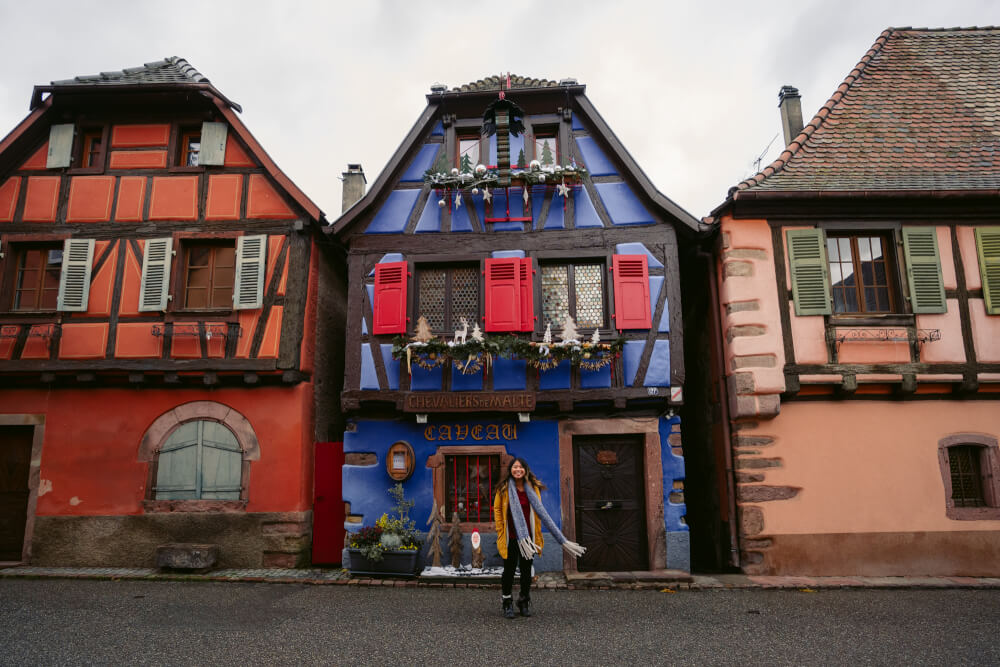
2. Don’t assume all French people are rude
Now, let’s address the éléphant in the room. You’ve probably heard it before – one of the most jarring culture shocks for first timers visiting France is that locals can be… a little mean.
And I get where that impression comes from. First off, it’s important to note that unhinged enthusiasm and over-friendliness is simply not baked into French culture the same way it is in many parts of North America, so they’re just generally more demure.
More importantly though, French people like things done their way… and unlike other countries in Europe that may be more willing to bend and cater to tourist crowds, French locals are more steadfast in maintaining their norms, often to the embarrassment and woe of clueless visitors.
Oftentimes, it feels to me like locals in touristy areas have pre-conceived notions about ‘ignorant tourists’ and so it’s assumed you are one of the bad eggs, unless you prove otherwise.
This is why learning basic French phrases and etiquette is SO crucial. Once you can show you’re putting in the work, you win instant respect points in the eyes of tourist-wary locals, and you’ll certainly have a much better time.
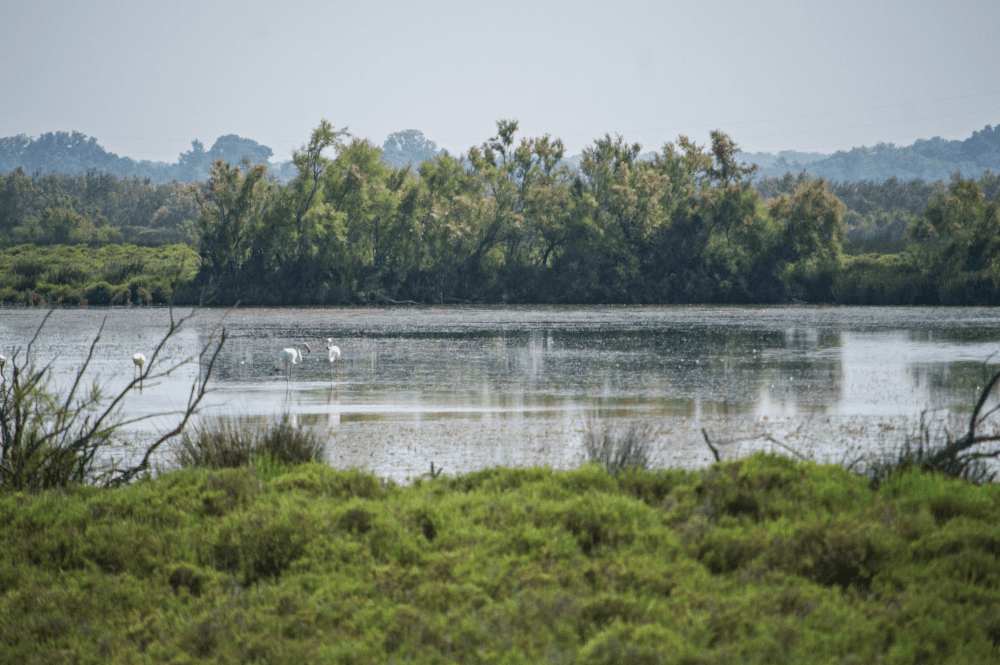
On that note…
3. Learn some basic French before your trip
Unlike in many other European tourist hubs where English is welcomed and spoken widely, France is a country where learning the local language can go a long, long way.
If there ever was a cheat code to unlocking French ‘friendliness’, it’d be speaking the language.
While many French locals (especially in big cities) speak more English than they let on, they often refrain from speaking it unless absolutely necessary, maintaining the (fair) belief that when in France, you should be speaking French.
So, here are some key French phrases you should 100% commit to memory, along with rough pronunciation guides:
- Hello: Bonjour (bon-zhoor)
- Good evening: Bonsoir (bon-swahr) -> [ say this after 6pm-ish, people kind of get snobby if you say “bonjour” in the evening]
- Thank you: Merci (mer-see)
- Please: S’il vous plaît (see voo play)
- Can I get the bill please?: L’addition, s’il vous plaît (lah-diss-yon, see voo play)
- Do you speak English?: Parlez-vous anglais? (par-lay voo ong-lay)
- Excuse me (like, sorry/when you’re trying to move past someone) : Pardon (pahr-dawn)
- Excuse me (like, when you’re trying to get someone’s attention): Excusez-moi (ex-kews-ay-mwah)
- Bye: Au revoir (oh rev-war)
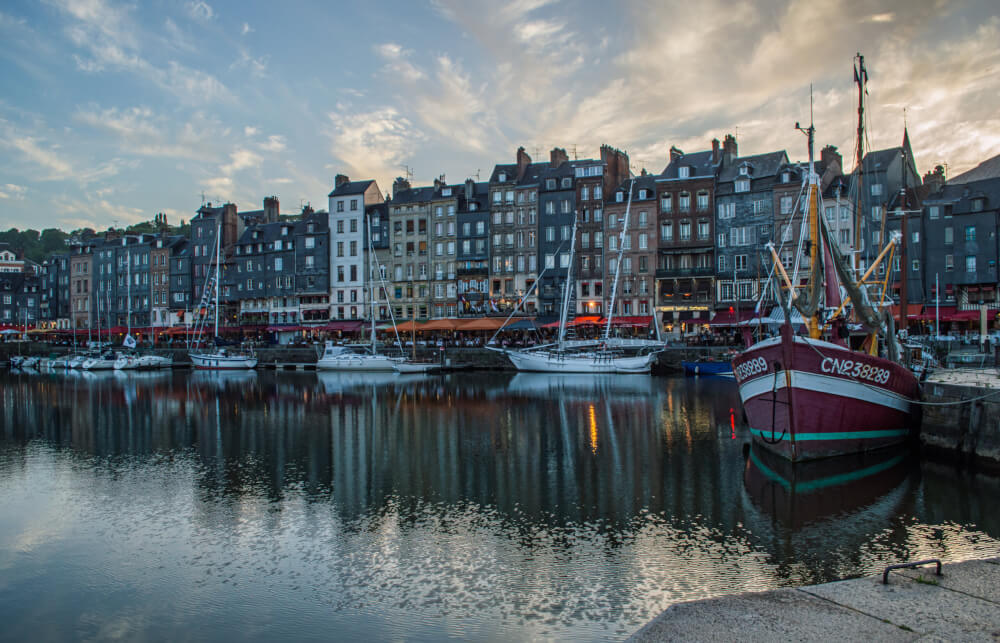
4. Familiarize yourself with basic French etiquette
Similarly, just as locals lack patience for those who don’t speak their language, they lack even more patience for those who aren’t familiar with French “ Us et coutumes ” (AKA habits and customs).
And, fair enough, there are a lot of cultural norms in France that (when breached) can come across as incredibly rude.
So, if you’d like to avoid being “yet another rude tourist”, here are some France etiquette tips to keep in mind:
Say “bonjour” (before 6pm) or “bonsoir” (after 6pm) when entering a shop: Failure to greet people when entering a shop is considered the peak of rudeness in France, so don’t forget!
When greeting friends, go for “La Bise”: In France, the standard informal greeting among “friends” is La Bise, which is basically an air kiss on each cheek while making a slight kissing sound. Hugging is actually considered more intimate than this!

When in doubt, go with “vous” : In French, there’s a difference between a formal you (vous) and informal you (tu). The latter should only be used among friends, so when addressing strangers, always go with the “vous” form!
Avoid speaking too loudly in public: When in doubt, try to match the overall volume of your surroundings. North Americans in particular have a reputation for being loud.
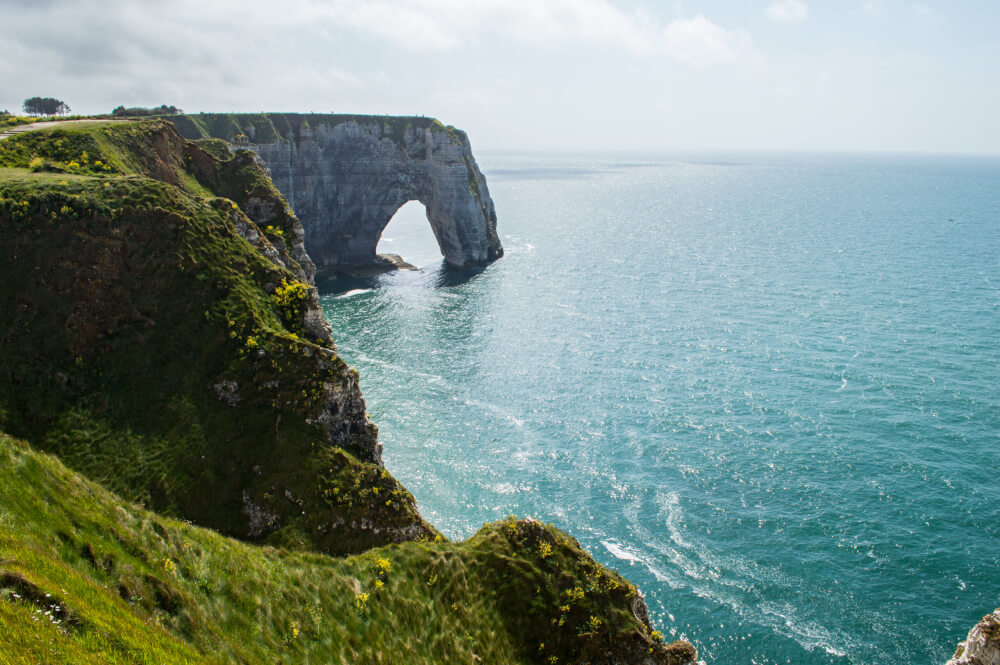
Moving past people? Say “Pardon”: I know a lot of tourists default to “excusez-moi”, which would be understood but is more meant as “excuse me” in the context of getting someone’s attention, so say “par-DON” when moving past people instead.
Avoid joking about clichés and stereotypes: French humour isn’t very self-deprecating, so avoid making jokes about common clichés and stereotypes, and certainly don’t go quoting infamous lines that start with “Voulez-vous coucher avec…”
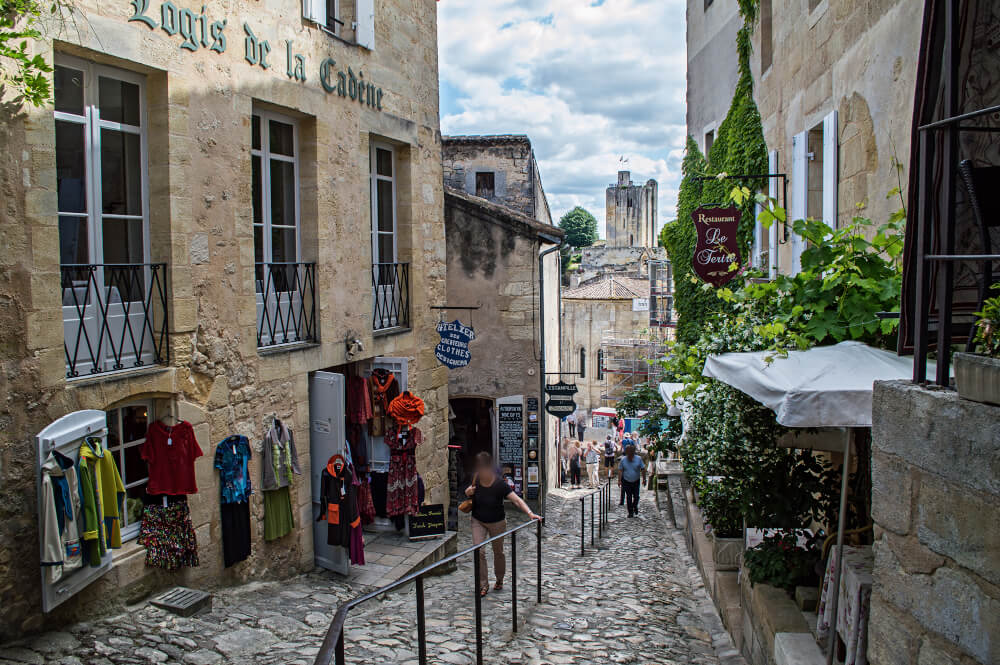
5. Prepare for plenty of jaywalking and cutting in line
Based on the cultural nuances above, it may be easy to assume that French culture is simply more formal than most.
There are two main exceptions however: jay walking, and cutting in line.
The concept of line-ups (or queuing, as the Brits like to say) is non-existent in France, so don’t be surprised if a local comes shoving past you on public transport or jumps ahead of you at the boulangerie while you wait for your 7th pastry of the day.
And as for jaywalking, while technically forbidden if you’re within 50m of a crosswalk, most people do it anyway.
Once upon a time I was travelling with a French friend who practically acted as if traffic lights were invisible. When I asked him why, he simply told me “I am French. I do not wait!”
That just about sums it up.
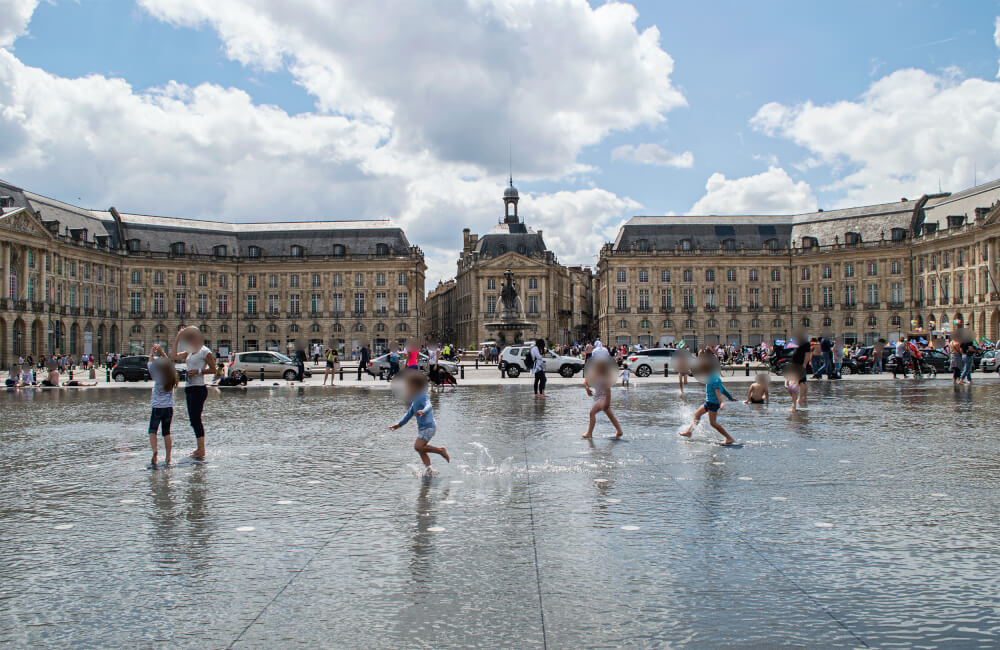
6. Keep in mind the depth of cultural diversity within France
While many France travel guides (this one included!) make reference to “French people” or “the French way of doing things”, it’s important to note that France itself is home to a lot of regional diversity.
Brittany for instance is very different to the Basque Country which is very different to Alsace which is very different to Paris.
There are of course broad similarities (which this article covers), but when it comes to researching more specific things like what to eat, what wine to drink, etc. it may be worthwhile to research for the specific destinations you’re visiting.
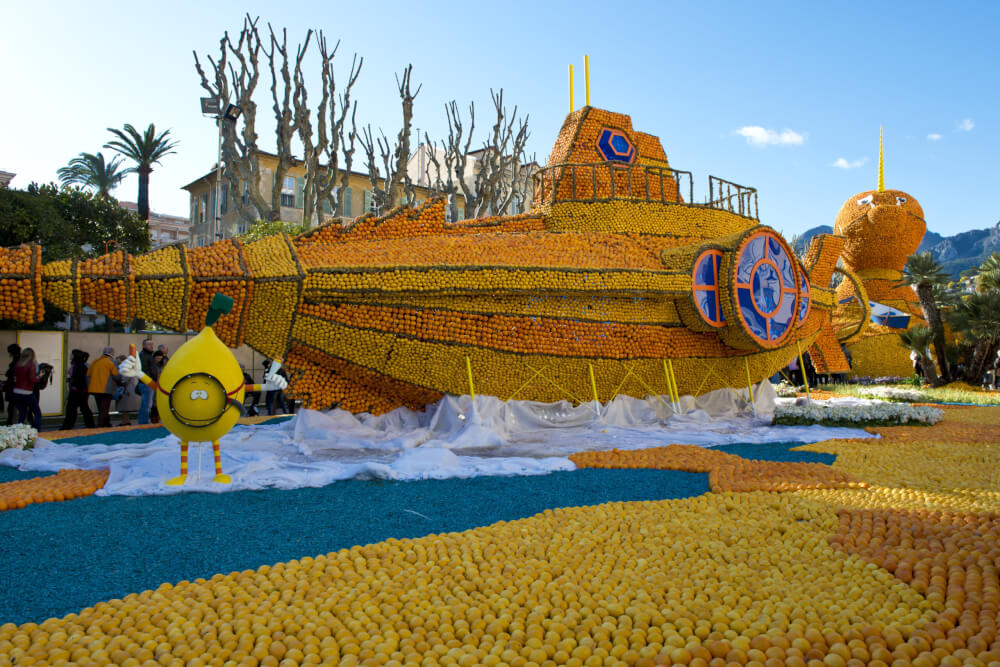
7. Prepare yourself for strikes
Another important France travel tip I have for you is to simply get used to ‘going with the flow’, because trust me: France is a country where even the best laid plans can go awry with just a single word: ‘grève’ (AKA strike).
The right to strike is considered by many to be Frencher than even the Eiffel Tower itself, and odds are, a strike may impact your trip in one way or another.
For instance, a sudden train strike on my first trip to France meant we had to take a 12-hour bus ride instead of the much quicker train from Nice to Paris. It also took me literally FOUR tries over many years to visit the Arc de Triomphe, because of random strikes and closures every time I attempted to go.
And while there are some sites like this one that announce strikes, many of them are planned with little notice, so there’s not much you can do as an international visitor besides mentally preparing yourself for the possibility.
Overall, just don’t be too upset if your plans get thrown in a raging trash fire… and try your best to make the most of the situation in any case (like this couple who chose to calmly sip wine next to said trash fire).

8. And expect random closures
Related to the point above, another important France travel tip is to prepare yourself for unexpected closures.
From personal experience, I can confirm that even if Google Maps says a shop, restaurant, or attraction is open, there’s always a chance that it might be closed when you arrive. So, it’s important to stay flexible and have a plan B ready to go.
And if you’re planning on visiting during peak vacation periods like August, be prepared for even more closures since many locals will be out of town.
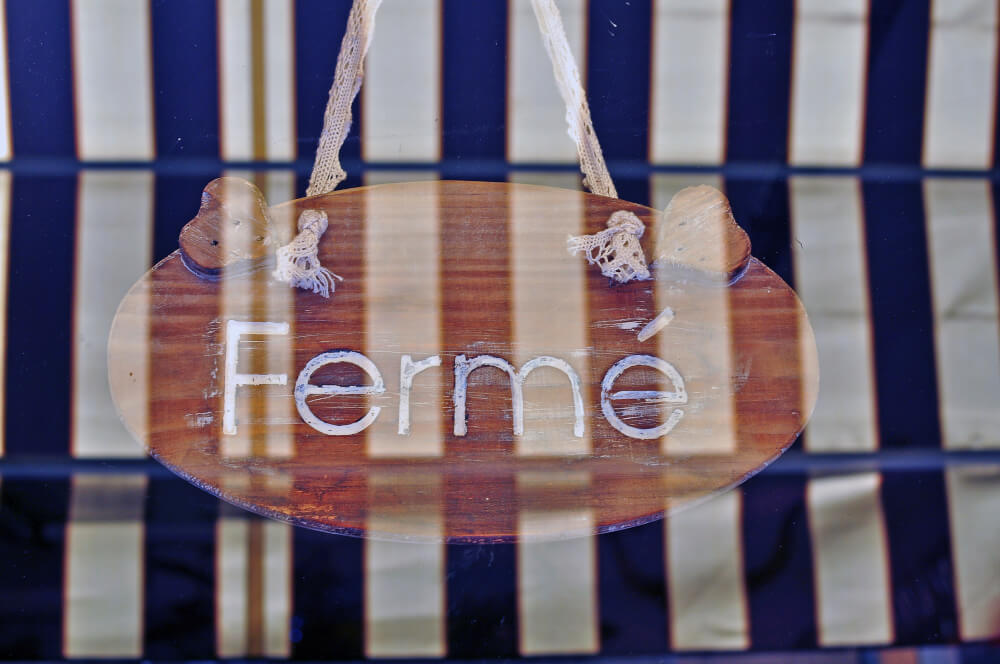
8. Consider planning your trip for the shoulder or off-season
I know a lot of people dream about visiting France in the summer, but with the higher prices and the heat, I’d actually recommend shoulder/off season instead.
Especially for big cities like Paris, winter is a much quieter (and perfectly pleasant) time to visit… plus Paris at Christmas time is every bit as magical as you’d imagine.
NOTE: If you’re looking to score some sweet deals while heading to France, you should know that sales (Les Soldes) are no joke over there. They’re heavily regulated and only happen twice a year – once in June and once in January. Learn more here.

9. Go to Alsace for Christmas markets!
While Christmas in Paris is undoubtedly magical, the Alsace region of France has some of the most absurdly amazing Christmas markets in Europe.
Go to them.
I’ve already written out a full list of the best Christmas markets in Alsace, but here are some of my guides to specific markets so you can read more:
- Strasbourg Christmas Market Guide
- Colmar Christmas Market Guide
- Obernai Christmas Market Guide
This is one of the most magical times to visit France, and if you plan your visit for earlier in the season (late November, rather than close to Christmas), you’ll usually be able to avoid the bulk of the crowds.
Here are my top must-knows for visiting Christmas markets in Europe if you want to learn more.
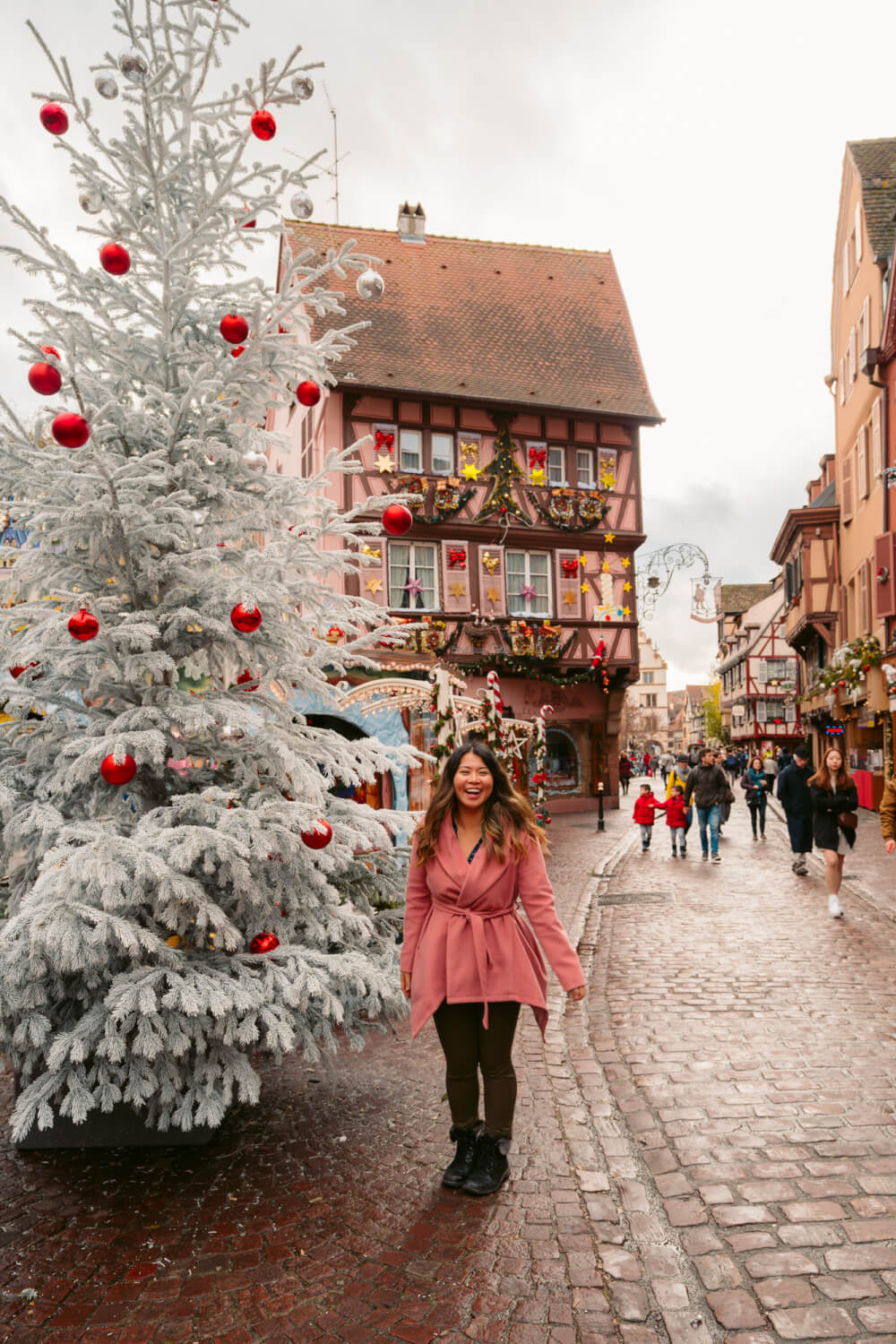
10. Expect at least some scaffolding/restoration work
The lengthy history of France is one of its most enticing selling points.
But, it has to be said, for every drool-worthy building that boasts centuries of tales, there’s a scaffolding company ready to make a fortune.
So, just to get your expectations in check, expect scaffolding. And lots of it. Old, beautiful buildings require maintenance, and you’ll probably encounter the byproduct of said maintenance during your trip.

11. Be wary of petty theft and scams when you visit France
For first-time visitors, another important France must-know is that there are many professional pickpocketers and scammers frequenting tourist hubs.
Your best defence against them? Learning all their tricks beforehand.
You can learn the most common pickpocket techniques and how to avoid them in my post about how to avoid pickpockets in Europe , but overall, the key is to always be vigilant and keep an eye on your belongings.
Pickpockets thrive on distraction, and tend to operate in high-traffic areas that have a lot of people/tourists (e.g. train stations), so be especially careful to not let anyone get too close.
Here are some other ground rules to keep in mind for avoiding scams in France:
- Do not take free stuff: Often scammers will offer you a rose or a friendship bracelet for “free” then demand money. In more extreme cases, they may even forcibly tie a friendship bracelet on you then demand payment, so be cautious in busy touristy areas.
- Don’t sign any petitions: In touristy areas, there is often a scam (usually run by groups of young women) where they ask you to sign a petition and then either demand a donation from you, or distract you as someone else picks your pockets. Be sure to ignore and avoid!
- Do not blindly accept help from strangers: Generally, French locals will not approach & help you unless you ask for it. In cases of overly helpful strangers that come to YOU, often this is a scam, i.e. offering to help you buy a Metro ticket, then buying you the wrong one (e.g. a child’s ticket) while pocketing the profit.

12. Prioritize public transport for city to city travel
Now, onto France transport tips!
First off, if you are mainly visiting French cities during your trip, renting a car will likely not be necessary.
The French train system is robust and covers over 3000 stations across the country. For those on a budget, there are also bus companies like Flixbus, Eurolines and BlaBlaBus that offer affordable connections, and for quicker commutes, there are also 30+ airports in France, many of which are well served by budget airlines like Ryanair and easyJet.
So, I’d recommend hopping on Omio to compare all the different options at a glance.
That said, if you want to frolic in nature nature, explore remote villages or roll around in glamorous chateaux, you will probably need to rent a car, in which case here is a post to help you figure out how much renting a car in Europe really costs .

13. Book train tickets in advance for the best deal
For train travel, the national rail company in France is known as the SNCF (Société nationale des chemins de fer français).
The crown jewel of their offerings is the TGV (Train à grande vitesse, or “high speed train”), which are fast trains that can get across the country at truly alarming speeds, like this world record-setting ride which hit 574.8 km/h (or 357.2 mph).
There are also Intercity trains and TER trains that are less quick but serve regional and local routes.
In any case, booking in advance is the best way to ensure good deals, particularly on TGV trains, where reserved seats are mandatory and can sell out.
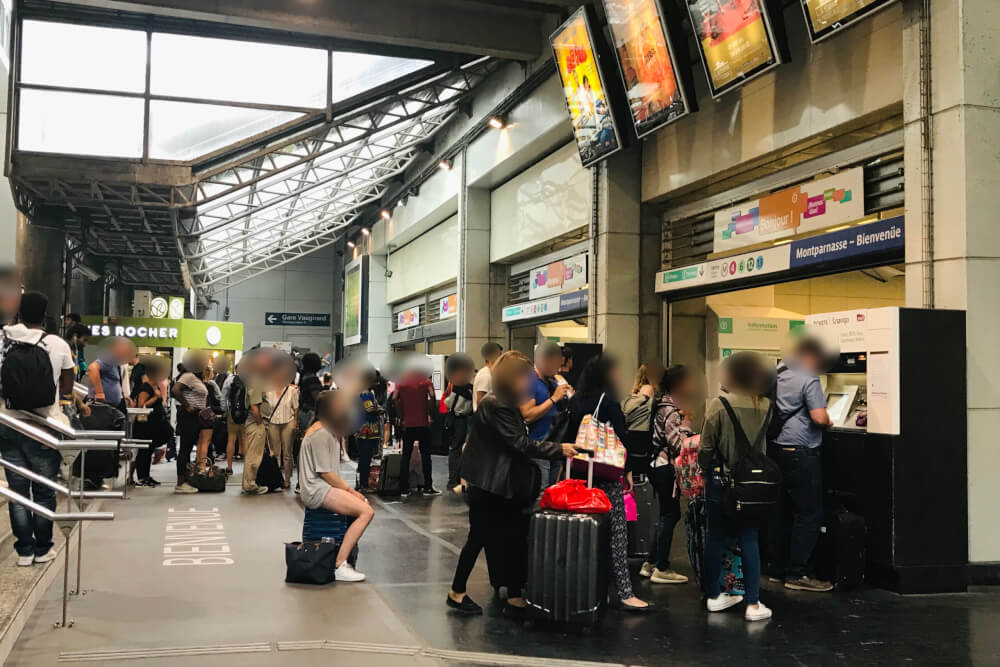
14. Consider Ouigo trains if on a budget
If you’re on a budget, another option to look into is Ouigo trains, which are like a budget version of the TGV.
They’re a bit less fancy and you need to pay extra for additional perks like extra bags but it can be really cheap if you book in advance.
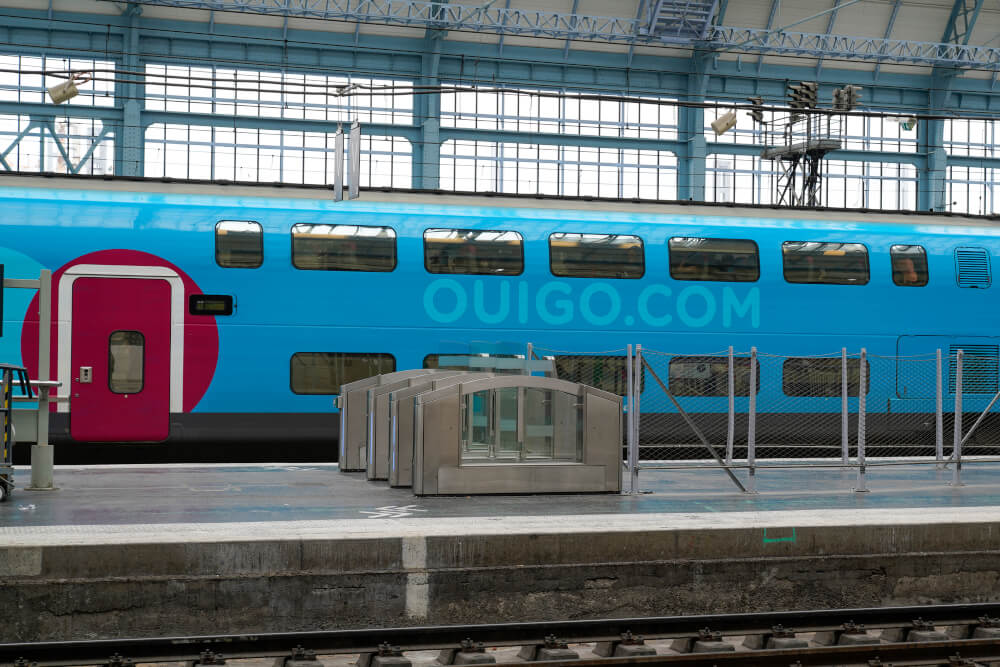
15. Use the SNCF Connect website to your advantage
French train stations can be stressful, so whenever possible, I’d recommend booking your tickets beforehand… unless you particularly enjoy panicking in crowded spaces.
Luckily, the SNCF Connect website makes it easy.
You can easily see their best offers here , or search up your departure point/destination to see a price calendar that helps you identify the cheapest dates and times.

16. Know the ground rules for public transport
When it comes to using public transport in France, there are a few important must-knows that I think will make your experience smoother and more affordable.
So, here are some tips for using public transportation in France:
- Look for deals: Depending on the city, you’ll often special discounted tickets which can save you a lot of money compared to paying full price (e.g. youth tickets, special weekend tickets), so be sure to look into discounts and see if any apply to you.
- Always validate and hold onto your ticket: In France, there are ticket checkers who make sure you’ve paid for and validated your fare correctly. Sometimes they will even check you after you’ve gotten off the train (e.g. at the top of escalators at Metro stations), so do not throw your tickets away until you’ve left the station.
- Avoid public transport during rush hour and during big events like sports games: Trying to hop on Metros or buses when thousands of locals are trying to get to/from work (or to a big event) is truly one of the biggest travel mistakes you can make in France, so plan around it!
- Lastly, let people exit trains/buses first before storming in: This is common sense, but unfortunately not so common, so remember this little France etiquette tip!
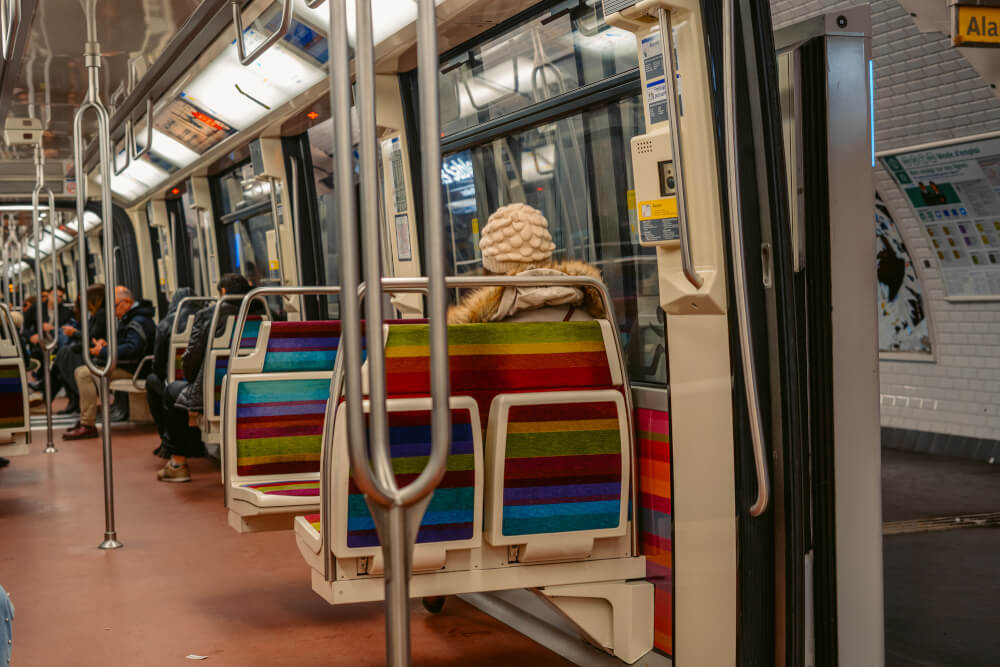
17. Learn the tricks to saving money on French attractions
There are a few things that are inevitable when you visit France for the first time. For instance, you will probably eat enough pastries to fed a small village. You will probably also drop a lot of dough (heh) on pricey attractions.
They have to pay for all that scaffolding somehow, after all.
Don’t worry though, there are a lot of secret (and not so secret) ways to save money on attractions when visiting France. Here are a few of my favourites:
- Book in advance: This will save both time and (sometimes) money.
- Age-based discounts: Usually there are discounts for children, youth (under the age of 26) and seniors (usually 60+)
- Residency-based discounts: Many major museums offer free or discounted admission for EU residents under the age of 26.
- Student discounts: Be sure to get an ISIC Card as this is an internationally recognized student ID that costs about twenty bucks, but will save you at least that much in discounts. Some attractions won’t accept your local student ID, so having this is important.
- Attraction passes: Many cities will offer passes that bundle multiple attractions into one price. If you plan to see a lot of stuff, this can save you a LOT of money.
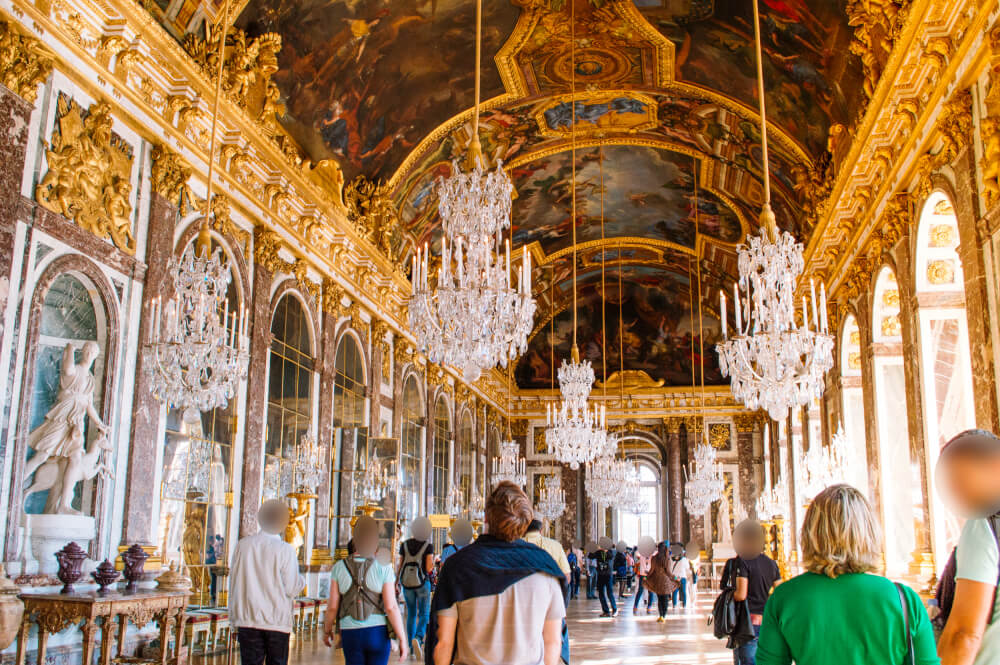
18. On a budget? Prioritize free museums and sights
Of course, the ultimate way to save money sightseeing in France is to simply prioritize all the amazing free things there are to see and do. This is one of my top Europe backpacking tips .
All over the country, there are free things to ogle and experience, from grandiose museums and architecture to street art and fun festivals, all of which are stunningly gratuit. .. like these amazing free things to do in Paris .
So, from one cheapskate to another, please milk them for all they’re worth.
PS: Many of museums across France offer free admission on particular days of the month, so be sure to give those dates a Google prior to your visit.

19. Learn how to avoid mediocre, tourist trap restaurants
French cuisine is world-renowned, but it can be a bit of a struggle to find the right places to eat when visiting France for the first time.
The reason is simple: good, authentic restaurants are unlikely to make themselves easily accessible to tourists. In contrast, the restaurants with English menus, free WiFi and big photos to explain their specialties are (as you might assume) not the best in quality or price.
SO, what are some ways to avoid getting tourist trapped when dining out in France? Here are some ground rules.
- Dine far away from tourist attractions: Generally, these will have a poor price to quality ratio. Instead, walk a few blocks over before starting your food hunt, or do some prior research to find well-rated restaurants near you.
- Be sure to check reviews: Reviews aren’t always 100% accurate, but they can be helpful in showing you immediate red flags like scammy prices.
- Avoid places with big photos and menus in a bajillion languages: This is usually a sign that the restaurant caters to tourists, so will likely be (at best) overpriced or (at worst) lacking in quality food.
- Steer clear of places with an over-eager host: If there’s a pushy server outside asking you to sit down, odds are this won’t be the best place to eat.
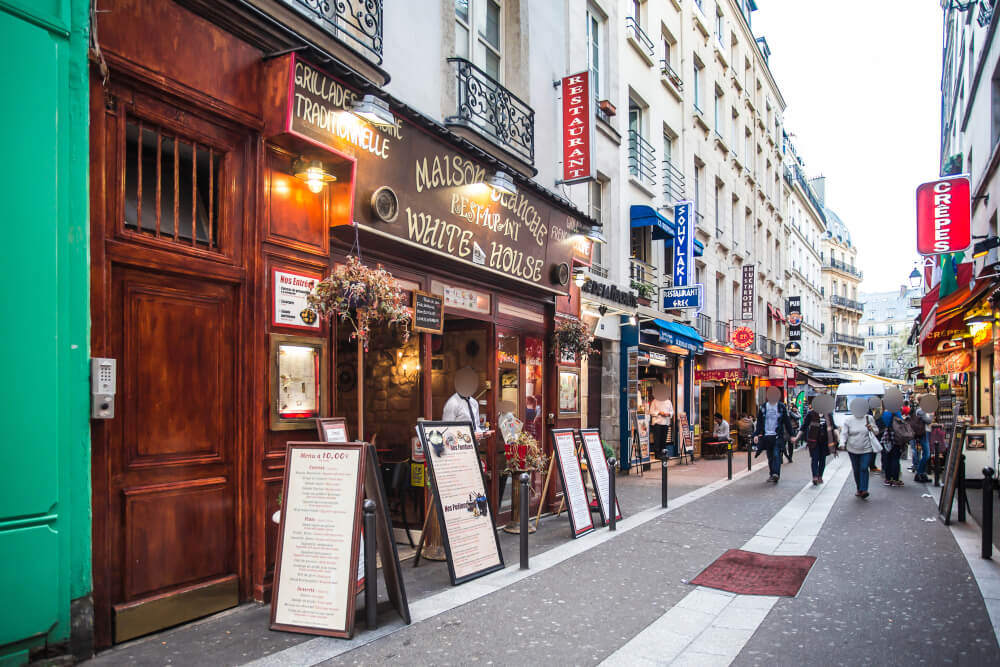
20. Know the tricks to saving money on dining out in France
So once you’ve found your (non tourist trappy) restaurant of choice, what are some ways you can enjoy while saving money?
As someone who loves food and saving money in equal measure, here are a few tricks to take advantage of:
- Splurge at lunch: Many places will offer special deals for lunch, so keep an eye out for those!
- Learn how to correctly ask for tap water: If you’re looking for free hydration, be sure to ask for “une carafe d’eau” or they will assume you want bottled water, which can be as much as 7 euros per bottle! Although take note that it’s common/expected to have a paid drink with your meal as well, like wine or beer.
- Try the plat du jour (dish of the day): Many restaurants in France will offer this as a special in addition to the regular menu offerings – it’s usually cheaper or unique in some way, so nice to try if it sounds good!
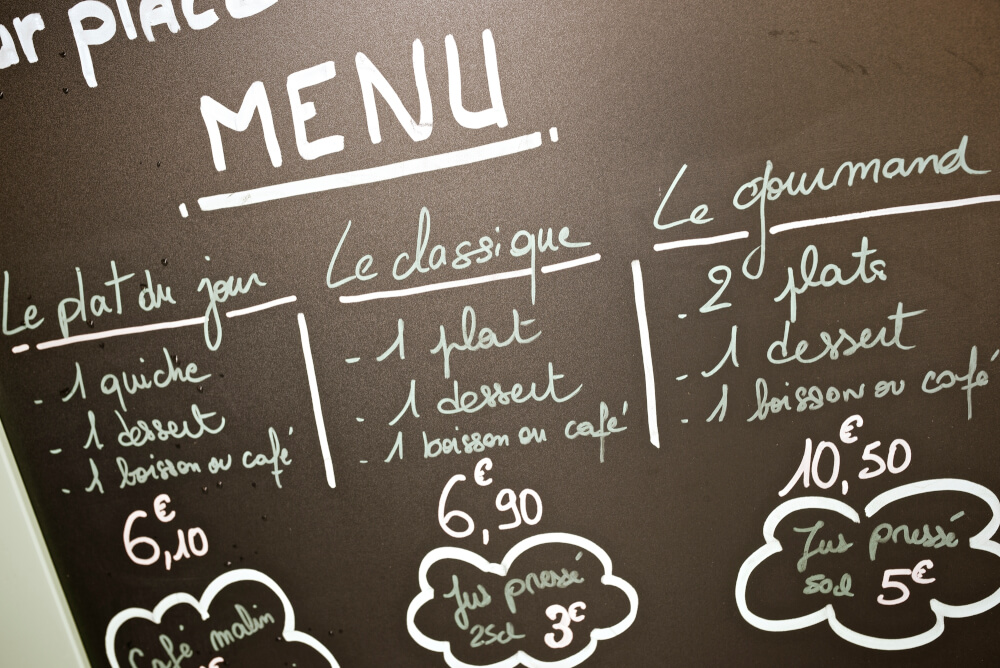
21. Familiarize yourself with the structure of a French menu/meal
Dining out in France can be intimidating for first-timers, and also confusing due to words that are different in English vs. French.
For instance, a menu in France can refer to a paper list of dishes, but it more often refers to a combo that includes multiple things for one set price.
So in a restaurant for instance, this may be a meal that comes with an appetizer, main course, dessert and wine for one price, or in fast food restaurants for instance, often a “menu” will mean a combo that comes with fries and a drink.
The more common word for the menu in France is “ la carte”. This is why there’s sometimes the distinction between ordering the “menu” (e.g. the set meal that comes with multiple courses for one price) or ordering “à la carte” (e.g. ordering individual things off the list of dishes they offer).
Another confusing thing is the word entrées. Whereas in North America, entrée refers to the main course, in France it refers to the starter or appetizer and the main course is the plat principal (often shortened to just “plats” on menus).
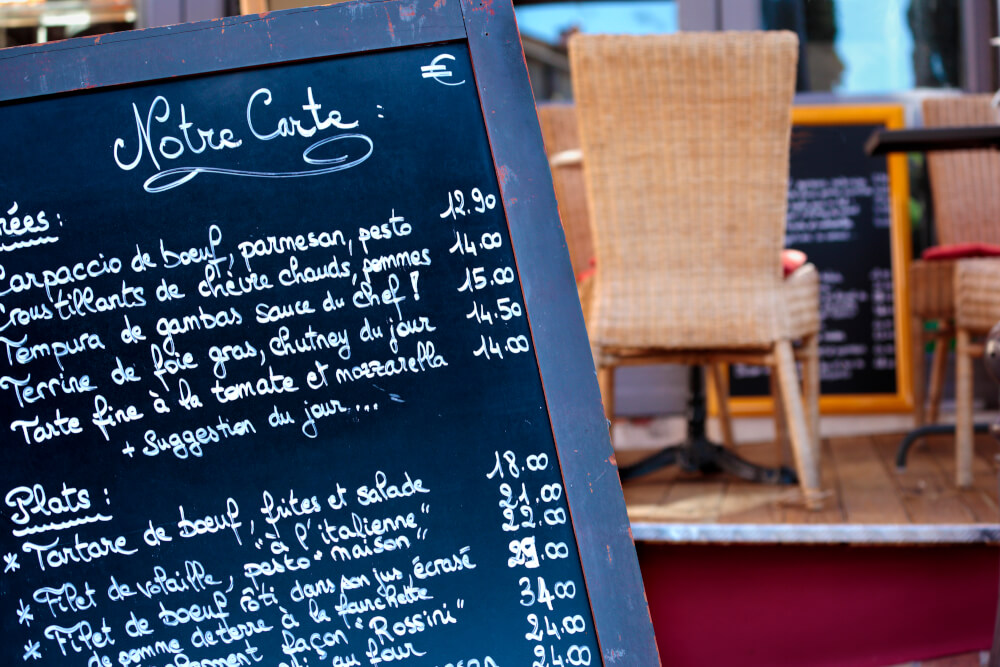
So, to be clear, the structure of a French meal usually goes like this:
- L’Entrée: An appetizer
- Le Plat Principal: A main course
- Le Fromage: Cheese (Self explanatory), sometimes served with a light salad before
- Le Dessert: Sweets that finish the meal
There’s a misconception out there that French people eat cheese for dessert, which isn’t entirely true – it’s just that they believe cheese should come after the main course, and many choose not to (or have no room for) a sweet dessert after.
For particularly indulgent evenings, many will also enjoy an Apéritif before eating the meal, which is a pre-dinner drink that whets the appetite, as well as a Digestif after the meal, which is a post-dinner drink that aids digestion.

22. Learn French restaurant etiquette
Alright, now that you know how the menu works, here are some additional French travel tips related to the science/art of dining out in France:
Make reservations: If you’ve got your heart set on a particular restaurant during your trip in France, it’s best to reserve a table in advance, especially for peak periods like weekends.
Wait to be seated: Seating yourself is not common France, so don’t do it unless there’s a sign saying so (or face the wrath of your server).
Get your server’s attention if you need something: Generally speaking, the ultra-friendly and proactive customer service you get in North America doesn’t really exist in France, so if you need anything after your order has been taken/after your food has arrived, you must take the initiative to flag down your server.
Avoid customizing your order with substitutions: This is not very common in France, as it’s usually assumed the chef knows best.
Ask for the bill when you want it: It will not come automatically, as they consider it rude to interrupt you during your meal.
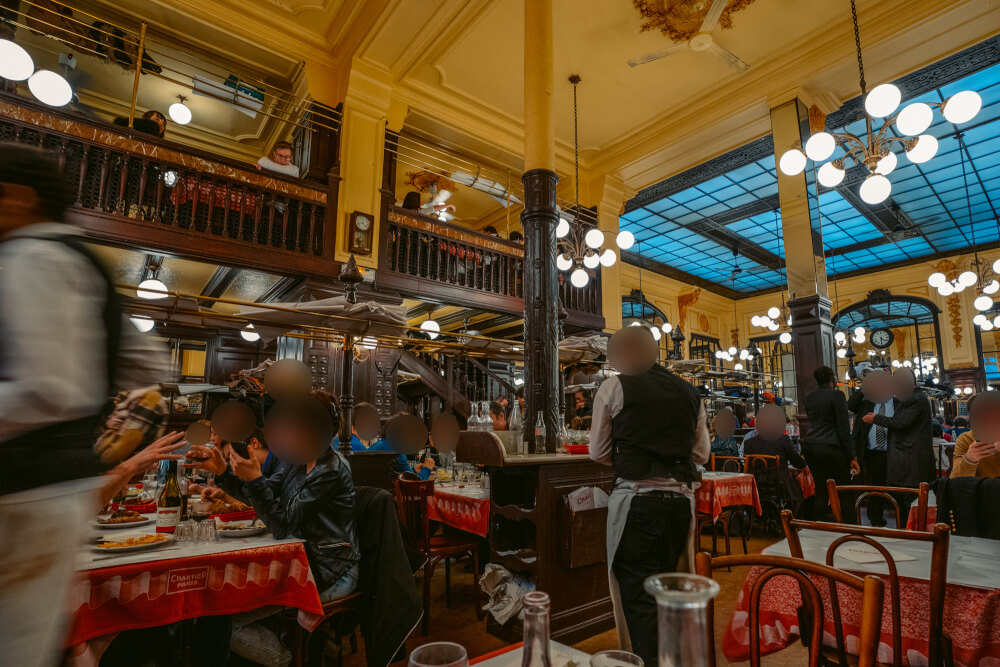
23. Learn how to tip in France
In France, a 15% service charge is included in your bill, so the tipping culture here is definitely less prominent than in North America.
Opinion is divided on whether or not you should still tip on top of this service charge – younger locals often won’t bother with a tip at all. For me personally, it comes down to what “feels right” (so Canadian, I know!)
If you feel your server deserves a bit extra, then 5-10% would be acceptable… but you don’t need to feel obligated like you might in North America.
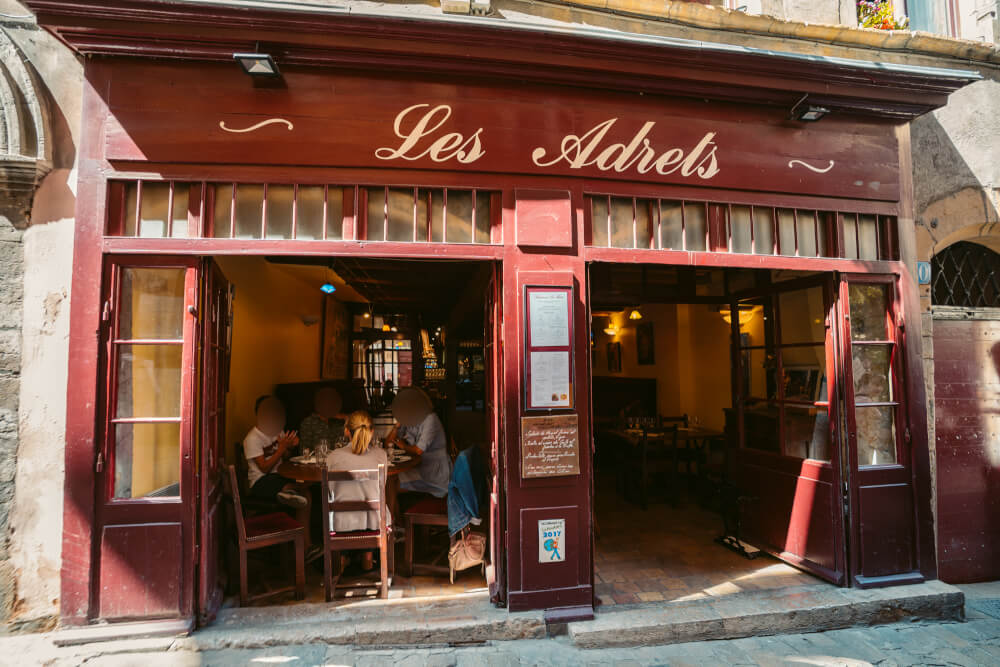
24. Have a quick search of regional specialties before you go
A lot of first time visitors to France will be familiar with some classic dishes – from the infamous escargot and frog legs to beloved classics like French onion soup and pastries.
Of course, it goes without saying that there is much more to French food than that.
French cuisine (much like its culture) has a lot of regional differences, so wherever you travel, be sure to sample the local specialty wherever you are instead of simply picking what you consider to be “typical French dishes”.
… and for the best results, pair them with local wine too.

25. Revamp your concept of “casual”
In terms of what to wear in France, contrary to popular belief, or what you see from fashion bloggers and Emily in Paris, not everyone in France is a fashion model dressed to the nines everyday.
That said, the default casual look in France is definitely elevated when compared to the standard ‘sweatpants, flip flops, and athleisure’ casual commonly seen in North America.
So if you want to blend in a bit more while in France, focus on clean neutral basics, and things that emulate a sort of effortless chic.
Although of course, at the end of the day, just wear what makes you feel comfortable and confident. Trust me, they’ll be able to tell you’re a tourist no matter what you wear.

26. Don’t bring any suitcases you can’t carry
But speaking of France packing tips, another important must-know is that any bag you bring should be one you’re comfortable carrying yourself.
Sure, you might think that there’s no need for lifting your bag if you’re checking it, but there are a million and one scenarios where you might have to end up carrying your suitcase in France, like…
- Your hotel or accommodation unexpectedly has no elevator
- The elevator you were counting on at the train station is out of order
- You need to carry your bag up some ancient staircase to get to your accommodation
- You need to lift your suitcase on/off the train you’re taking
So yes, get that strength training in now, and pack as light as possible.
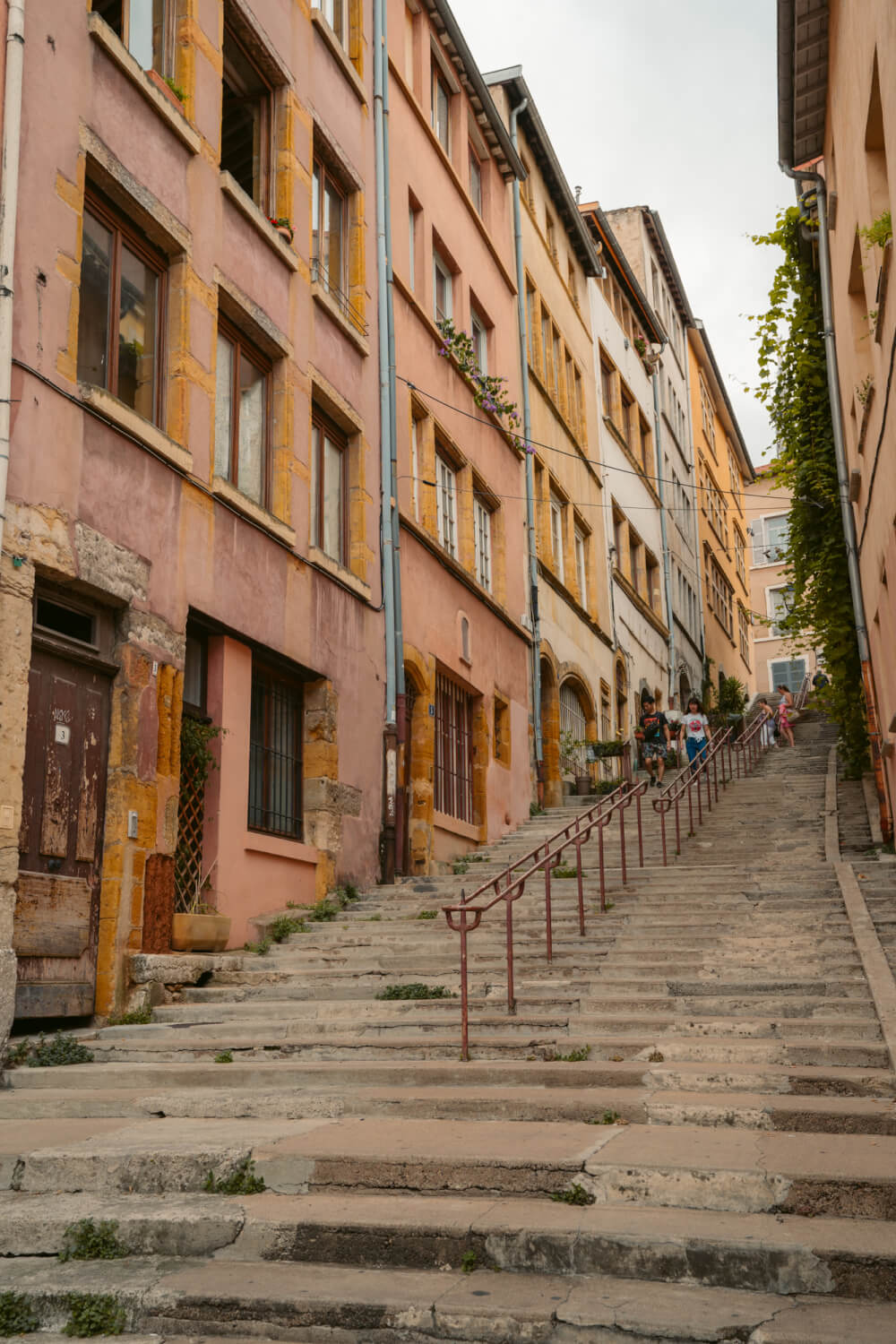
27. Carry (at least a bit) of cash
While cards are accepted in many places around France, it’s still important to carry around cash, whether for small purchases or for essentials like using the washroom. Keeping coins is also a good idea!
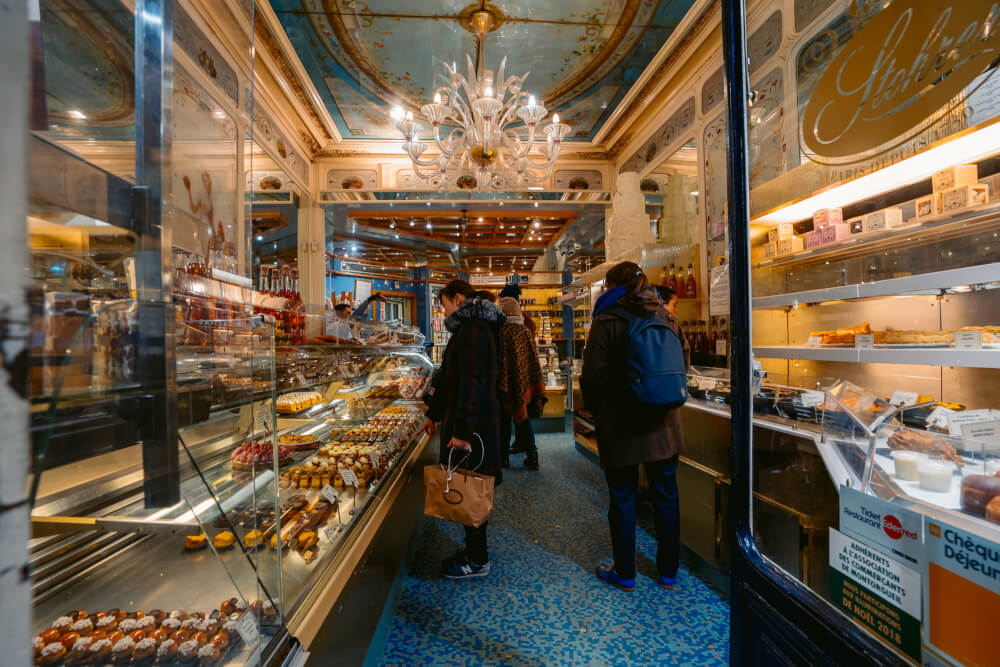
28. Claim VAT refunds at the airport
France is a popular destination for shopping, especially if you’re into French brands and luxury goods.
SO, if you’re from outside the EU and plan to do a lot of shopping, you may qualify for a VAT tax refund when you leave France. This can amount to huge amounts depending on what you buy!
To qualify, you have to be a non-EU resident older than 15 years of age, and you need to spend more than 175 euros in one store in one day.
Here’s more info on how to claim your VAT refund before you leave France.
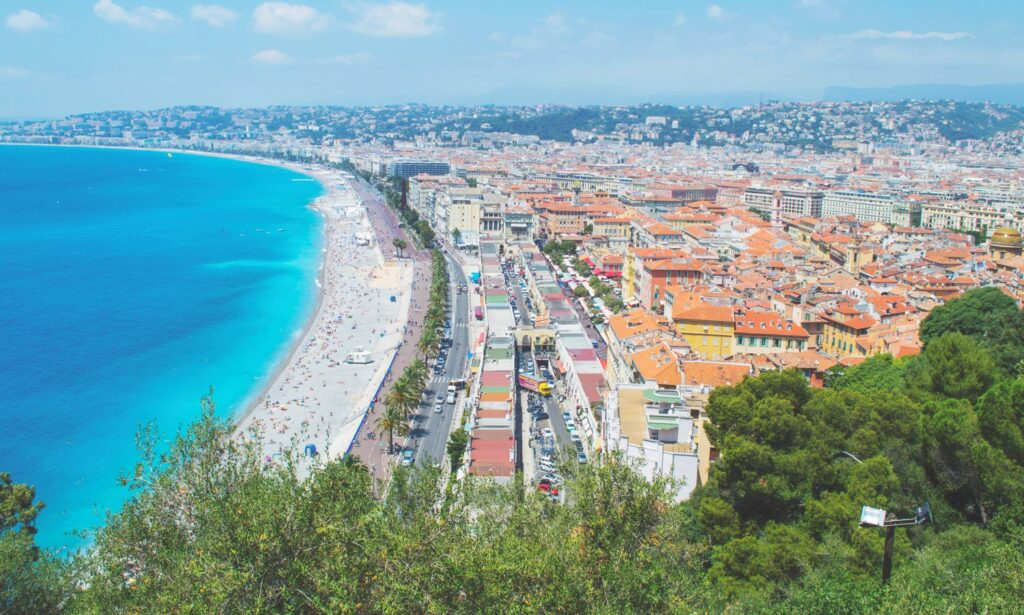
29. Floors start at zero so don’t get confused
Another random France tip (which will be no news to you if you’ve seen Emily in Paris) is that the floor system in French buildings is different to what we see in North America.
Whereas in North America, the ground floor is often considered the 1st floor, the ground floor is considered its own separate entity in France (i.e. Floor 0) and then the next one above that would be the 1st floor.
… So, if your hotel key isn’t working, this might be why!
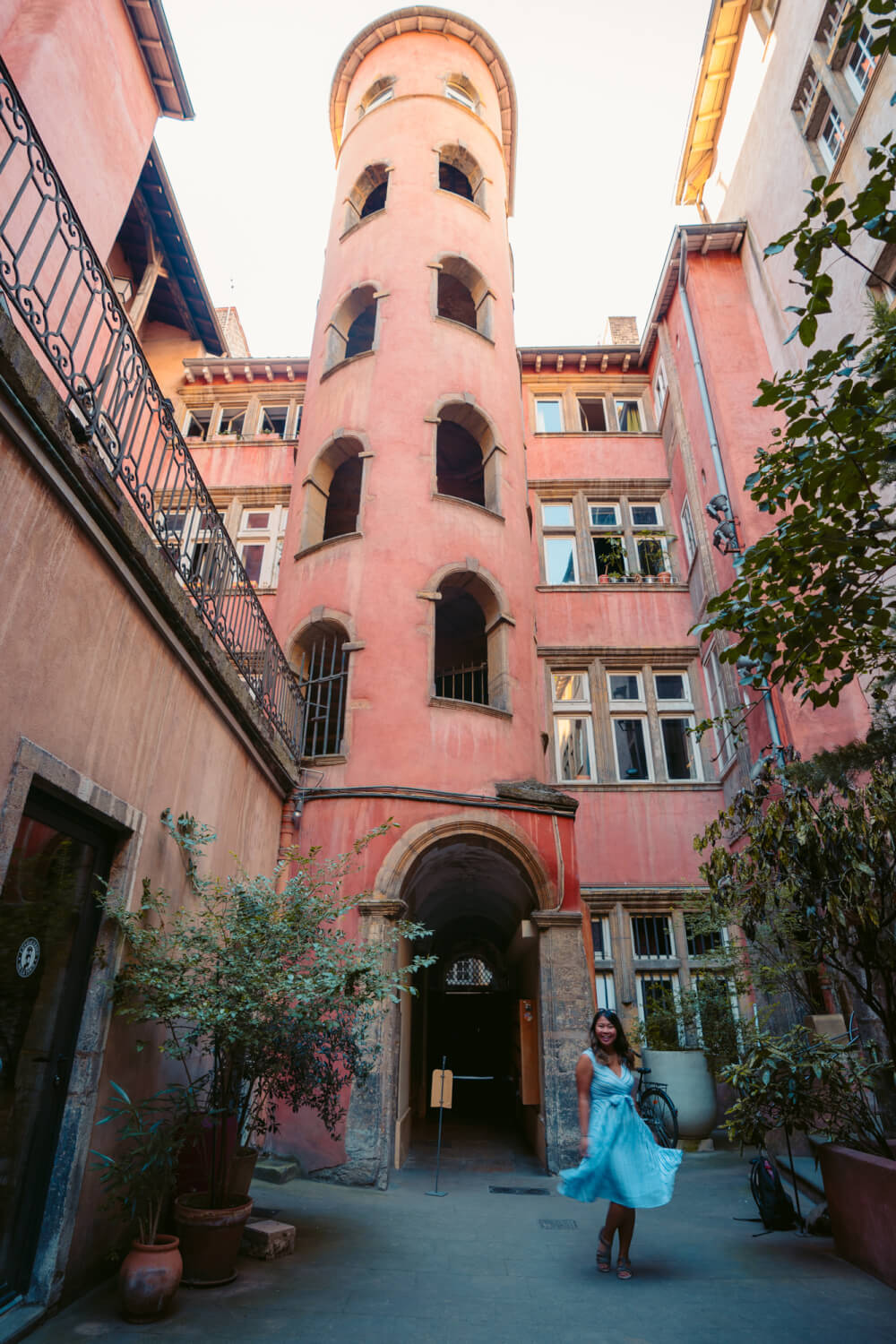
30. Try to buy your alcohol (from shops) before 10pm
This is a rather niche France travel tip, but one that has gotten me one too many times, so I’m sharing it anyway.
While there are no official alcohol sale restrictions in France, some supermarket chains and gas stations won’t let you purchase booze after a certain time (usually around 9 or 10pm).
So, if you’re hoping to get a bottle of wine to finish the evening, make sure you do so early. Although if you’re desperate, Uber Eats can deliver alcohol, as well as some “convenience stores”, although you can expect inflated prices from both these options.

31. Know that Disneyland Paris is not in Paris
Lastly, if you’re planning on adding Disneyland Paris to your itinerary, I would definitely recommend doing some additional research because despite the name, the park is actually about an hour away from Paris proper.
And while I personally think Disneyland Paris is a great time, a lot of visitors from abroad who have been to other Disney parks often find it disappointing.
So, when choosing day trips or planning your itinerary, definitely consider if there are other places that might be a better use of your time… because as you should know by now, there’s a lot to discover in this country!
Keen on seeing Disneyland Paris? Here are some of my best guides to help you out:
- 20+ tips for visiting Disneyland Paris
- An insider guide to Disneyland Paris’ best secrets and hidden gems
- How to plan a day trip from Paris to Disneyland Paris
- A guide to the Disneyland Paris Castle
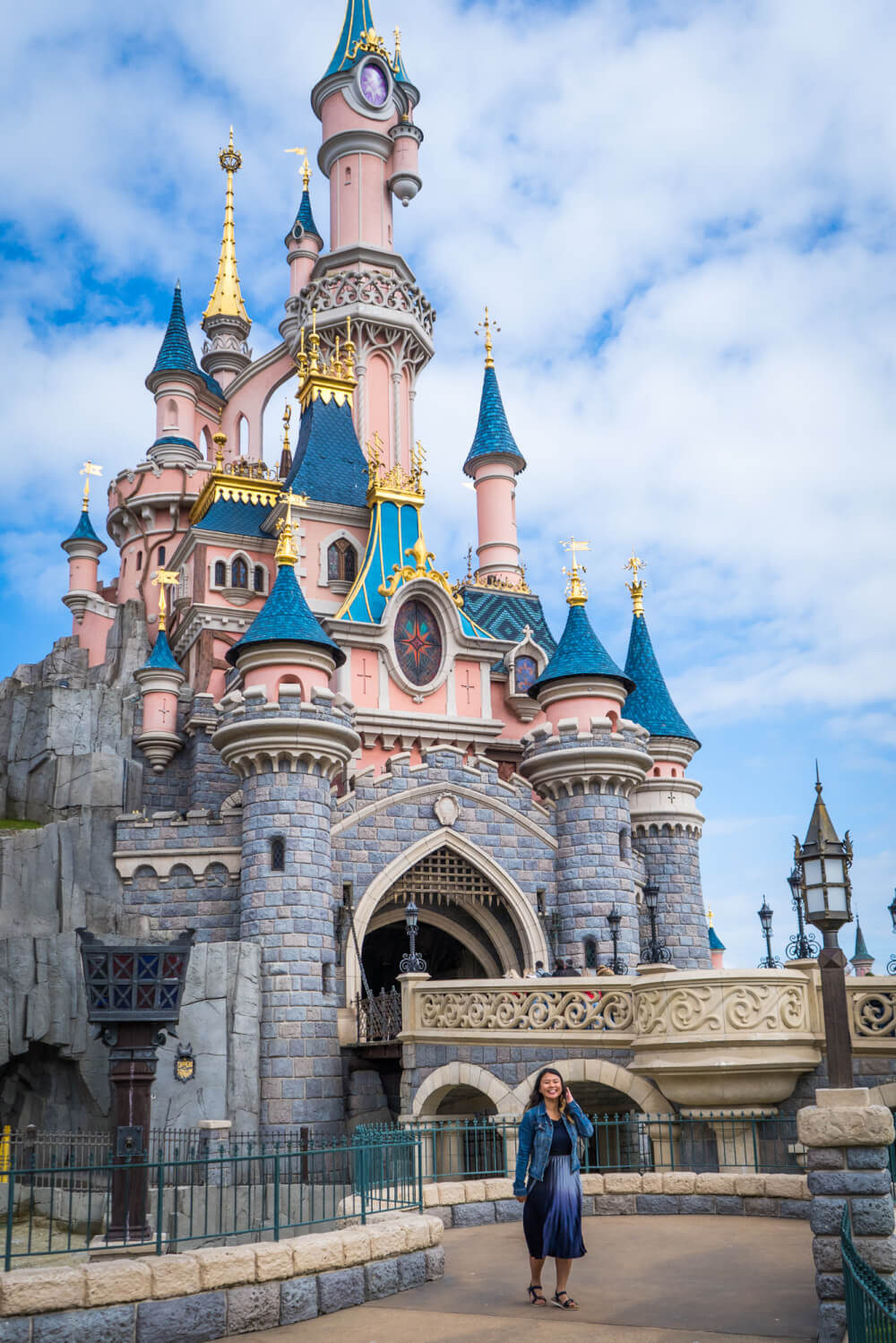
I hope this list of France Travel Tips was helpful!
The fact that you’re still reading this is both an honour and a miracle. This was a VERY long list of travel tips for France, but if you have any more questions, let me know in the comments.
My Go-To Travel Favourites:
🧳 Eagle Creek: My favourite packing cubes
💳 Wise: For FREE travel friendly credit cards
🍯 Airalo: My go-to eSIM
🏨 Booking.com: For searching hotels
📷 Sony A7IV: My (amazing) camera
✈️ Google Flights : For finding flight deals
🌎 WorldNomads: For travel insurance
🎉 GetYourGuide: For booking activities
Leave a Comment Cancel reply
By using this form you agree with the storage and handling of your data by this website. *

France Travel Guide
Looking for an in-depth France travel guide ?
Then you’re in the right place!
There’s a reason why France is consistently ranked as the most visited country in the world:
Beyond the Parisian landmarks like the Eiffel Tower and the Arc de Triomphe, there is so much to see in this Western European nation.
From the beaches of Southern France to the wine country to the Alps in the east, this country offers a little bit of everything. Whether you want to explore centuries-old cities or have an epic outdoor adventure, you can do it in France.
No trip to France is complete without a few days in the City of Lights — Paris!
Paris is home to five UNESCO World Heritage Sites, including historic spots like Château de Versailles and more modern architectural works like Le Corbusier’s Maison La Roche.
That blend of old and new is present throughout Paris, where fashionable, modern shops and cafes exist among buildings that were constructed nearly 1,000 years ago.
And of course, the culture of Paris is one of its biggest draws; see some of the greatest works of art at the Musée du Louvre and the Musée d’Orsay or see the Paris Opera at the Palais Garnier.
You can’t talk about France without mentioning the food! There are so many delicious dishes to try throughout the country, as each region has a cuisine all its own.
Sample seafood dishes like mussels in white wine sauce in the Normandy region, enjoy a quiche in Lorraine, and pair a glass of red with some escargot in Burgundy.
Wine is a big part of French culture, of course, and there are many vineyards you can visit throughout the country to get a taste for one of France’s biggest exports. Don’t forget the cheese!
Keep reading to dive into resources that will help you with planning a trip to France in western Europe.
Note: This guide to France travel contains affiliate links to trusted partners!

Use this France travel map to begin planning your trip to this incredible country!
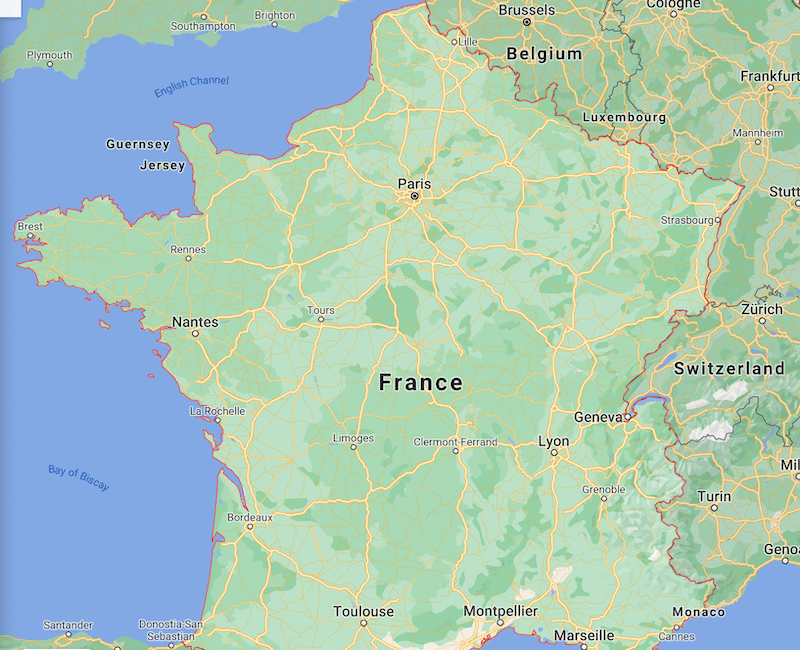
Click here for an interactive Google Map version of the above graphic.
France Travel Itineraries
Discover where to go in France including top things to do!
Paris Travel Guide
Use this Paris city guide section to plan the perfect trip!
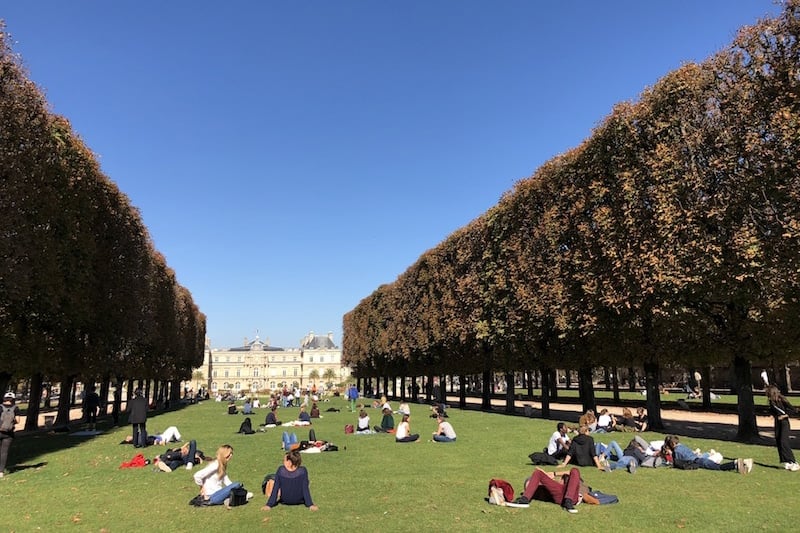
Solo Travel In Paris: A Romantic Guide For One
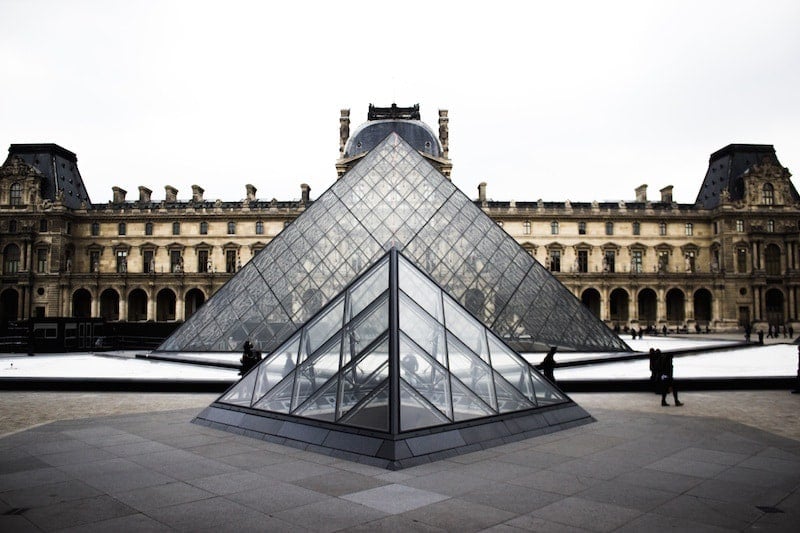
How To Enjoy Paris On A Budget

6 Amazing Apps For Cultural Immersion In Paris, France
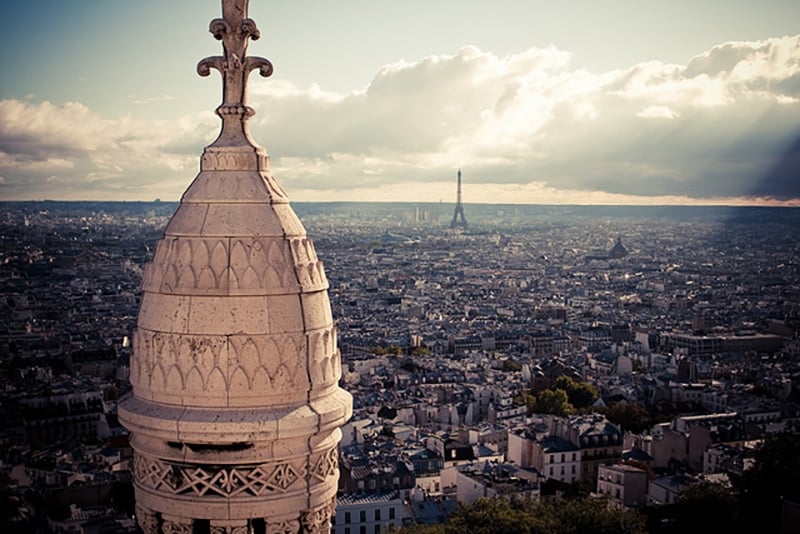
Taking In The Best View Of Paris From Sacré-Cœur Basilica
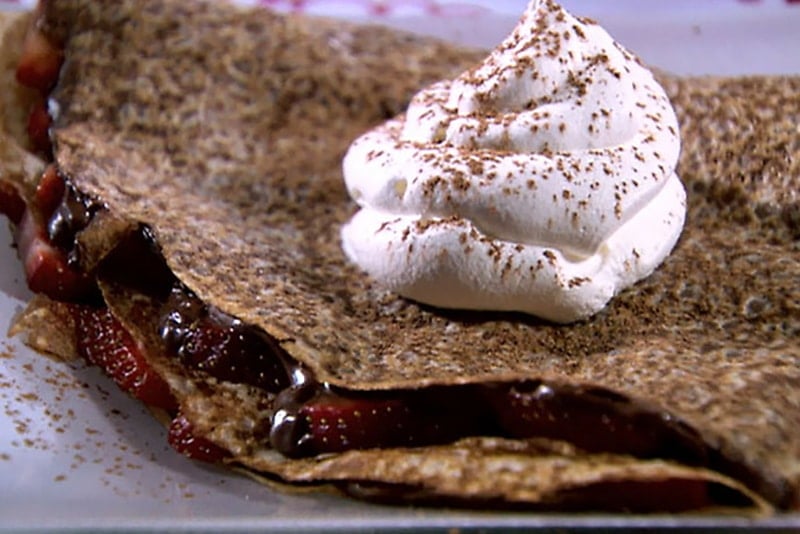
Cheap Travel: Exploring Paris For Less Than €25 Per Day
Lyon Travel Guide
Plan a memorable trip to Lyon with the help of these ultimate guides to the city:
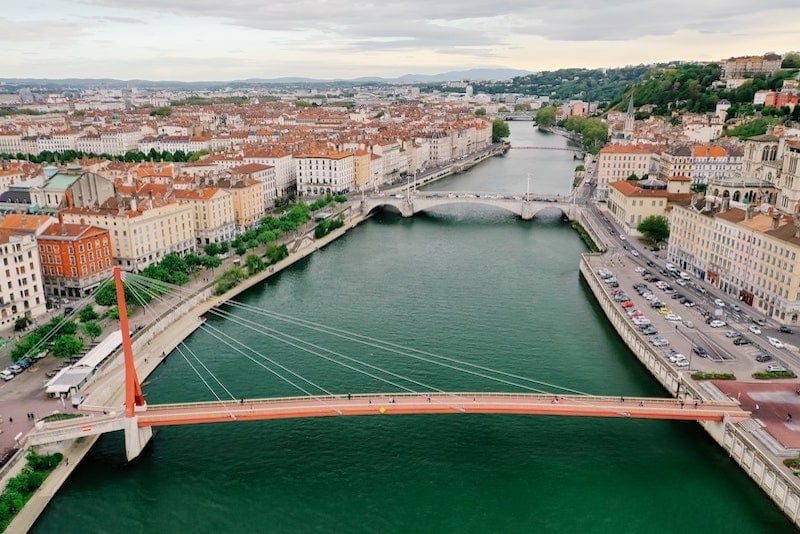
2 Days In Lyon: The Ultimate Itinerary + Tips
Nice Travel Guide
This Nice tourist guide section shares fun things to do in this beautiful city!

3 Stunning Day Trips From Nice, France

France Fun: Exploring Nice Beyond The Promenade
Marseille Travel Guide
Looking for a fun Marseille tourist guide ? The following resources have you covered!
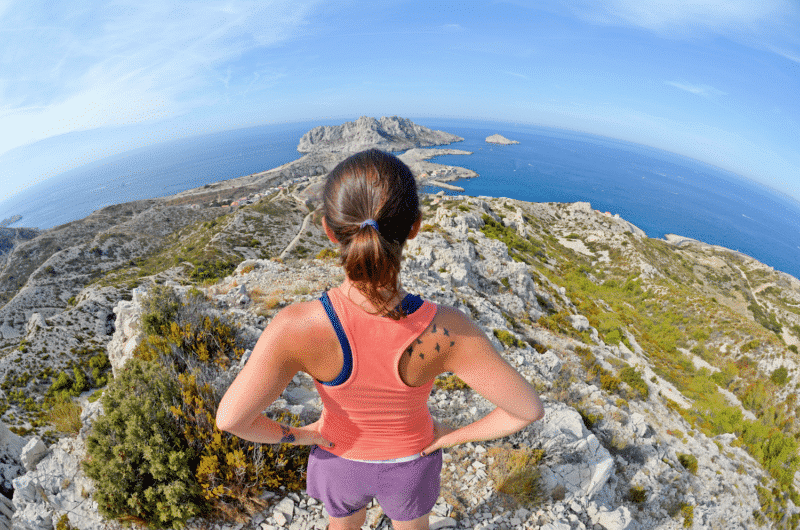
How To Hike Calanques National Park In Marseille, France
Provence Travel Guide
This guide to Provence section will show you the best this region has to offer!

5 Must-Eat Dishes In Provence, France (Beautiful Illustrations Included!)
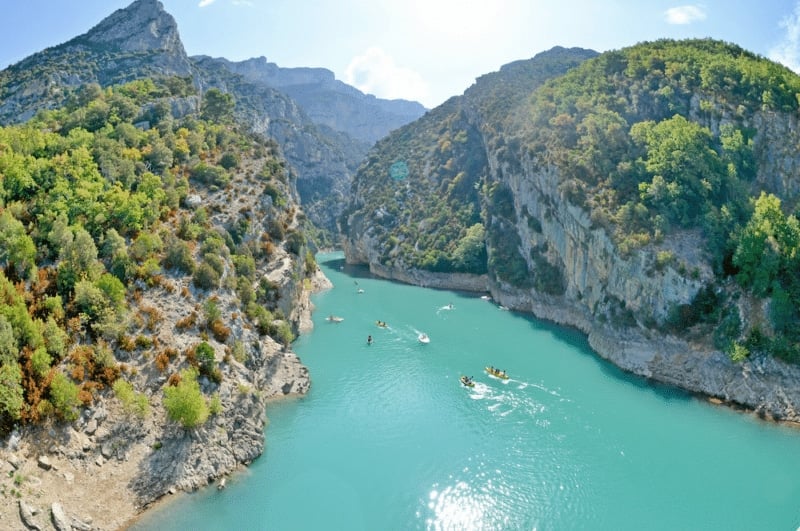
5 Epic Adventures You Didn’t Know You Could Have In Provence

An Authentic Calisson Cooking Class In Aix-en-Provence
South Of France Travel Guide
Explore fun things to do in one of the best French holiday destinations ! You can also peruse the above sections on travel in Nice, Marseille, and Provence for bonus South of France trip inspiration.
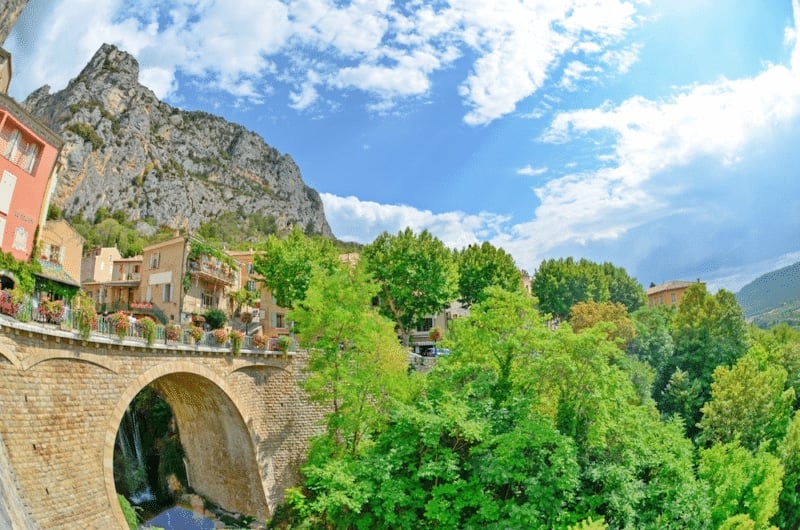
How To Have An Epic South Of France Road Trip (With Video!)

How To Enjoy Epic Wine, Hiking & Skinny Dipping Near Cannes, France
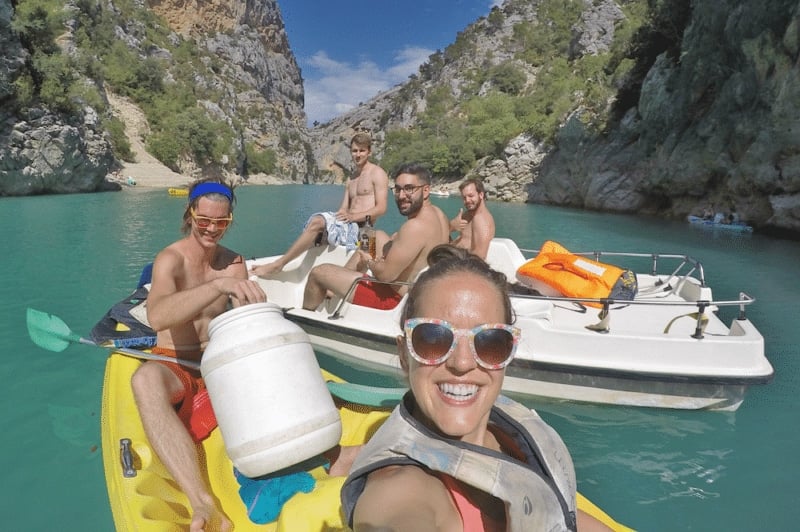
Is The Verdon Gorge France’s Most Beautiful Attraction?
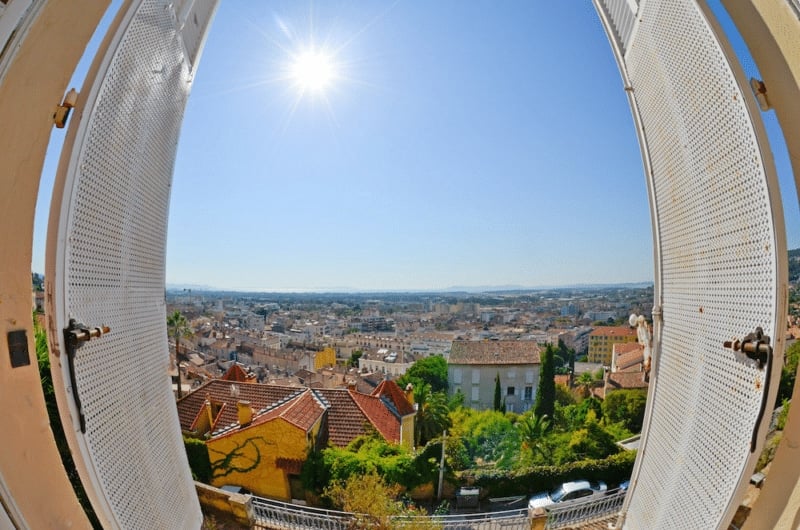
These 5 Unique Accommodations Will Make You Crave A South of France Getaway
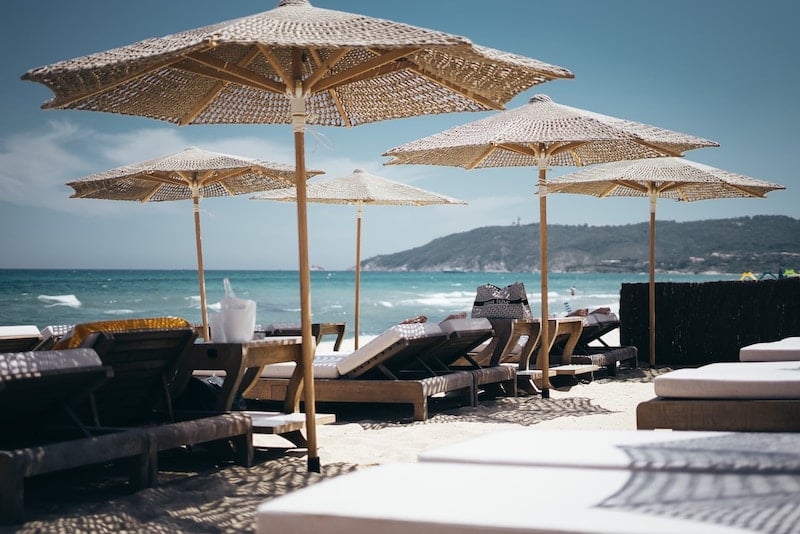
15 Best Beach Clubs On The French Riviera
France Travel Tips
Important advice for traveling in France !

How Not To Get Treated Rudely By The French

France Solo Travel: The Ultimate Guide
Top Guided Tours In France
Explore local culture with a France tour guide through these unique excursions:
- French Baking Class: Baguettes and Croissants in a Parisian Bakery (Paris, France)
- Off the Beaten Track: Guided Bike Tour of Paris Local Districts and Stories (Paris, France)
- Paris in One Day: Eiffel Tower with Summit, Louvre Museum and Seine River Cruise (Paris, France)
- Nice Local Vineyards Small Group Half Day E-Bike Tour with Wine Tasting (Nice, France)
- French Riviera Day Trip with Monaco Cannes & Perfumery Visit (Nice, France)
- Hot Air Balloon Flight Over the Castle of Chenonceau (Loire Valley, France)
Renting A Car In France
Need a rental car for your France trip?
Use Discover Cars to quickly compare your car rental options.
France Train Travel
Getting around France by train, bus, or ferry?
Omio is a must! I use this tool for all of my public transportation needs when traveling Europe .
The site is straightforward and user-friendly — and you can pre-book your tickets in advance at a discount.
They even offer flight and car deals!
France Hotels
Click here to browse hotels in France!
Prefer self-contained stays?
Click here to check out unique local rentals!
You can also use this map to search for local stays:
France Travel Insurance
It doesn’t matter if you’re traveling solo or with a group on a France tour. When visiting France — or any other country in the world — make sure to get travel insurance to protect your health and safety.
In my opinion, the best travel medical insurance for travelers is SafetyWing as they’ve got a large network and offer both short-term and long-term coverage — including coverage if you’re traveling for months as well as limited coverage in your home country).
Additionally, SafetyWing is budget-friendly and offers $250,000 worth of coverage with just one low overall deductible of $250.
With coverage, you’ll have peace of mind as you embark on your France itinerary.
Click my referral link here to price out travel insurance for your trip in just a few clicks .
France Travel Guide FAQ
Below, find answers to frequently asked questions about traveling in France .
Q: What is the best way to book travel in France?
As you start planning your trip to France, be sure to check flight search engines like Skyscanner . This site can help you find the best times to fly for your budget or the most convenient flights for your travel dates.
If you’re flying to France from somewhere else in Europe (or planning to fly to different locations within the country), check out some of the European budget airlines like easyJet and Ryanair for the best prices.
Busses and trains are also ubiquitous throughout the country and are an easy way to get from one city to the next. Be sure to book in advance, though; generally speaking, the further out you book, the less you’ll pay. You can use a site like Omio to book in advance and find great deals!
Q: How much should I budget for a trip to France?
France isn’t known for being particularly inexpensive for tourists, but it is absolutely possible to see the country on a budget . The average traveler spends about $216 USD per day in France on accommodations, transportation, food, activities, and other expenses.
If you’re traveling backpacker-style by staying in hostels, buying your own food, and using public transportation, you can expect to spend about $72 USD per day.
Q: What can you see in France in 10 days?
You can see a great deal of France in just 10 days!
Any travel itinerary will depend on your personal priorities and preferences, but if you’re looking to see the entire country in this amount of time, you’ll want to budget your days accordingly.
To make the most of your trip, you’ll want to spend about two to three days in Paris, a day or two in the Loire Valley, two days in Lyon, a day in Aix-en-Provence , and two days on the French Riviera in a city like Nice or Cannes .
The food in Strasbourg is also a draw and is reason enough to spend some time in France’s Alsace region.
Q: How long can a tourist stay in France?
Most tourist visas will allow you to stay in France for up to 90 days without engaging in any professional activity during your stay.
Q: Do I need a France travel visa?
Travelers from the United States, the United Kingdom, Australia, Canada, Schengen Area member countries , and several other countries do not need a visa to visit France for a period of fewer than 90 days.
It’s recommended to view your country’s France International Travel Information page for the most up-to-date information on entry and exit requirements. You can also contact the French Embassy.
Q: Is France safe?
France is considered to be quite safe, and violent crime against tourists is rare. That being said, before visiting a particular French destination you should look up common scams and issues to be aware of. Additionally, have a strategy for how to avoid pickpockets , especially in big cities.
Are you solo female traveler ? Feel good knowing this is a popular destination for women traveling alone!
Q: What is the best time to visit France?
If you don’t mind the crowds, visiting France in summer brings loads of events, consistently sunny weather, and more daylight hours for exploration; however, for fewer crowds, mild weather, and better deals opt for late spring and fall.
Q: Where is France?
France is located in western Europe and is bordered by Spain (South); Italy and Switzerland (East); Belgium, Luxembourg, and Germany (Northeast); the English Channel (Northwest); and the Bay of Biscay (Southwest),
Q: Are credit cards accepted in France?
Credit cards are widely accepted in France, though it’s always wise to carry some cash on you, especially when frequenting smaller mom and pop type establishments and street stalls.
Q: Can you drink tap water in France?
Yes, the tap water is safe to drink in France.
Q: Do they speak English in France?
In tourist areas and big cities, you’ll typically find people who speak English, though not everyone does, and even fewer people do in more rural areas.
If possible, it’s smart to learn some common French phrases and to brush up on French social etiquette .
Q: What is the local currency in France?
The local currency in France is the Euro (€).

What would you add to this France travel guide?
Enjoyed this France travel guide? Pin it for later!
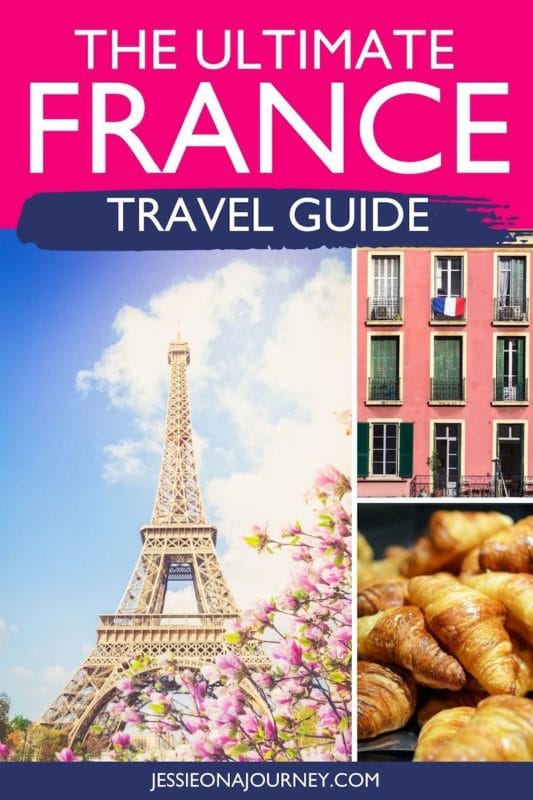
11 things only the locals know in France (and now you do too)

May 7, 2024 • 6 min read

France is an incredible place to explore, especially when you know these do's and don'ts © Alexander Spatari / Getty Images
One kiss or two? Anna Richards, one of the authors of the new Lonely Planet France guidebook , shares her tips to avoid some common French faux pas.
Even if you’ve never been to France before, it’s easy to think you know it — Parisian rom-com scenes are six to a dozen. On screen and real life are very different, though. There’s an unflattering reputation that the French are unfriendly, but in my experience, you’re probably just making a cultural faux pas. I’ve lived here for three years: here’s what you need to know before visiting France, and how not to get shouted at on the Metro.
1. Pay attention to tourist laws in France
EU residents can come and go as they please, but non-EU nationals (including those holding British and American passports) have the right to stay in France for up to 90 days within the period of 180 days, visa free (your passport is stamped upon arrival and exit). You’ll need three months of validity left on your passport from your intended departure date. The full list of visa requirements according to country can be found here .
Be aware of import and export rules. That stinky, unpasteurized cheese might seem like the perfect way to cover up the stench of your week-old socks, but if you’re leaving the EU, it’s not allowed.
2. Keep ID on hand
You don’t have to always have your passport, but you should carry photo ID as the police have the right to demand it (although it’s rare). You’ll need your passport for international border arrivals, and your hotel or hostel will often ask for it at check-in too. If you don’t have it on your person, it’s a good idea to have a scan to hand.
3. France isn't paperless – yet
France has not embraced contactless card payments with the same zealousness as the UK, and it’s not possible to pay with contactless in some pretty surprising places, including Paris Metro. The Metro in other cities in the country (including Lyon) does accept contactless card payments, but Paris still resolutely uses paper tickets or a rechargeable Navigo card. In rural France, I recommend still carrying some cash. Even if you can pay by card in most places, there’s often a minimum spend, which I’ve known to be as high as €40.

4. Driving can be pricey
Driving can be eye-wateringly expensive, particularly on the motorways, where péages (tolls) often cost the same or more than your fuel. Calculate the cost of your journey on ViaMichelin to see whether it makes sense to avoid toll roads and consider sharing your ride on BlablaCar (a bus and carpooling platform) to mitigate the cost of your journey.
5. You'll need to navigate varying opening hours
Get wise to the opening hours, particularly in rural areas. From Sunday–Tuesday, a lot of shops, restaurants and attractions are closed. Smaller shops and the post office often close over lunch, regardless of the day of the week. Watch out for seasonality, too, as the French holiday en masse. At the start and end of the school holidays, roads (particularly those to the south) grind to a standstill. Outside of travel season, you may find a lot of accommodation, restaurants and attractions to be closed, regardless of the day of the week.

6. Say your hellos and goodbyes
La bise (kiss) was threatened during Covid-19, but it's firmly back. How many kisses to give depends on the area of the country. In most of France, two kisses are the norm, but in parts of the south and south west it’s three, and in certain departments, like the Yonne and Aube, four. People who still prefer to socially distance may offer you a fist bump or an air kiss instead.
Say bonjour or bonsoir (hello or good evening) to everyone, and bonne journée or bonne soirée (have a good day/evening) as you leave. Don’t think you can slip away at a party either. It’s generally expected to greet, and say goodbye to, everyone at a gathering. Yes, this can be time-consuming.
7. Skip the athleisure wear
Don’t wander around in your gym kit. The French tend to dress chic, and spending the day in sportswear isn’t a thing. Many French people won’t even bother with sports clothes for a cycle commute, unless they’re hardcore cyclists in head-to-toe Lycra and clip shoes.

8. Learn French table etiquette
Plates have no place at breakfast, but bowls do. Most people eat their viennoiseries and tartines (bread and jam) directly over the table, and simply clear up the crumbs when they’re finished. A waste if you ask me, because it’s difficult to clean up all the delicious little flakes of croissant that fall, but that’s the way it goes. There’s no crockery for the food, but for drinks, coffee or tea is more often served in a trough-like bowl than a mug.
France has a long list of table rules, and while deviating from them isn’t always frowned upon, it can quickly mark you out as a tourist. It’s rare to see the French eating or having a coffee on the go; they prefer to stop and enjoy what they’re consuming. Lunch is a sit-down affair and never eaten at your desk at work (it’s even explicitly written in the French labour code that employees should leave their desk for lunch). France is officially a secular country, but mealtimes are a religion. Outside of set hours (12-2pm for lunch and 7:30pm-9:30pm for dinner), your chances of being served are slimmer than a ficelle (skinny French baguette).
Drinks come with rules, too. When you "cheers" someone, clink glasses and look them in the eyes as you say santé (health). Don’t cross your arm with anyone else at the table as you clink. Failure to make eye contact, or accidental crossing of arms, is said to result in seven years of bad sex.
9. Pick up a bit of French...
Learn to speak some French – a little effort goes a long way.
10. ...and pay attention to pronouns
Pay attention to your tu and your vous . Both mean "you," but tu is the informal version, reserved for friends, children and casual situations. In professional situations, and if addressing anyone older than you (friends’ grandparents or parents, for example), always use vous , unless they give you permission to do otherwise. You’re less likely to cause offense, and the older generation in particular can be old school about the extra respect attached to vous .
11. Be chill – it's good manners
Lower your voice. One thing that makes visitors stick out like sore thumbs is shouting your conversation, particularly in restaurants. You’ll be thanked for keeping volume to a minimum in a restaurant more than you would be for a generous tip (which is not customary in France, although always appreciated). Have patience in shops and restaurants; service can often seem painfully slow and unhurried, but it’s nothing personal.
Keep planning your trip to France:
See all the heavy hitters with 13 of the best places to visit in France Take to the highways with 7 top road trips to see the best of France Save some dough with 20 ways to see France on a budget Enjoy the views from a train car with The 8 most spectacular train journeys in France
This article was first published Jul 30, 2022 and updated May 7, 2024.
Explore related stories

Destination Practicalities
Aug 16, 2024 • 9 min read
To visitors, New Zealand can feel comfortingly familiar and completely strange all at once. Here are some key things to know before you go.

Jul 31, 2024 • 7 min read

Jul 31, 2024 • 5 min read

Jul 25, 2024 • 4 min read

Jul 8, 2024 • 8 min read

Jun 26, 2024 • 5 min read

Jun 20, 2024 • 6 min read

Jun 15, 2024 • 7 min read
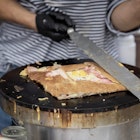
Jun 14, 2024 • 7 min read

May 30, 2024 • 6 min read
- Best Time to Visit
- Weather & Climate
- Top Attractions
- Gardens of France
- Cities to Visit
- Romantic Destinations
- One-Week Itinerary
- Tipping in France
- Currency Tips
- Food to Try
- Wine Regions
- Search Please fill out this field.
- Newsletters
- Destinations
One Week in France: The Ultimate Itinerary
:max_bytes(150000):strip_icc():format(webp)/profilepic-CTraub-5b6ff65d46e0fb00505577c1.jpg)
If you've only got a week to visit France, you'll have to plan your trip carefully. How to cover plenty of ground while still enjoying the country's diverse regions and popular attractions? This guide is designed to help you just do that.
Your week in France begins in Paris, then gives you options for day trips to Normandy and Champagne, making it unnecessary to change hotels every day. This also gives you a base in the capital so you can take full advantage of its charms. We then head south to the French Riviera and Provence, before moving north to Lyon. On your last day, return to the French capital to explore it further before concluding your adventure.
Day 1: Paris
TripSavvy / Leopoldine Bauer
Welcome to France! After arriving at Charles de Gaulle or Orly airport and arriving in the city, drop off your bags at your hotel and grab some breakfast or lunch from a French bakery . It's then time to start your adventure. Buy some Paris metro tickets , and make sure you have a map or access to online directions.
Your first day begins with a sightseeing cruise of Paris that takes you along the Seine River, giving you a first glimpse of some of the city's big-ticket attractions and an educational audio tour. Choose a cruise that suits your tastes and budget.
In the afternoon, head to the Louvre or the Musée d'Orsay to take in a few masterpieces within their world-class collections. Buying tickets in advance is advised.
Next, take the metro or walk to the Latin Quarter and wander its centuries-old streets, famous for their photogenic details and long history. We recommend wandering at a leisurely pace and stumbling upon quiet corners to explore at random, in addition to seeing the area's main attractions.
Cap off your day with dinner at one of the city's historic brasseries , sitting out on the terrace if the weather permits. Make a reservation during high season.
Day 2: Day Trip to Mont St-Michel or Giverny
Moment/Getty Images
It's time to take advantage of the capital's easy access to other, equally fascinating regions.
Since you only have a day to explore highlights in Normandy, we recommend choosing between two options: a whirl through Monet's Gardens at Giverny or a guided bus tour to Mont St-Michel. Giverny is recommended in spring and early summer, while Mont St-Michel is superb year-round.
Giverny: Located at the edge of Normandy and just over an hour from Paris by train and a quick shuttle, Giverny was long home to French impressionist master Claude Monet. It was here that he painted his famous "Waterlilies" series, inspired by his own Japanese-style gardens. Make sure you arrive by late morning to fully enjoy the site. Stroll through the gardens, explore the house, and have lunch at one of the village's charming local restaurants.
See our full guide to Giverny and Monet's gardens for more info on getting there, highlights to see, and tips on how to make the most of your visit.
Mont St-Michel: Unless you prefer to rent a car, the best way to visit Mont-St-Michel in a day is to take a bus tour, such as the ones offered by Viator. Tours generally leave early in the morning and include round-trip transportation to the UNESCO World Heritage site and medieval abbey, as well as lunch. Explore the centuries-old site and the natural wonders of the surrounding Bay, before returning to Paris.
Day 3: Day Trip to Champagne
Sylvain Sonnet/Corbis Documentary/Getty Images
On day three, you'll once again hop on a train for a short day trip eastward, to the Champagne region. Inexpensive trains to the region depart nearly every hour from the Gare de l'Est, to hub cities including Reims and Troyes.
While it's best known for its world-famous sparkling wines, Champagne also has much to offer by way of architecture, history, food, and contemporary life. It's difficult to see all of the region's highlights in just a day, so we recommend focusing on the cathedral city of Reims and nearby Epernay . You can travel between the two via a short train, bus, or taxi ride (about 30 minutes).
Both are home to some of the region's most famous champagne makers, from Taittinger to Veuve-Cliquot, Dom Perignon, and Mercier. They also house picturesque, rolling vineyards, and fascinating networks of underground cellars, some dating back hundreds of years.
In Reims, after visiting the breathtaking Notre-Dame Cathedral, make sure to see les crayeres, an extensive network of chalk quarries that partly serve as cellars for several champagne producers. These are so historically important that they were named a UNESCO World Heritage Site.
If you want to see as much of the region's highlights as possible in a single day, consider taking a guided bus tour to Champagne that includes tastings at several famous cellars and wineries, lunch, cultural attractions, and round-trip transport from Paris.
Day 4: Nice
Frederic Pacorel/Photolibrary/Getty Images
Head to the south of France to see a different side of the country. Nice , a centuries-old city on the Mediterranean and the French Riviera, is your first destination. We recommend boarding a short, direct flight from Paris to save time. Air France, Easyjet, and Lufthansa offer daily flights.
Drop off your bags and go explore the Promenade des Anglais, a 2.5-mile boardwalk stretching along the coast from the Old Town in the east to the airport in the west. Admire the azure-blue sea water and buildings that exemplify 18th-century Belle-Epoque architecture, including the famous Le Negresco hotel.
Take the boardwalk to Nice's Old Town ( Vieux Nice ), whose highlights include 17th-century squares such as the Place Rossetti, winding cobblestone streets, the Opéra de Nice , and an array of shops selling traditional Provencal products and souvenirs. There, browse locally made goods such as olive-oil and lavender-scented soaps.
Next, take the stairs (or Art Deco elevator) at the end of the Quai des États-Unis to reach the Colline du Château , or Castle Hill. The original, medieval city of Nice was located here within a citadel that has since been dismantled. From here, enjoy fantastic views over Old Town and the Baie des Anges (Angel Bay).
For dinner, get a taste of typical regional cuisine at one of Nice's best restaurants . For a nightcap, consider heading back to the Promenade des Anglais and enjoying a cocktail with sea views, at bars such as Waka and Movida .
Day 5: Aix-en-Provence
TripSavvy / Julie Magnussen
It's your second day in the south, and it's time to head a bit inland to Aix-en-Provence . You can catch a train from Nice to Aix; the trip takes around three hours and 30 minutes, so we recommend that you leave early in the morning to make the most of your destination.
Aix was beloved by resident Paul Cézanne, who remains deeply associated with the town. He painted numerous landscapes of Aix and its surrounding natural scenery, famously capturing what many say is incomparable light. Start your visit of the town by taking a walk along a route known as the Cézanne Trail , allowing you both to get acquainted with some of Aix's most-iconic sites and learn a bit of art history. You can also take a guided tour if preferred.
Next, visit the town's beloved market square at Place Richelme, a food market open daily. Take in the busy-yet-relaxed scenes of Provencal life on the square, browse the market stalls, and enjoy dappled light playing on the warm stone buildings.
You can have lunch (al fresco, if weather permits) at one of the traditional restaurants or brasseries lining the square.
Wondering what else to do in town? See this page for a complete guide to enjoying Aix to the fullest.
Day 6: Lyon
TripSavvy / Taylor McIntyre
Grab an early breakfast, then hop on the high-speed TGV train from Aix-en-Provence to Lyon. The journey takes about an hour and 10 minutes.
Lyon , nestled in the Rhone Valley and surrounded by spectacular vineyards, is one of France's most-important cities in terms of both population and cultural history. It's a culinary capital, home to legendary chefs such as the late Paul Bocuse. It also boasts thousands of years of history, having served as the Roman capital of Gaul.
After checking into your hotel, explore the city by foot, local bus or metro. We especially recommend exploring Old Lyon ( Vieux Lyon ) around the banks of the Saone river. See the breathtaking St-Jean Cathedraland wander through the medieval and Renaissance-era streets, before taking a guided tour of the area's "traboules," passageways between buildings once used by silk workers to transport textiles. During World War II, French resistance fighters used them to hide from the Gestapo.
If time allows, visit the Museum of Gallo-Roman Civilization and see two well-preserved Roman theaters that crown the hill at Fourvière; one dates to 15 BC. From here, you can enjoy spectacular views over the city. For dinner, enjoy typical regional dishes and wines at a bouchon , one of Lyon's traditional eateries.
Day 7: Return to Paris
TripSavvy / Taylor McIntyre
On your final day, head back to Paris for a last chance to explore the city during this trip. You'll take the TGV train from Lyon to Paris (taking around two and a half hours) and arrive at Gare de Lyon.
It may be close to lunchtime when you arrive. If so, we recommend having lunch at Le Train Bleu , a grand restaurant situated on the second floor of the Gare de Lyon station. Its ornate, sprawling dining room and traditional menu offer a memorable, old-world Parisian experience.
Next, it's time to explore the right bank a bit. Take the metro (line 1) to Hotel de Ville. Get off and admire Paris City Hall before exploring the Marais district, with its well-preserved Renaissance mansions, picturesque squares, fashionable boutiques and delicious street food .
Around sunset, head south from the Marais back to the banks of the Seine and enjoy picturesque views of the water and Ile St-Louis from the Pont Marie , one of the city's loveliest bridges. If time allows, take a stroll on the natural island that connects to it across the river.
For your last evening, choose between dinner in arty, historic Montmartre followed by a show at a typical Parisian cabaret, or a delicious meal of wine, cheese, and small plates at one of the city's inest wine bars . We recommend Frenchie Bar à Vin and Le Verre Volé.
Related Articles
More related articles.

9 Unmissable Things To Do In Miami

The 12 Best UK Beaches To Visit In 2023

The Best Areas To Stay When Visiting Warsaw, Poland

The Ultimate 2 Week Queensland Roadtrip: 2023 Guide
- Yucatan Peninsula
- Winter in Europe
- Whitsundays
- Where you should stay
- where to stay in porto
- Where to stay in Bali
- where to stay cyprus
9 Days In France – The Ultimate Itinerary
Editorial Note: Earth Curious contains affiliate links. If you make a purchase through these links, we will earn a commission at no extra cost to you. Thanks!
Your journey will start in the bustling city of Paris before you head south to the French Atlantic coastline and Bordeaux. Following your time in Bordeaux, you will hit up the med coastline and explore Marseille, the Calanques National Park, Nice, and if you want, the tiny country of Monaco.
Table of Contents
What to do:, where to eat, where to stay in paris, check out our further earth curious content on paris to prepare:, what to do and see, where to stay, best wine tours in bordeaux, where to eat, leaving france:, the best time to visit france:, what is the currency of france, can you drink tap water in france, the language of france:, is france safe, final thoughts:, other europe itineraries:.
Assuming that you are traveling from outside of Europe, you will most likely be traveling into the country via plane.
Once in France, you will travel way more efficiently and cheaply by taking high-speed public trains between cities. Most tickets cost between €10-30 and can get you to destinations faster than by car in most situations.
Day 1: Arrive in Paris – Eiffel Tower and Palace of Versailles
You have just arrived in France! The most accessible city to travel to is Paris, the country’s capital city. To get from the airport to the city center, you can hire a cab to take you directly to your hotel. If you are a budget traveler, you can take one of the regional express trains, which run every 10 minutes.
Depending on the time you arrive and how long your flight was, you may need some time to recharge in your accommodation. When you are ready to get into the city, your first stop is to see the Eiffel Tower – one of the most recognized monuments in the world.
See the Eiffel Tower: Make sure your camera is fully charged when heading down to the Eiffel Tower, which is the symbol of France. It measures over 1,000 feet in height, known colloquially as the “Iron Lady” The Eiffel Tower is free to see from afar, but you will have to buy a ticket in order to enter the tower. Depending on your budget, it may be worth it to pay the price, as you will be able to explore the first and second floors, which have various cafe and lounging areas, as well as the summit, which offers panoramic views of all of Paris.
Visit the Palace of Versailles: Another one of the most visited attractions of France, the Palace of Versailles dates back to the 17th century and was the residence of French kings Louis XIV and Louis XVI. You will have to buy a ticket to enter, but the entrance allows you access to the immaculate gardens, the main palace (which consists of over 2,000 rooms), and the Queen’s Hamlet.
Chez Lazare
Madam Brasserie (located in the Eiffel Tower)
- $$$ – Shangri-La Paris
- $$ – Hotel Sophie Germain
- $ – The People Hostel – Paris Le Marais
Day 2: Paris – See the Mona Lisa at the Louvre Museum
You cannot leave Paris without visiting some of its most popular museums, which are recognized globally
Go to the Louvre Museum : The Louvre Museum in Paris is globally recognized because it houses arguably one of the most popular paintings in history – the Mona Lisa . Other famous pieces in the museum include Vénus de Milo , La Liberté Guidant le Peuple , and Victoire de Samothrace . Admission to the Louvre costs €17 for foreign visitors. The outside architecture of the Louvre is also not to be missed, as the museum is also recognized for its glass pyramids outside.
Louvre Repaille
- Is Paris Expensive To Visit?
- The Best Days Trips From Paris By Train (Perfect to extend your trip!)
- The Best Time To Visit Paris To Avoid Crowds (This article can apply to visiting France in general!)
- Is Paris Safe to Visit? (2023 Guide)
Note: All of the above links will open in a new tab, so you can save them for reading after you are done with this article.
Day 3: Paris – Montmatre and The Basilica of Sacré Coeur de Montmartre
After a full two days of sightseeing, take some time for relaxation and a brisk stroll.
Explore the neighborhood of Montmartre : Montmartre is known for its cozy village feel and bustling art scene, which has inspired artists over the years such as Van Gogh and Picasso. For a more in-depth look into the neighborhood, go on a free walking tour, where you can learn the history of the area from a local guide. Make sure to stop at one of the cozy cafes for a coffee along your exploration.
Visit the Basilica of Sacré Coeur de Montmartre : Another important monument of Paris, and is one of the most important religious sites in the city. Visitors can enter and climb to the top of the dome for views of the city, or lounge in the grass of the grounds.
Cafe Montmartre
La Mére Catherine
Day 4: Train to Bordeaux, Place de la bourse
Travel time: to travel from Paris to Bordeaux, take the high-speed SNCF TGV train, which is the most economical and fastest option that takes just over 2 hours. standard class tickets start at about €16 one-way.
Known as the heart of the wine region of France, Bordeaux is known for its gothic architecture and idyllic French countryside.
Place de la bourse : Known as the iconic symbol of the city of Bordeaux, this palace is a UNESCO World Heritage site, dating back to the 18th century. The Palace offers free admission for visitors, but it is worth it to pay a little extra for a guided tour to learn about the historical and cultural significance.
Restaurant Influences
Le Petit Atelier des Faures
- $$$ – Villas Foch Bordeaux
- $$ – ibis Bordeaux Centre Mériadeck
- $ – Central Hostel
Day 5: Go on a wine tour in Bordeaux
The Bordeaux region is known for its extensive wineries, so you cannot leave without trying some world-class wine. The best time to visit is in September, which is grape harvesting season in France.
Château Bernateau: a family-owned winery that operates tours in French and English. Prices range between €6-10 per person.
Château Coutet: Located about 20 minutes from the center of St. Emilion – another winery that is family owned and operated. A special aspect of this winery is the extensive gardens and ponds on the property, which are frequented by many ducks and geese.
Château Lafaurie Peyraguey
La Table de Plaisance
Day 6: Arrive in Marseille and explore the Old Port of Marseille
Travel time: Direct trains from Bordeaux to Marseille last about 6.5 hours, so it may be more efficient to fly, which only takes about an hour. There are also options for overnight trains, so you can get a night’s sleep while you travel.
The next stop on your France itinerary is the quaint city of Marseille, located on the southern coast of the country.
Walk around the Old Port of Marseille: With a rich maritime history and cultural significance, the Old Port of Marseille is a great place to stroll and interact with the locals. Make sure to stop by the Quai des Belges Fish Market, which is the heartbeat of the Old Port. When you get hungry, enter one of the many cafes, restaurants, and bars that are located along the main streets.
La Délicatesse
La Poule Noire
- $$$ – Le Petit Nice Passedat
- $$ – Les Bords de Mer
- $ – Vertigo Hostel Vieux-Port
Day 7: Marseille – Go to Calanques National Park
Travel time: You can get to the Calanques National Park very easily from Marseille. Check out the park’s website here . You can travel by public bus, sea shuttles, in your own car/rental car or by bike.
Hike in Calanques National Park: Located in the south of France, this national park boasts over 20 kilometers of coastline and is the only European park to have land, sea, and urban areas in the same park. You can easily spend the entire day exploring some of the many hikes that Calanques has to offer. The most notable trails to check out are the Calanques de Cassis Trail, Calanque de Sugiton, and Calanque de Marseilleveyre.
Brasserie Des Calanques
Day 8: Nice
Travel time: The most efficient way to get from Marseille to Nice is by train, specifically the TVG “OuiGo” trains. The trip lasts about 2.5 hours, and tickets are about €20 one-way.
Nice is known as France’s most popular beach city. Use the end of your trip to relax!
Walk the Promenade de Anglais: Literally translating to “walkway of the English” this promenade stretches about 7 kilometers along Nice’s coastline. It is extremely pedestrian-friendly and has bike lanes for cyclists as well. Along the way, you can find many cute shops, restaurants, and souvenir shops.
Take a day or afternoon trip to Monaco: Monaco is the epitome of luxury and grandeur. A tiny country nestled on the glorious French Riviera, Monaco has long been a haunt for the rich and famous, thanks to generous tax laws, beautiful scenery, and fantastic weather. Best of all, it’s only 25 minutes away from Nice by train! Read our full Earth Curious guide on getting to Monaco from Nice, and what to do when you get there.
George’s Roll Seafood
Le Panier Restaurant
Day 9: Head to the beaches in Nice
Don’t leave Nice without putting on your bathing suit and heading to the beach.
La Réserve beach: a lesser-known beach with less tourist traffic. It is tucked away but still very accessible to the downtown area.
Opéra Plage beach: A private beach that also has a former opera house pavilion.
Plage Beau Rivage: Another private beach located very near the Old Town with access to plenty of luxury restaurants and accommodations.
Le Negresco
Chez Acchiardo
After your time in Nice, you can either leave from Nice airport (year-round, Nice has flights to most major cities in Europe, and during summer months there are a fair number of international destinations too.
Otherwise, you can easily get a high-speed train back up to Paris and leave France from there. The fastest trains take just under 6 hours, and when booked in advance tickets cost around €30 one-way.
Useful tips for traveling in France:
For the most pleasant weather conditions, the best time to visit France is in the summer, between June and August. Because of the favorable weather, this season is also the peak tourist season in France. Although everything operates at full capacity during this time, it also means you will be competing with crowds and higher prices. If you want to save money and avoid the crowds, consider visiting during the shoulder seasons of spring (April-May) and fall (September-October). Not only is the weather cooler, but there are fewer tourists.
The national currency of France is the Euro. The Euro is also the currency for many other neighboring European countries, such as Germany, Italy, Spain, Portugal, and more. So, if your trip to France is part of a longer trip throughout Europe, you won’t have trouble constantly exchanging currency.
Yes! The tap water in the entirety of the country is safe to drink. You should not have a problem filling your bottle with tap water in most given regions in France, especially in large cities like Paris.
The national language of France is French , which is the first language of 88% of the population. It is a great place to practice your French if you are actively trying to learn it. If you don’t know any French, you should download some language apps or a translator, as only 39% of the population has some degree of English proficiency. For larger tourist areas, you most likely will not have a problem, as English is more widely spoken in these areas. You will have more luck speaking English with younger people, as older generations over the age of 50 were generally not formally taught English in school.
France is overall a safe country to travel to solo or in a group. Rates of violent crime are generally low, and the most common crimes against tourists are petty theft and pickpocketing. With this in mind, always proceed with caution no matter how safe you perceive an area to be.
Related: 15 Of The Best Places To Visit In France
If you are looking for an adventurous itinerary with many diverse places to see, look no further than France. Not only does the country have much historical relevance, but you will be blown away by its incredible art, food, and views. The best aspect of traveling in France is its access to efficient and cheap transportation by train, which can allow you to see the entire country in one trip.
Here at Earth Curious, it is our goal to have amazing content published about every country in the world! We are slowly getting there!
If you’re thinking of spending some more time in Europe and fancy visiting other countries and not just France, then why not check out some of our other country itineraries below?
Note: all of the below countries, border France and you can easily take a train to get to the next country. If you’re using trains in multiple European countries you might want to consider getting an interrail pass, there is more on that here .
- 7-Day Germany Itinerary (A 2023 Guide)
- The Ultimate 3-5 Day Belgium Itinerary
The Best 9-Day Switzerland Itinerary: Detailed Guide
- The Ultimate 2-Week Italy Itinerary: Exploring The Entire Country
Stay Earth Curious!

Leave a Reply Cancel reply
Your email address will not be published. Required fields are marked *
Save my name, email, and website in this browser for the next time I comment.
This site uses Akismet to reduce spam. Learn how your comment data is processed .
Related Posts

- Itineraries
- North America
- United States
The Best 2 Week Route 66 Road Trip Itinerary
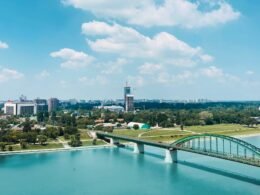
48 Hours In Belgrade, Serbia: The Best Itinerary

- South Africa
The Ultimate 2 Week South Africa Itinerary

The Ultimate 10-Day Northern India Itinerary

The Best Days Trips From Paris By Train

The Ultimate Bali Itinerary: How To Spend 2 Weeks On The Island of The Gods
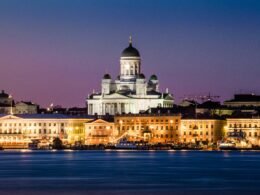
48 Hours In Helsinki: The Ultimate Itinerary
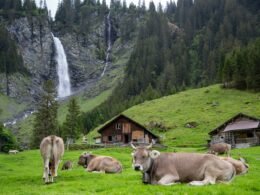
- Switzerland
- Editors Pick
50 things you need to know before traveling to France
France is the dream destination for many people! It has history and culture. It has famous landmarks and other monuments not so well-known, it has tasty food… It has Mediterranean beaches, high mountains, and snow … It has everything we need to have a fabulous trip and more!
For this reason, we visit France more often than almost any other country… We traveled to France by plane, car, bus, and train. We know a good share of the country, but we would never say that we know it entirely as it’s so large and diverse. Yet, there are general characteristics and travel tips that are valid for the whole country, and we want to share them with you.
So, let’s present the 50 things you need to know before traveling to France , looking at the people, the tourism industry, the best travel destinations, the best ways to travel, the costs, the food, and much more…

Page Contents
France and the French People
The territory.
# 1 France is a vast country with an immense and glorious history. It is mainly located in Western Europe, but it also includes some other overseas territories and regions on other continents. This article mainly focuses on European France, leaving extra-European regions for different posts.
# 2 France is the largest country in the European Union and the third-largest in Europe, behind Russia and Ukraine. Known as “the Hexagon” due to the shape of the continental European territory, France borders Belgium and Luxembourg to the north, Germany to the northeast, Switzerland and Italy to the east, and Spain to the south. It is also bordered by tiny Monaco and Andorra .
Finally, France also has the North Sea to the north, the English Channel to the northwest, the Atlantic Ocean to the west, and the Mediterranean to the southeast.
# 3 Even excluding the overseas territories, the French territory has incredible geographical diversity. From long plains to the green and undulating landscapes of Brittany to the Mediterranean beaches and even to the mountain peaks of the Alps and the Pyrenees. For those traveling to France, Paris is a must and a destination not to be missed, but France is much more than Paris.

The French people
# 4 With almost 70 million inhabitants, France is the second-most populated country in the EU (behind Germany) and the third in Europe. It is a very urbanized country with populous cities. Paris is the capital and the largest city, with Marseille and Lyon having more than 500 000 inhabitants too.
# 5 Naturally, French is the official language, and the entire population speaks it. However, we often do not remember that there are also several regional languages such as Breton, Basque, Corsican, and Catalan.
For a long time, French was considered the lingua franca in Europe and the most used in diplomacy, science, and literature. However, as English grew in popularity, it lost that status.

# 6 Perhaps due to this loss of international importance, the French do not like it at all when people presume that they speak English, so they avoid doing so. Our experience says that they often speak it (some better than others), but they don’t want to. It is almost a matter of national pride.
Rather than having difficulty with languages, the French detest the arrogance that some tourists have in assuming that they are the locals who have to speak another language and adapt – which is an understandable posture. Kindness, empathy, a good attitude, and education make a huge difference in France.
# 7 If you are not fluent in French, you should at least learn a few words and make an effort to speak French. The treatment you’ll receive is usually different, and often they will try to speak your language or at least speak in English to make it easier for you. Even if it’s only the most basic, learn at the very least:
- Bonjour (Hello / Good morning);
- S’il vous plait (Please)
- Pardon (sorry)
- L’addition s’il vous plait (the check please)
- Merci (Thank you)
- Au Revoir (Goodbye).
Thus, a little bit of french is one of the main things to know before traveling to France.

# 8 But being 100% honest, the French are not the friendliest people in the world (though Israelis are much worse ), especially in the tourist areas and Paris in particular.
However, we must also mention that it is not as bad as it is often said. Many times, it has more to do with cultural misunderstandings or when we do not understand French etiquette and way of being.
# 9 One of these usual faux pas is speaking loudly or making a lot of noise. The French typically hate people who are too loud and who attract all the attention to themselves.
Another is not saying “bonjour / Bonsoir” whenever you start a conversation; many French people attribute great importance to this kind of delicacy.

# 10 One of the most curious peculiarities of the French is that they love protests and strikes. Whether it is teachers, doctors, truck drivers, trains, or buses, all sectors of the French economy enjoy the occasional strike and protest.
Remember, even the national football team went on strike during a World Cup. This can be very important when traveling in France as it won’t be surprising if you get a public transports strike, roads blocked, or even closed tourist attractions.
# 11 Speaking of things being closed, another thing to know before visiting France is that everything closes on Sundays in France. The country practically shuts down, so it’s best to plan your vacation around that, or you may have some unpleasant surprises. Except for some supermarkets that are open in the morning (but not all) and some tourist places, there is nothing available on Sunday.

Climate in France
# 12 Due to its size and geographical diversity, the climate in France is not homogeneous, however, in general, it is temperate and pleasant, and we can define some general rules.
Winter is colder and rainier, while Summer is warmer and drier. The north of France is colder than the south, while the Atlantic areas are more humid and rainy than the Mediterranean. So we have four major zones:
- West : Oceanic climate with high rainfall and limited temperature variation;
- Center and east (inland): Continental climate with cold winters and hot summers;
- South and East: Mediterranean climate with hot, dry summers, ample sunshine throughout the year, but with light rains between October and April;
- Mountains above 800 meters: high rainfall and snow in winter.

When to travel to France?
# 13 Like most Western European countries, the peak season is in the summer, and especially in July and August during school holidays. During this time of year, millions of people are on vacation, foreign and French, so all the famous landmarks are crowded.
We suggest avoiding the peak of the high season and traveling to France in May / June and late September. At this time of year, the most well-known monuments still have many people, but much fewer than in the high season, and the lesser-known destinations won’t be crowded. On the other hand, the weather is still quite pleasant, with high temperatures and little rain.

Is it safe to travel to France?
# 14 In a word, yes! France is a very safe country to travel to. You will hardly see any crime, let alone violent crime. There are some districts and problematic areas (in Paris and Marseille, for example), but it is unlikely that you will go there as a tourist or by mistake. Avoid any demonstration or public unrest, so famous in France .
As in every other country, we must be careful with pickpocketers, scam schemes in tourist areas, and public transport, but you will hardly have problems using common sense and attention. Statistically, France appears to be slightly worse than the average for other EU countries, but we have never experienced any security problems.
Note: there is also the problem of terrorist attacks that France has suffered, but in our opinion, it is not an issue, as it is more likely to suffer a road accident (for example) than to be present in a terrorist attack.

Traveling in France
# 15 With about 90 million tourists (in 2019), France is the most visited country worldwide, while Paris is the third most visited city globally.
This alone tells us that you will hardly have places to yourself, even the lesser-known ones. Therefore, we always have to prepare ourselves for the possibility of finding crowds, even outside the high season. And during the high season, we need to be very patient.

UNESCO heritage in France
# 16 France has 45 UNESCO World Heritage Sites, 39 are cultural heritage sites, 5 are Natural Heritage Sites, and one is mixed. These locations are spread across the territory (including overseas) and are immensely diverse.
Obviously, we will not name all the sites here, but these include worlds wonders like Mont Saint Michel, several Gothic cathedrals (like Chartes and Reims), Roman ruins (Arles and Pont du Gard, for example), prehistoric sites, or Mont-Perdu in the Pyrenees.
See the complete list here.

Where to go in France?
# 17 A country that receives so many tourists must offer many activities attracting all kinds of people. In fact, the diversity of things to do and visit in France is impressive. Whatever you are searching for, France has it for.
- Are you looking for outstanding and famous monuments? Eiffel Tower, Mont Saint-Michel, cathedrals, Loire castles …
- Want to go to the beach? The Mediterranean coast and Corsica have spectacular beaches.
- Do you want to immerse yourself in culture and history? Few countries have a culture as vibrant and striking as France.
- Are you looking for religious tourism? France has incredible churches and cathedrals.
- Do you want to do trails and hikes? The Alps and the Pyrenees are waiting for you.
- Do you want to visit cities full of history and architecture? In addition to Paris, we have Lyon, Marseille, Bordeaux, Toulouse , Nice …
- Do you want parties and nightlife? We have the French Riviera;
As we said, there is an extraordinary variety and abundance of tourist destinations. Let’s talk a little more about some of them.
# 18 Let’s start with Paris, the French capital and the second most touristic city in the world in 2019 (Mastercard ranking). We believe there is no need to explain why Paris is an unmissable destination.
Yet, it is worth mentioning that sometimes the expectations about Paris are so high that some people feel disappointed even when we are talking about a city that has some of the most famous monuments and museums in France and the world, like:
- Eiffel Tower
- Arc de Triomphe
- Sacré-Cœur de Montmartre
- Louvre Museum
- Musée d’ Orsay
- Center Pompidou
- Palace of Versailles (already well outside the center but still within the area of influence of Paris)

# 19 The French Riviera is France’s second most popular area, especially in the summer. This area is part of the Provence region and is known for the many hours of sunshine, the km of beaches, parties, and wealth in general. Nice, Cannes, Saint Tropez, and Antibes are probably the most well-known cities and those that receive the most tourists.
If you like lively beaches and nightlife, this is your destination in France. However, don’t be overwhelmed by the crowds you will find…
# 20 The rest of the Provence region is also trendy and one of our favorites. With its markets and fresh produce, Provence is a destination for foodies. Still, it also has some of the most beautiful places in France, such as the Calanques National Park, which has gorgeous small natural beaches, and the Verdon gorge.
Finally, Provence also has dozens of spectacular historical and cultural destinations, such as the Pont du Gard, Arles’s Roman ruins, and Avignon’s papal palace. Without forgetting, of course, the capital Marseille, which is often underestimated.

# 21 Another tourist destination known for its architectural heritage is the Loire Valley, with its magnificent Châteaux (Castles) and some interesting and historic cities. Although some were affected and plundered in the French Revolution and again during the Second World War, they still retain much of their beauty.
There are dozens of castles in the Loire Valley, so it is impossible to visit them all. The best chateaux in Loire Valley and the ones you shouldn’t miss are Chambord and Chenonceau, and if you have more time, Châteaux d’Amboise, D’Ussé, de Villandry, and Montsoreau. Angers and Orléans are probably the most well-known cities with impressive cathedrals.

# 22 An utterly different destination is the Alps, as it is, above all, a top-rated winter destination, with its spectacular ski resorts and après ski activities. However, even if you are not a big snow sports fan, the Alps are stunningly beautiful. Both in winter and summer, when you can go for incredible walks or mountain biking trails.
Among the many beautiful hikes in the Alps, we must highlight the stunning, multi-day tour du mont blanc.
# 23 Although not as popular as others, we need to mention the region of Brittany is one of our favorites, with charming little towns and cities. Saint-Malo, in particular, is a destination we love, as it has an excellent mix of culture, history, and even the beach (despite the freezing water).
Very close to Brittany (and we are talking about less than a km from the regional border), we have one of the most visited and best-known monuments in the world, Mont de Saint-Michel. This Abbey and sanctuary were built on a rocky island and look incredible.
Here are our tips for visiting Brittany + Saint-Michel

# 24 Corsica is the fourth largest island in the Mediterranean and yet another excellent cultural and natural tourist destination. It has beautiful, interesting cities like Porto-Vecchio, Sartène, and the Corsican nature park.
The island brings together the best of both worlds, with a long coastline, over 200 beaches, and a fantastic mountainous interior with forests occupying more than 20% of the island. The Calanques de Piana and the Scandola Nature Reserve are on UNESCO’s World Heritage List.
# 25 One of the things to know when traveling to France is to be aware of the attraction timetables. Sometimes they are not as long as one might expect, and more importantly, things close exactly at the indicated time – that is, if it is until 5 pm, it is open until 5 pm. It is not the last entry at 5 pm.
Important note: Often, tickets are only sold until one hour before closing time, and the closing time is when the last tourist leaves.

Eating and drinking in France
# 26 French cuisine is the queen of world cuisine. The influence of the dishes, sauces, and culinary techniques invented or developed in France is incredible. They have spread in such a way that they have become customary worldwide.
In fact, sometimes we eat dishes of French origin, and we don’t even know or even remember its origin – from the croissant to the crepe, from the duck with orange to the ratatouille, and even the mother culinary sauces (béchamel, Espagnole, hollandaise, tomato, and veloute).
PS: Of course, a dish name of French origin is usually a good symptom… 🙂

Restaurants in France
# 27 On the other hand, eating in restaurants in France tends to be expensive. Although we have visited France many times, we almost always find it challenging to eat out without planning ahead.
A significant exception is the weekend markets, where you can find divine delicacies at acceptable prices. We are thinking of the Provence markets in particular.
# 28 For this reason, we often come to the very curious situation that eating good French dishes outside France is easier and cheaper than in France, at least without going bankrupt. It is not that there aren’t excellent restaurants that serve spectacular dishes (obviously); the problem is that they are usually not close to the places where we are going to visit and/or are very expensive.
Our tip is that if you want to try a dish or immerse yourself in French cuisine, you must plan for that. It will hardly happen naturally.

# 30 Another thing you need to know when visiting France is that you should have your lunch/dinner schedule. In France, lunch and dinner times are not very flexible. Trying to have lunch outside of the time between 12 noon and 2 pm can be a problem, as well as going to dinner before 7: 30-8 pm.
It is not a severe problem, but it should be kept in mind when planning each day, as many times when traveling, the eating schedule is overlooked. This can go wrong as you may find most eating options closed.
# 31 Tipping in France is complicated… It depends a lot on the situation. In luxury restaurants, it is customary to tip up to 10% of the bill. In other restaurants and cafes, tipping is usually given to reward good service, but it does not need to be very high.
France is unlike the US, and tipping is more of a premium or an extra than part of the employee’s salary.

What to eat in France
# 32 As mentioned, there are plenty of dishes to try when traveling in France. From the most popular to some mainly regional dishes, others hardly appear in other countries. We created a shortlist of some famous dishes in French cuisine:
- Duck a l’Orange – one of the best-known French dishes.
- Foie Gras – Very typical at Christmas, it is basically goose or duck liver that was forcibly fed to exhaustion.
- Ratatouille – delicious vegetable dish. Very typical in Provence.
- Tartar steak – the famous raw minced meat dish.
- Boeuf bourguignon – Beef stewed in red wine. From the Burgundy region
- Oysters – French people love raw oysters. In Cancale, Brittany, eating on the street at very affordable prices is possible.
- Cassoulet – a kind of beans stew with duck and pork. Typical of the south of France, it is perhaps the heaviest food on this list.
- Niçoise salad – typical of Nice, this is a tuna, green beans, anchovies, and vegetable salad.
Of course, we cannot forget the famous baguette, preferably freshly made and very crispy. Note that the baguette in France is an institution, so it is usually delicious.

# 33 If the main dishes (and the baguette) of French origin are well-known and, above all, divine, what can we say about the sweets and desserts?
We believe many of them have stopped being only French and become world heritage (crepes, croissants, mousses, flan pudding) available everywhere. But of course, trying them out at their place of origin is always special. Check below some of our favorite French desserts and pastries:
- Macaroons – everyone knows it, right? Light, crispy, smooth, and colorful. They are great with coffee in the late afternoon.
- Crepes – You can find them literally everywhere, but they are special in Brittany (their place of origin).
- Crème brûlée – very similar to our cream milk.
- Tarte Tatin – caramelized fruit pie with butter and sugar. Originally from Paris.
- Kouign Amann – delicious Breton butter cake. Difficult to find outside Brittany, but if you do, they are well worth it;

Money and travel costs in France
Currency, atms, and payments.
# 34 France is one of the founding members of the Eurozone , so if you come from another Euro country, you won’t have to worry about currency exchanges.
You also do not need to worry about fees and exchange costs; you can withdraw money from ATMs and make payments without commissions for using foreign currency.
# 35 Note that although there are no foreign currency commissions, there may be withdrawal commissions at ATMs, depending on the ATM. However, there are no costs if you want to make payments directly with a debit card. With credit cards, there can be.
So our suggestion to save on commissions is to use a Eurozone debit card for payments whenever possible. When you have to withdraw money, look for the withdrawal costs and withdraw a high amount if it’s free.

Costs of traveling in France
# 36 Traveling in France is expensive, much more expensive than Portugal or Spain , but cheaper than Austria , Israel , or the Nordic countries. The cost of living in France is higher than in many countries, so many day-to-day and travel expenses are relatively expensive.
It is difficult to predict the amount you will spend per day, as it depends a lot on the type of traveler you are. We usually travel in France with around 60 Euros per day, per person, and we are backpackers and cost-conscious. It is easy to reach 150-200 Euros daily without wasting money, as prices explode in most tourist places and during high season.
# 37 Accommodation is one of the highest costs of any trip. In France, a room for two in a cheap hotel will cost 50-100 Euros, an average hotel can cost 100-200 Euros, and a luxury hotel will hardly cost less than 200 Euros. In high season these prices may be even higher.
In France, we suggest you use booking.com to book accommodation as it has numerous hotels, guest houses, hostels, and even local accommodations.
# 38 There are also low-cost hotels, especially useful for those traveling by car. These are usually located in non-tourist areas and are, therefore, cheap. Even so, prices should be around 50 Euros.
These are hotels with relatively poor quality but great for those who want to sleep and continue the journey in the morning while saving a few (quite a few) euros.
Some of the brands of these hotels are Formule 1, Ibis Budget, and Premiere Hotels. They are usually in industrial and commercial areas on the outskirts of cities, close to main roads. There are a few closer to the city centers, though.

# 39 One of our favorite ways to save a few euros is to have only one restaurant meal, opting for fast food (not necessarily pizza or hamburger), street or supermarket food on the other meal. It is a 3 in 1 win; you save money, you spend less time, and you can go to the supermarkets to see what the French usually buy.
# 40 As we said earlier, one of France’s most fantastic attractions is its famous and historical museums and monuments. However, nearly all of these attractions are paid for, and tickets are not cheap. In addition, they accumulate, and at the end of the week, they weigh on the budget.
Obviously, we are not suggesting that you do not visit them. If you are going to a destination, it is to see the attractions, but you must consider this when budgeting your trip.

How to travel in France
Public transport in france.
# 41 One of the advantages of traveling to France is that there are many low-cost flights from all over Europe. These destinations vary over time but are spread across the country and are quite diverse. They usually include larger cities like Paris, Marseille, and Saint-Ettienne / Lyon and some medium-sized cities like Nantes, Toulouse and Bordeaux.
France has a vast network of airports, and even relatively small cities sometimes have direct flights, such as Carcassonne, Brest, or La Rochelle. It’s great for 3 or 4-day getaways.
Even internal flights can be a quick and inexpensive option.
# 42 The best way to travel in France entirely depends on your trip. In Paris, it is a bad idea to drive, but in Brittany, Normandy, or the countryside of Provence, it is unquestionably the best option. Usually, we like the freedom to move because it allows us to go to places outside most tourist areas.
However, the public transport network in France is excellent (when they are not on strike). Trains reach many destinations, and the TGV is a great option for long and fast journeys. Urban transport works quite well in virtually every city and is relatively cheap (or at least much cheaper than any other option).
So, when planning your trip, ask yourself if you really need to rent a car and see any good alternatives. If you are planning a more urban trip, the most certain thing is that a car is unnecessary, even a problem and a source of costs.

Traveling by Car in France
# 43 When you decide to travel by car, note that costs can quickly escalate. If you aren’t traveling in your car you have to:
- Renting a car – count on a minimum of 150 to 200 Euros per week;
- Mandatory Insurance – you can’t avoid this;
- Paying for fuel – which is expensive in France;
- Paying tolls – Virtually all motorways in France have tolls paid. See here how much your trip costs (fuel costs and tolls);
- Parking – Besides being very difficult to park in large cities and historical centers, it is quite expensive. Do not overlook this cost.
# 44 In general, driving rules in France are very similar to those in other Western countries, and it’s not a big problem. You drive on the right; most driver’s licenses are valid in France. The right priority rule also exists in France. At roundabouts, the priority is for those driving at the roundabout, but this is practically always signed.
Regarding driving, we would say that anyone can drive in France. The French are not the most orderly people to drive, but isn’t it too bad either. It seems that driving is much worse in big cities and that they drive better in the north than in the south.

# 45 Finally, two fundamental questions to consider when traveling by car are traffic jams and fines. There is a lot of traffic in the bigger cities, so avoid driving there as much as possible. Even on some highways, particularly in the south of France, there are often terrible traffic jams, where a few hours are wasted. Avoid driving during rush hour.
There are many speed cameras in France; unfortunately, many people are getting fined without realizing it. The fines appear later at home, with the obligation to pay them. If you don’t, you can have serious problems when returning to France, or even without going.
Furthermore, note that the speed limit on national roads has dropped from 90 to 80km/h since 2018 and that using a mobile phone while driving leads to immediate suspension of the license.
Moreover, there are many fixed cameras, and now there are also mobile cameras installed in some vehicles (both stationary and mobile).

Other tips for those traveling to France
Internet in france.
# 46 As a rule, all accommodations you book will have free WIFI access, so this should not be a big concern, but we always advise you to check the comments on its quality.
If you want to use mobile data, you can use the data card of any European country and pay the same amount you spend in the country of origin. So, if you have data in Portugal, you have data in France and the rest of the EU.

Cleaning / Pollution in France
# 47 We have to be realistic, France is not the cleanest country in the world or the EU. Cities like Paris and Marseille are not the best examples of smells, trash, air pollution, etc … This is clearly a point to be improved, although it is not as bad as it is sometimes seen in the news.
On the other hand, we have to mention that in rural areas and national parks, the scenario changes completely, and it is much cleaner, above average even. So don’t be scared; you won’t find garbage scattered everywhere.

Electricity
# 48 The electricity inputs in France are of type C and E, with a voltage of 230V and a frequency of 50 Hz, similar to the rest of Western Europe. If you need an adaptor, we suggest this (click on the image).

Documentation for traveling to France
# 49 Given that France is part of the Schengen area, other Schengen citizens do not need any special documents to travel to France. You only need an identification document, a citizen’s card or passport, and a driving license if you want to drive.
Otherwise, click here for more information on how to enter France and the Schengen Zone and which nationalities need a Visa.
France Travel Guide
# 50 If you want to buy a travel guide with this and all the information you need to travel in France, we suggest the travel guide … You can buy it by clicking here .
Pin it for later

Sharing is caring!
Follow our travels on Instagram!

30 Things to Know Before Travelling to France
France is a dream destination for many. Whether you’ve been lured in by the romantic whimsy of Paris , the sun-soaked coast of the South of France , or the fairytale-like villages of Provence , you won’t regret booking a holiday in la France.
But while the dream does indeed become a reality for many, some visitors are caught out if they arrive unprepared.
I’ve put together some insider tips on the culture, etiquette, eating out and getting around in France, to make sure you make the most of your time in this enchanting country.
Here are my top 30 things to know before travelling to France.
General Tips for Travelling to France
France is not just paris.
France doesn’t begin and end in Paris ! Too many visitors visit Paris and then declare that they’ve ‘done’ France. France is such a wonderfully diverse country, with a whole host of different micro-climates and cultures.
It’s important to sample more than one if you want to experience France properly. Go to Paris by all means (I encourage you to!), but know that the rest of France has a lot to offer as well.
Find some of the best places to visit in France (besides Paris) here .
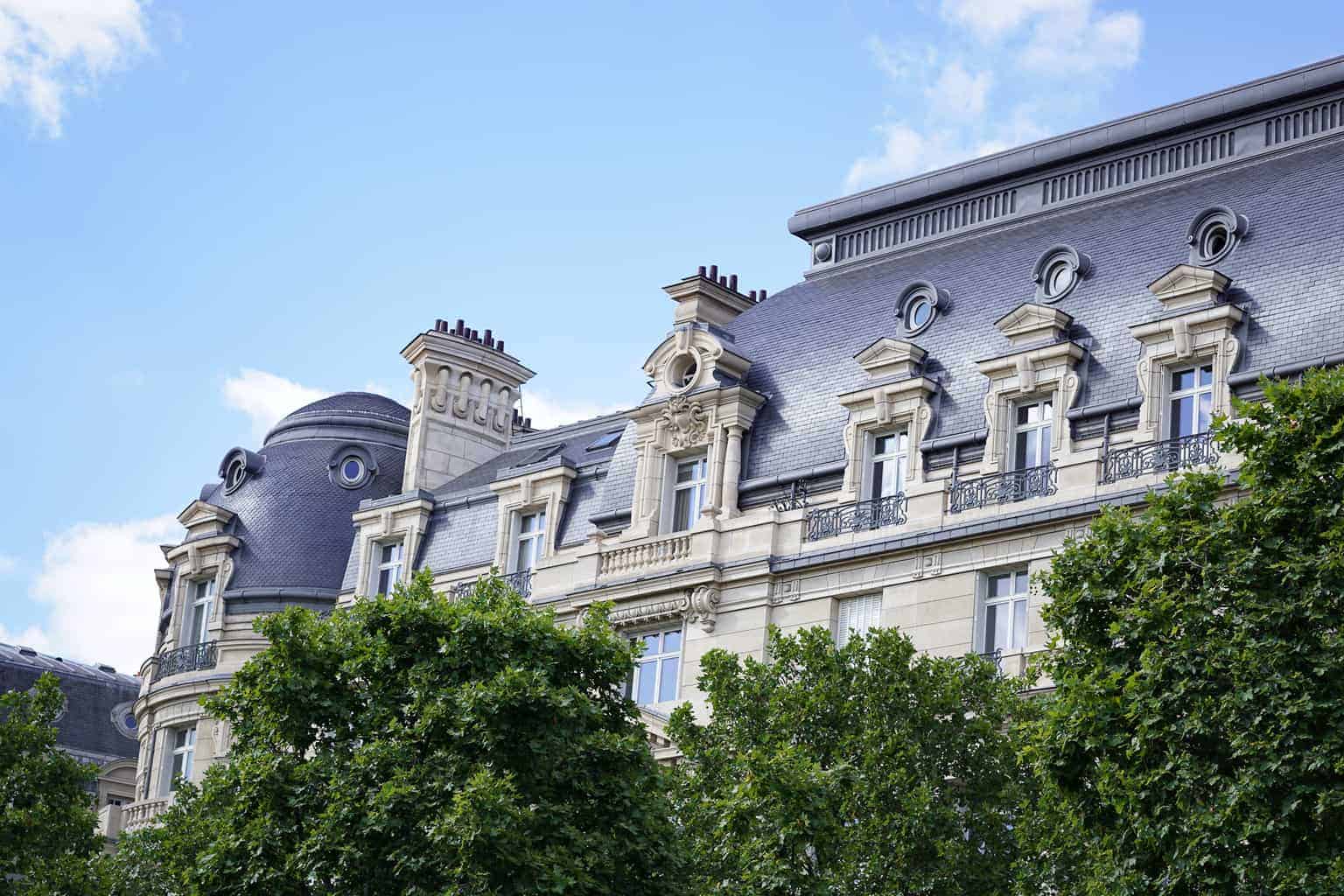
Geographically interesting
As I touched on above, France is one of the most geographically diverse countries I’ve ever visited. From the stunning Calanques bordering the Mediterranean to the mighty ochre canyons of Roussillon and Rustrel , to the pine-fringed plains of the Landes , the volcano-studded Auvergne , and the mountainous wilderness of the Pyrenees.
Each landscape is unique, and each deserves to be explored – if you have the time.
Travel off-season for a better experience
Not surprisingly, July and August are the busiest months to travel to France. The entire country, and indeed most of Europe, are on school holidays, meaning lots and lots of people on holiday. If you want to avoid the crowds, come before June or after September .
Getting cash from the ATM is cheaper
Avoid unnecessary exchange fees by withdrawing cash from any bank ATM in France. Just make sure you clear it with your bank beforehand that your card will work in France. And always travel with two cards just in case one is swallowed up (I’ve been there!).
Extra Tip – Pick up a local SIM card to save on roaming charges and stay connected.
Cash is king
Not every shop will accept your card as a means of payment. It’s important to have cash on hand at all times, or you may find yourself in deep water. Some shops selling inexpensive goods, such as the baker, will require you to spend a minimum of €10 to use your card. That’s a lot of baguettes!
Always keep your ID on you
Did you know it’s the law in France to always carry ID on you? And technically, your driver’s licence won’t suffice. ID has to be in the form of a national identity card or passport.
Cultural Tips
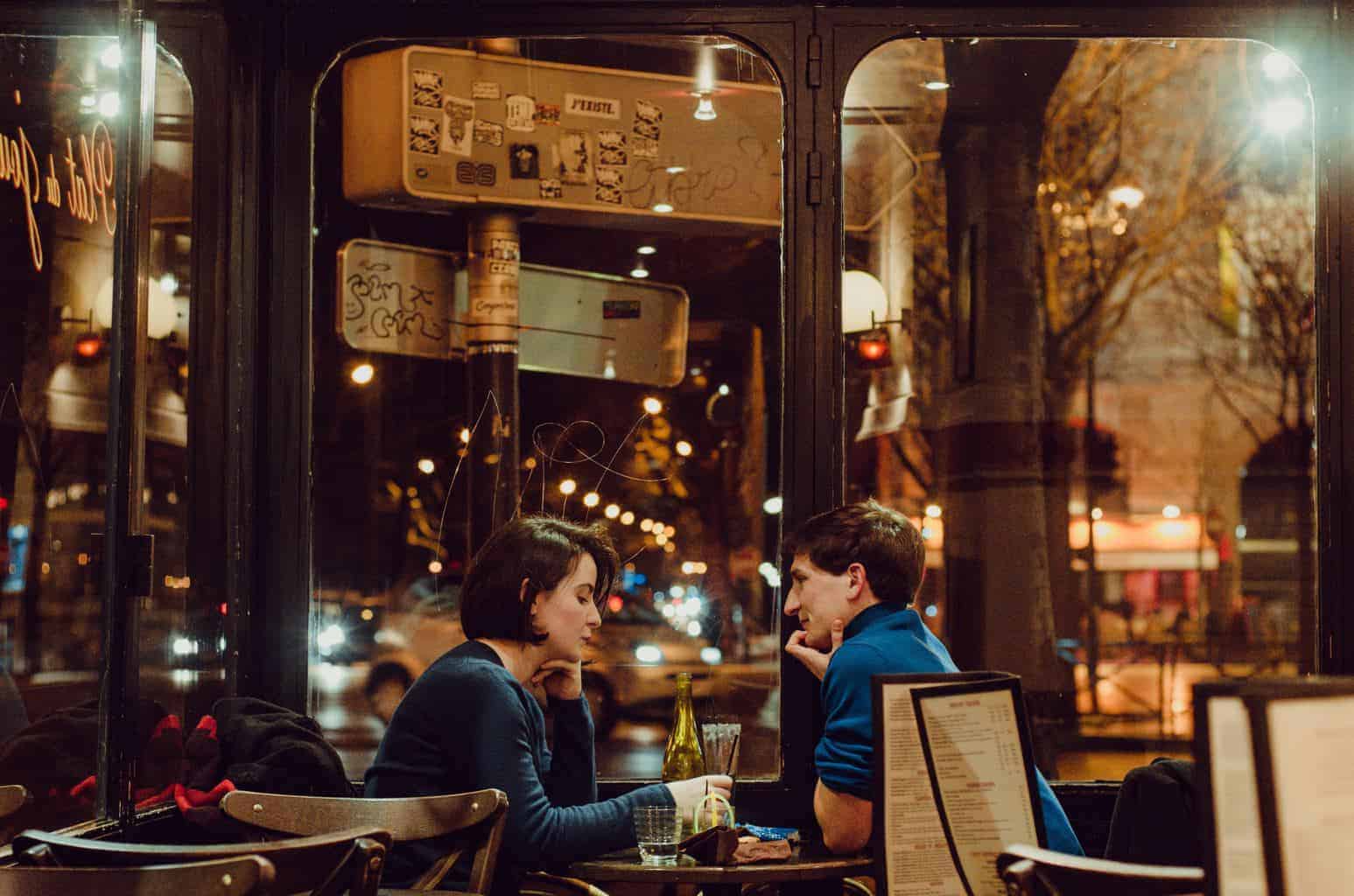
Courtesy is key
Always, and I mean always , say Bonjour or Bonsoir (hello/good evening) before saying anything else. Not doing so is considered very rude, and you can expect to be met with gruffness if you launch into a conversation or request without uttering this word – possibly the most important word in the French vocabulary – first.
The French aren’t rude – Unless you are
Most ‘rudeness’ stems from cultural misunderstandings. From foreigners not taking the time to understand the French etiquette (see above and below) and then getting bristly when the service they receive is less than stellar.
Of course, there are exceptions to the rule, I’ve heard those same rumours that rudeness is like an art form in Paris. But for the most part, they are just rumours. If you’re met with indifference, don’t take it personally. The French just don’t do enthusiasm well!
Try to learn a few basic words or phrases before you go
For the most part, you can get around in France just fine without knowing any French at all. But you’re guaranteed a better time if you make a little effort to speak the language. It can be as simple as learning Bonjour (hello), S’il vous plait (please) Pardon (pardon/sorry – particularly useful in crowded places), Merci (Thanks) and Au Revoir (goodbye).
But you’ll go even further if you can attempt to ask for what you want in French. It’s normally at this point the person on the other end will take pity on your awful French and revert to English to help you out. But your efforts are always appreciated.
To kiss or not to kiss
Ah, the dreaded bises . I’m yet to get the hang of when to shake hands and when to kiss – and I’ve been living in France for over 2 years! And don’t even get me started on how many kisses are appropriate. Too often have I pulled away too quick, or gone in for a third only to find myself met with an awkward look on the other person’s receding face.
The safest bet here is to become a master of body language. It may make you look a bit stiff, but following the other person’s cues is always going to be a safer bet when in France. A nervous wave just won’t do it here.
Smoking is commonplace
Unlike many parts of the world, smoking hasn’t yet become unfashionable in France. You can expect to be met with a plume of smoke every time you leave a building, sit at an outdoor cafe, or simply walk behind someone in the street. Even queues aren’t immune.
The best way to deal with it if you aren’t a smoker is simply to write it off as part of the culture and try not to let it bother you. Or eat indoors.
Keep your tone low
Speak loudly in France and you’ll bring unwanted attention to yourself. Perhaps unfairly (my 5-year-old hasn’t yet learned there is a volume between whispering and yelling) this rule of etiquette also applies to children.
Dress the part, or stand out
Contrary to popular belief, not everyone in France is a style icon. But, as clichéd as it sounds, the French do seem to have an effortless style that makes them seem much chicer than the average foreigner. There are a few subtle rules to observe if you don’t want to stand out too badly.
Jandals (otherwise known as flip-flops or thongs) are reserved for the beach, bare feet just aren’t acceptable anywhere, and gym wear belongs in the gym.
Food & Drink
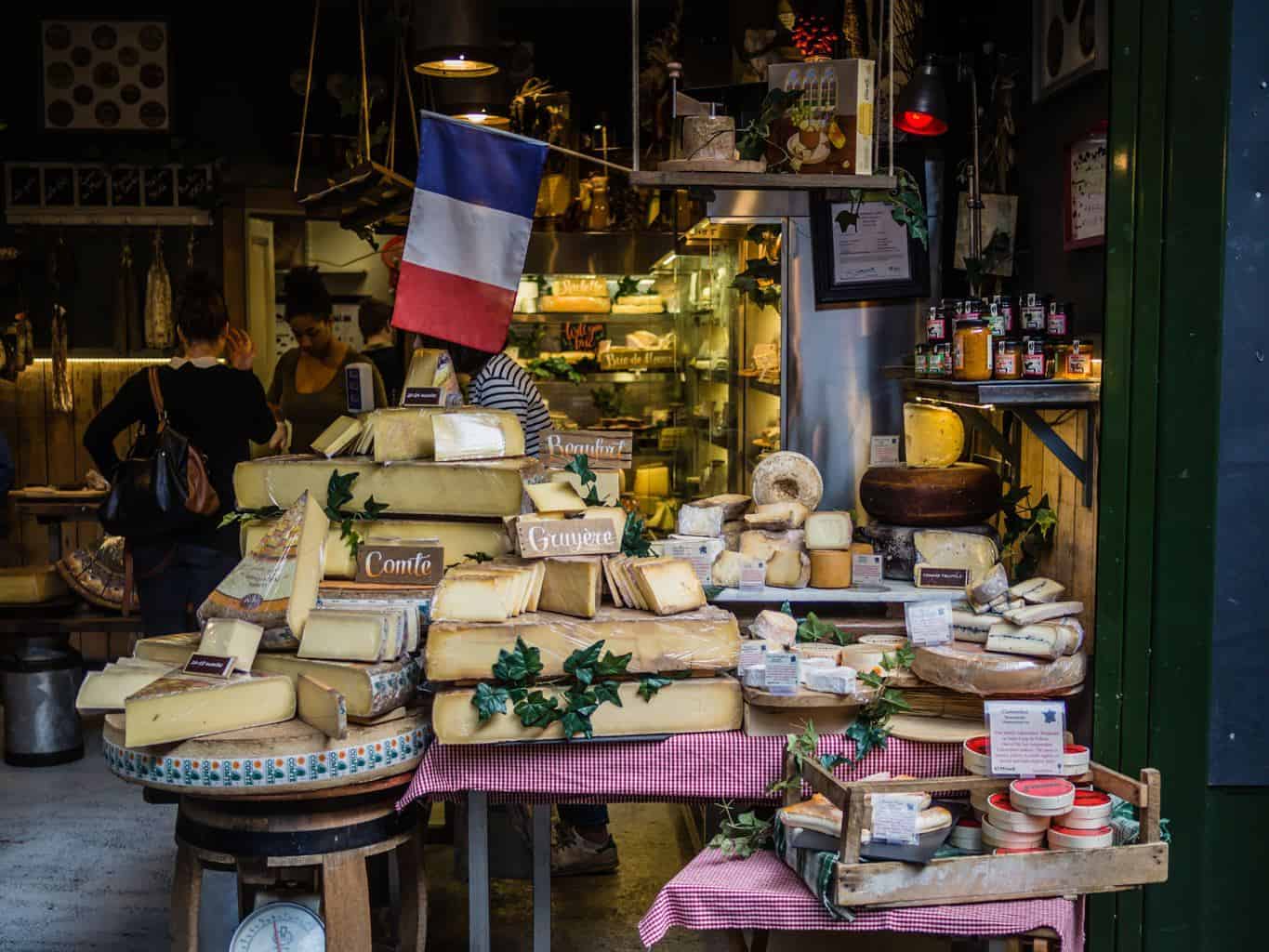
Know your meal times, or you may not eat at all
One thing the French won’t budge on is the importance of set meal times. Breakfast is simple, and it’s eaten early. Lunch is lingered over from 12-2pm. And don’t even think about eating dinner before 7.30/8 pm.
This means if you find yourself peckish between meals, you might come up short when looking for somewhere to eat. This can be particularly tricky when travelling with kids – if yours also turn into demented monsters past 8pm!
Adapt to espresso
The coffee struggle is real in France. Don’t get me wrong, the French know their coffee – hell, the country is basically run on the stuff. But you can forget any ‘frills’. Basically, you can have it black, or black with a bit of milk and sugar.
Try for anything else and you’ll undoubtedly end up disappointed. Take it from someone who used to live on soy lattes, your best bet is to learn to love it black.
Cheese is not an entree
In New Zealand, cheese is often served alongside an aperitif, or occasionally after dessert. In France, it’s strictly served after the main and before dessert.
Ask for the bill – or it won’t come
It’s not uncommon for locals to sit at a cafe table for hours after they’ve finished their meal. French waiters won’t impatiently hustle you out the door once you’re finished – quite the opposite. Unless you ask, they won’t bring you the bill either. Practise after me “ L’addition s’il vous plait “.
Kids menus aren’t a given
Children’s menus aren’t commonplace in France, although they do exist – especially in more touristy areas where businesses have adapted to foreign ways. Instead, children are expected to eat what their parents eat – and to do so without fuss.
Heading to France with kids? Test their knowledge before you go with this fun French quiz !
Cheap wine doesn’t equate to bad wine
In some countries, it’s commonly accepted that you get what you pay for when it comes to wine. In France however, you’ll be pleasantly surprised at how affordable wine is.
Don’t think you have to splash out at the restaurant to get something drinkable, sometimes the house wine – delivered by the barrel from the vineyard up the road – can be a very pleasant surprise!

Tipping is complicated
As a kiwi, tipping culture terrifies me! Why can’t there just be clear rules? Since arriving in France, I’ve heard both sides of the argument. Some say it’s not required. Others say it’s always expected.
Nowadays I tend to tip if at a restaurant (5-10% is the quoted ‘norm’) but not if I’m sitting down for a quick coffee.
Make reservations
If you really want to try out a restaurant, make sure to call ahead for a reservation. Most French people wouldn’t think of just turning up somewhere for dinner, which means that many restaurants simply won’t have room for you if you turn up expecting a table.
Visit the markets for the best food
You can’t go past the French farmer’s markets for fresh and delicious produce. So skip the supermarket and hit up the farmer’s markets instead – you’ll save yourself some money too!
Getting Around France
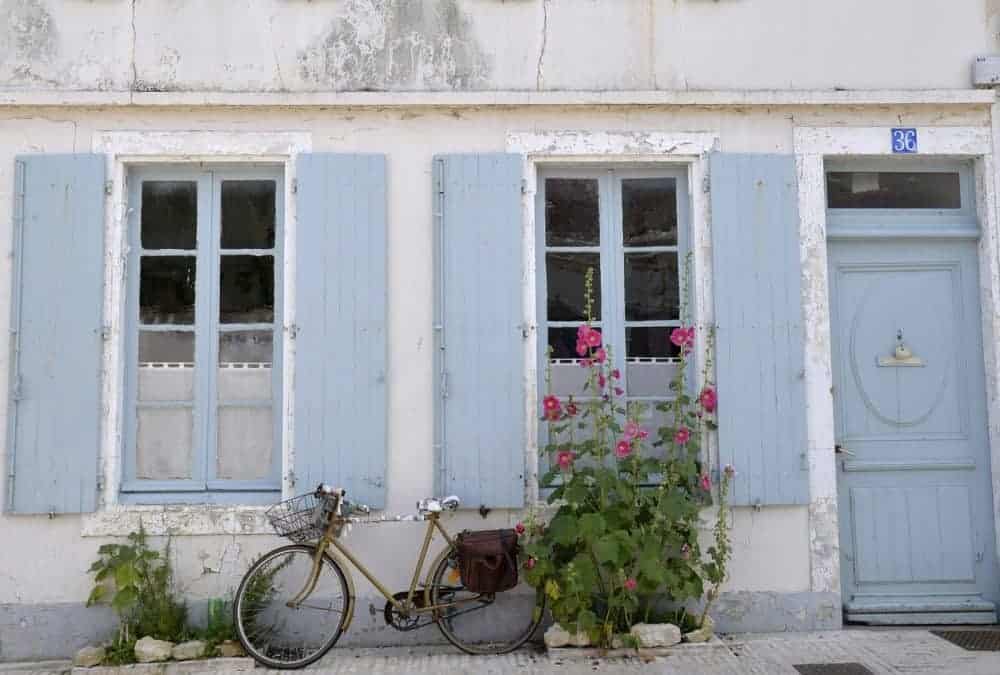
Ridesharing is a good option for solo travellers
France’s answer to ride-sharing, BlaBlaCar , is becoming very popular. It’s a great way to get around – often cheaper than the trains. And if you’re travelling solo it can be a fun way to meet new people too! The only downside is that in rural, less popular areas, the ‘rides’ are going to be few and far between.
Trains are convenient – at a cost
France’s train network is widespread and runs frequently (strikes aside). But it can be a costly option for travelling. If you’re travelling on the TGV – Use the SNCF site to look out for cheaper fares marked iDTGV, or search over a month to find the cheapest days and times for travelling.
Striking Culture
The French love to strike, so much so, they’ve got a dedicated website to keep track of the strike action around the country! If you’ve got travel plans within the country be sure to check out C’est la grève (literally, “it’s the strikes”) for info that may affect your journey.
Toll Charges
Motorways in France have toll charges, so its best to work out how much you’re going to have to cough up at the toll gates before you start your journey. Check the cost of your journey on ViaMichelin .
The alternative is to take the National roads – they may be slower, but it can be a great way to discover more of the country if you’ve got time up your sleeve .
Not all roads are created equal
Unfortunately, most GPS don’t know the difference between a paved double lane road and a narrow country alleyway that’s barely big enough for one car! When travelling off the beaten path (like around the villages of the Luberon Valley ) use common sense and street signs as well as your GPS and you’ll avoid awkward situations.
Operating Hours (or Lack Thereof)
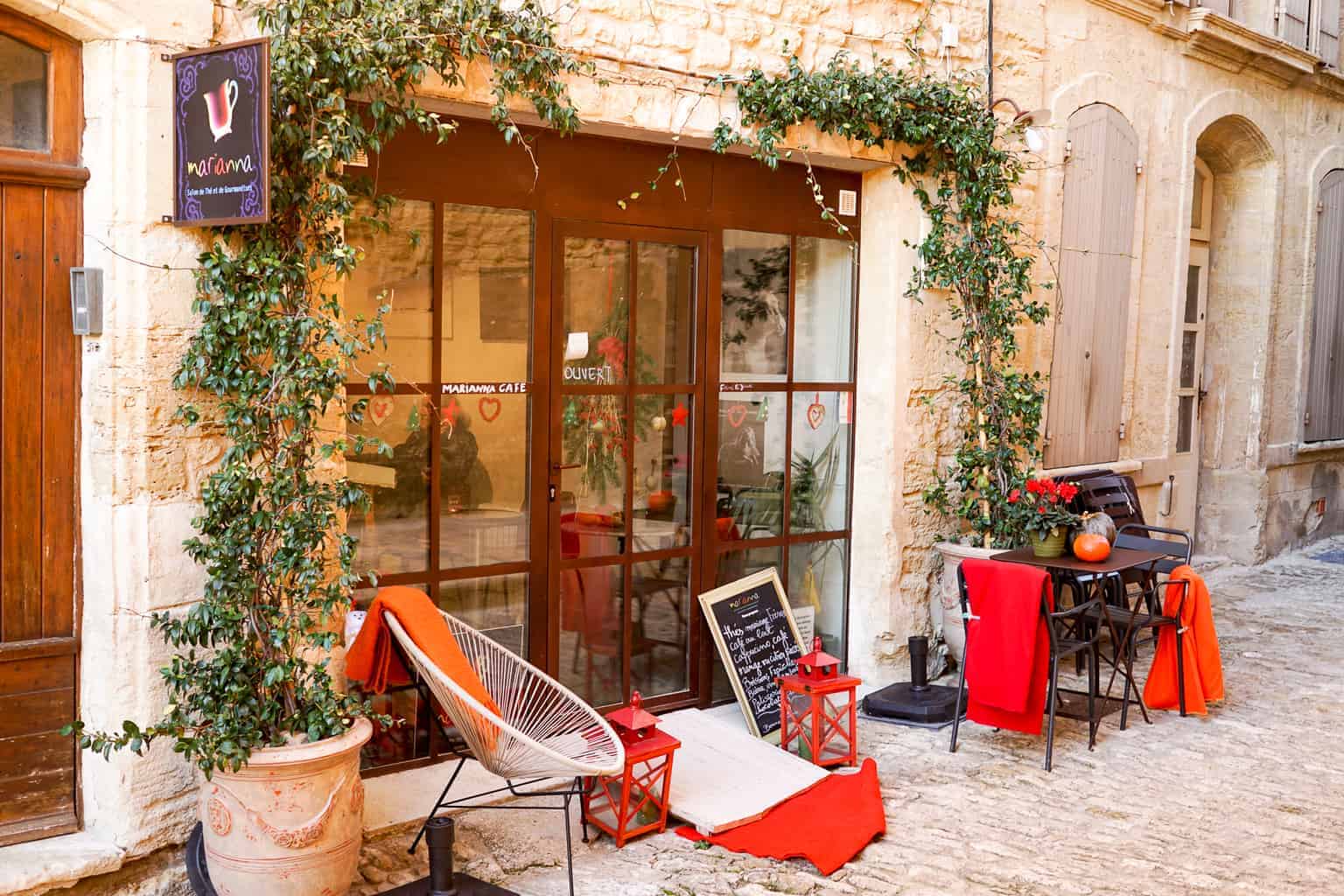
Sundays are for family
The country basically comes to a standstill on a Sunday. It’s still very much a family day – where everyone gets together over a long lingering lunch. But times are slowly changing.
In some parts of the country, you’ll find supermarkets open for a few hours in the morning. And in touristic spots, shopkeepers do have the option to open on a Sunday during the holiday season.
Don’t expect to get anything done between 12-2
Likewise, many shops close their doors between 12-2 while the staff go to lunch. This goes for banks, post offices and some supermarkets too. But remember, you’re best to go with the flow and eat at this time too, otherwise you’ll be left without food until dinner!
And finally…
Holidays aren’t the same as real life.
If you’ve fallen head over heels during your holiday in France, you, like many before you, may be tempted to make the holiday permanent and move here! Although living in France can be an incredible experience (I’m not sure I’ll ever want to leave!), just know that it’s not an easy journey by any stretch of the imagination.
So before you start looking in the real estate agent’s window, do yourself a favour and think about the realities of life abroad (in a country with a notoriously horrendous administration) first!
France is the most visited country in the world. And with so much to see and do, it’s no wonder people from around the globe keep flocking back year after year. If you’re not sure where to start planning your holiday, check out my travel in France archives for loads of inspiration!
Travelling in France is an incredibly enriching experience. Just make sure it’s unforgettable for the right reasons!
Pin this for later:
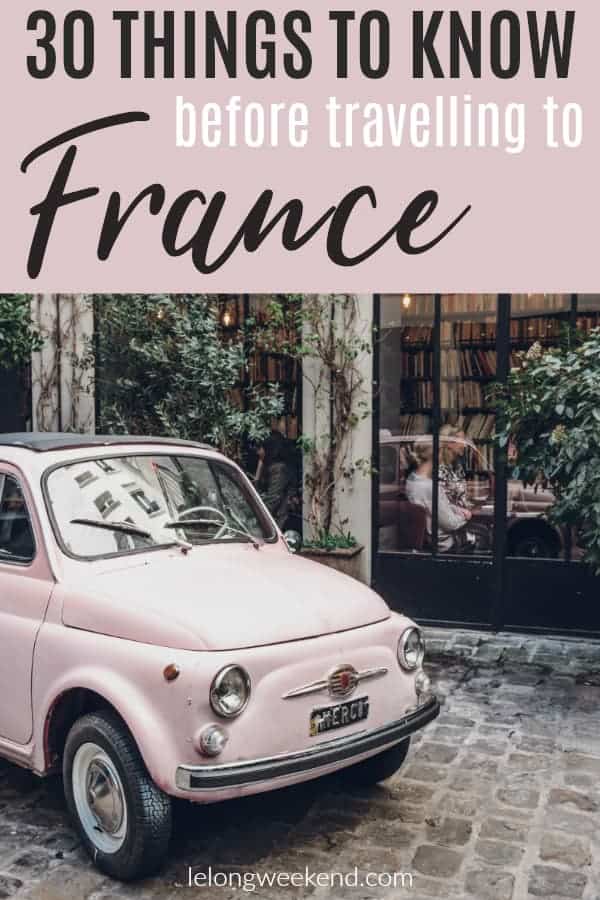
Similar Posts

Boutique Provence Gift Guide + Exclusive Discounts!
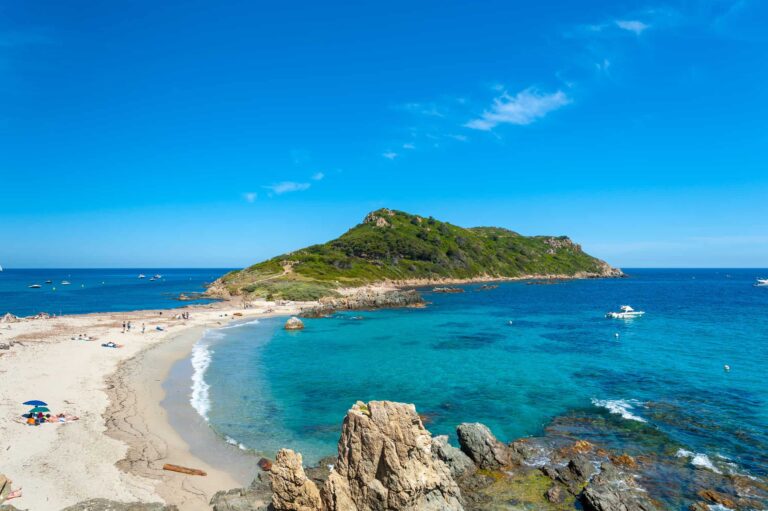
Discover Cap Taillat – An Easy Day Trip from St Tropez, France
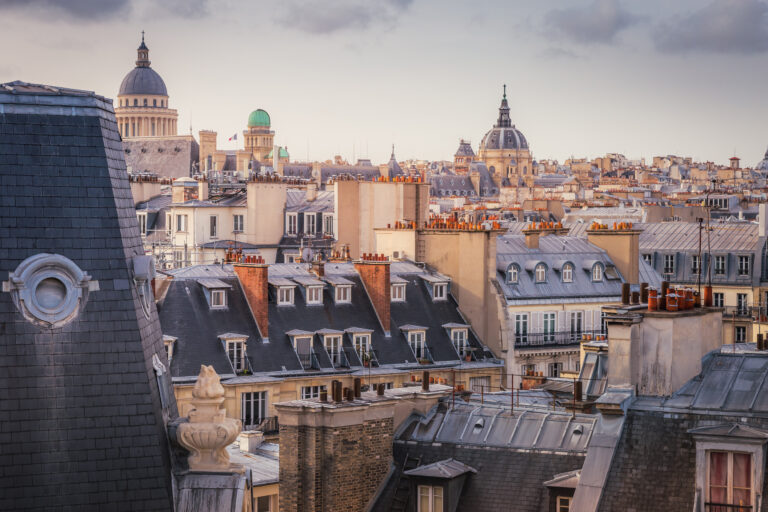
Most Beautiful French Cities to Visit in 2024
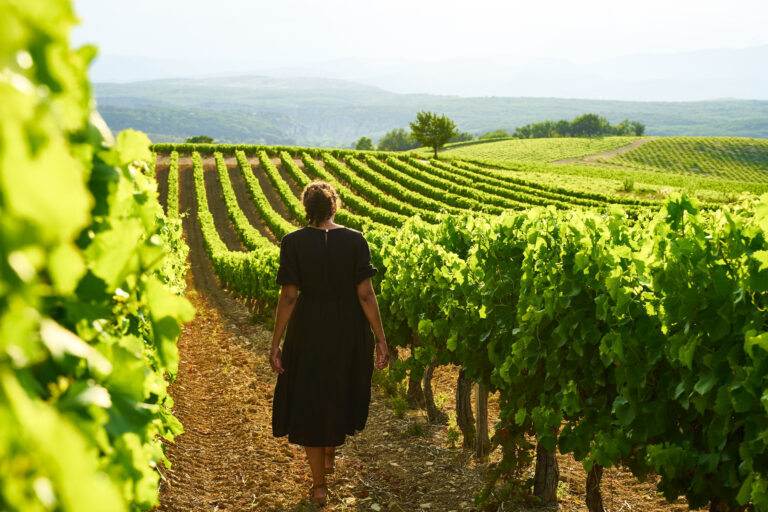
Best Wineries in Provence, France (to Visit in 2024!)
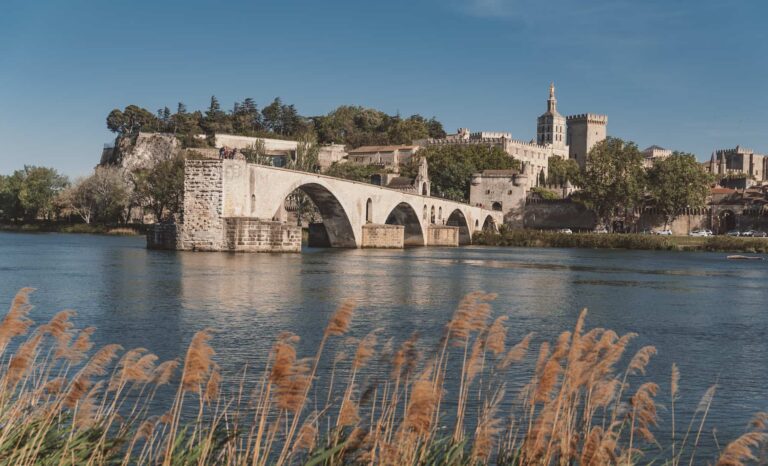
15 Best Airbnbs in Avignon, France – From Floating Homes to Inner-City Sanctuaries
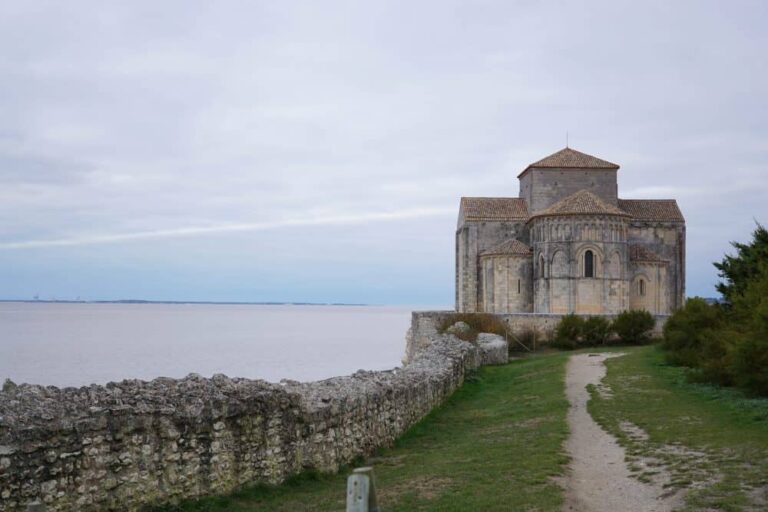
France’s Most Beautiful Villages: Talmont-sur-Gironde
Lovely piece, and oh so true at every level! I live in France and although I’m French, I wasn’t brought up here and began life in France well after mid-life, so I might just as well have been a foreigner. However much France irritates me – the bureaucracy, as I’m sure you know, has been specifically designed to ensure you don’t get what you need in anything under three visits to an office an hour away – there are certain habits that endear the country to me just when I’m about to throw in the towel. The art of lingering, for example, of having a coffee and then sitting there for an hour or two watching people go by, while taking an occasional glance at the newspaper. Another thing I’ve noticed is the French propensity for argumentation. It’s not that anyone wants to convince you or even be right, but they just like to argue, disassemble an issue, turn it over on all sides and pick it to pieces. It can be quite entertaining or dismaying, depending on the subject and the level of wine-drinking. And I could go on. Perhaps the most striking thing about France and the French is that there is so much texture… there’s plenty to say and describe and write about – I could probably write a story about my little region every single day and never run out!
You forgot to mention how important it is to book a seat on a train in France! Most countries you can just get on a train with a ticket but not a reservation, but not here in France. Like most things here you must book in advance!
Ah yes, good point. Was thinking of updating to include transport know-how, so will include this when I do!
Leave a Reply Cancel reply
Your email address will not be published. Required fields are marked *
This site uses Akismet to reduce spam. Learn how your comment data is processed .

30+ France Travel Tips You Need to Know Before Visiting
Last Updated on 18th January 2023 by Sophie Nadeau
This post may contain affiliate links. Please check out my privacy policy and disclosure for more information.
Many visitors to Europe select to visit France for its wonderful châteaux, wealth of foodie experiences, and of course, its gorgeous cities. And so if you opt to visit the country on your next trip to Western Europe, here are the very best best France travel tips , including everything you need to know before visiting l’Hexagone for the first time!

I’ve travelled through France extensively. From North to South and East to West, I’ve experienced the glittering lights of the Eiffel Tower, the crashing waves of Brittany and sipped on the wines of Provence.
In the West, the underrated city of Nantes offered a glimpse of what the Kingdom of Brittany would have been like, while the Eastern city of Besançon has been rated one of the ‘greenest cities in France’ .
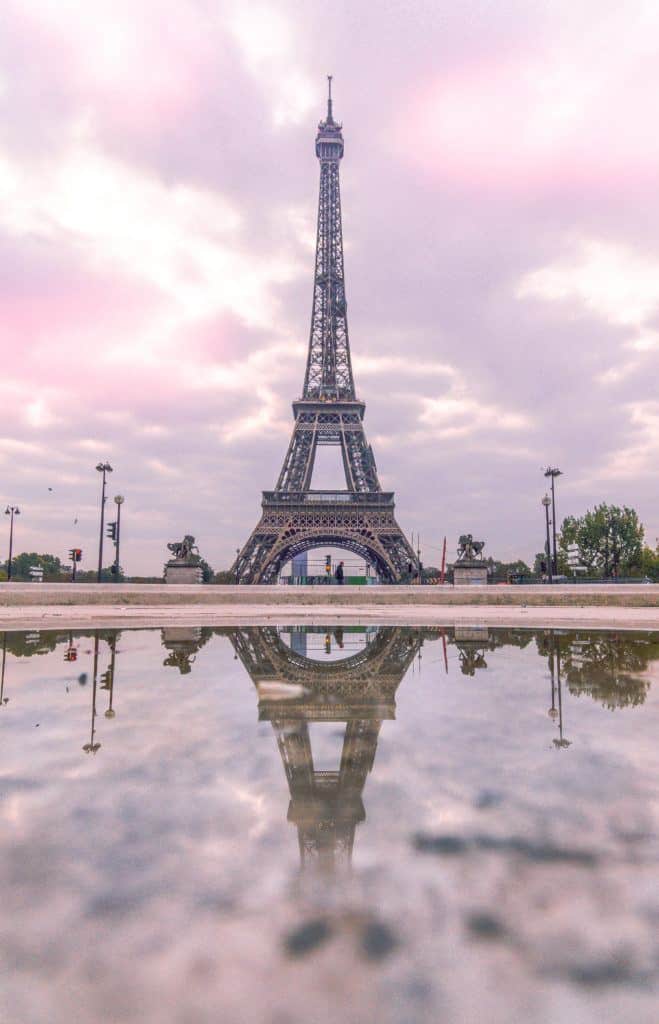
#1 Knowing a little French will go a long way!
#2 there’s more to france outside of paris, #3 pharmacies can be found everywhere (and are easy to spot), #4 you can get water for free at mealtimes, #5 many coffee shops and cafés don’t open early, #6 the train is one of the best ways to experience france, #7 pack comfortable (and easy to walk in) shoes, #8 dress for the seasons, #9 the best time to visit france is in the shoulder season (spring or autumn), #10 buy a universal travel adapter, #11 sample the local cuisine in whichever region you visit, #12 make the most of outdoor markets, #13 france is perfect for wine tourism, #14 keep an eye on your belongings (at all times), #15 pack your camera, #16 book your accommodation well in advance, #17 in europe, the first floor is the ground floor (ground level), #18 save money by ordering from the ‘prix fixe’ menu, #19 france has some of the best christmas markets in europe, #20 be sure to visit some french châteaux, #21 learn la bise etiquette, #22 make use of the public transport, #23 say ‘bonjour’ when entering a shop/ restaurant/ professional establishment, #24 service might be slower than you’re used to, #25 be sure to head off the beaten path in france, #26 free bathrooms are rare in france, #27 how french meals work, #28 many businesses close for august, #29 know that france has toll roads, #30 bank holidays are on set days each year, #31 it can be cheaper to drink your coffee at the bar/ counter.
There’s a common perception and often told myth that French people can be rude, and this is especially so of Paris. However, much of this stems from simple misunderstanding. Though many people, especially those working in the tourism industry have a good level of English, knowing a few words is only polite and will help you plenty!
After all, there are still plenty of restaurants in Paris where the menu is only in French, and in some rural towns you’ll be hard pressed to get by if you don’t speak any of the local language at all. To help you with basic French phrases, buy a simply French phrasebook like this one .
Many visitors to Europe make the travel mistake of visiting simply Paris and declaring that they’ve ‘seen France’. However, if I could give you just one France travel tip, it would be to make sure that you leave the city at least once, if only to take a quick side excursion to a nearby town or into the countryside. For more Wanderlust inspiration, check out this complete guide to day trips from Paris .

There’s a specific French law which requires pharmacies to be located fairly frequently throughout most towns and cities. As such, finding a pharmacy is never too difficult, with some even open on bank holidays and Sundays. If you have a minor ailment, then pharmacists are often pretty helpful. French Pharmacies also stock a wide array of luxury beauty and healthcare products.
Tap water is safe to drink and completely free. Save money (and the use of a plastic or glass bottle) by simply ordering a ‘carafe’ when eating out at a restaurant. Many tourists make the France mistake of not doing this and end up wasting precious euros that they could better spend elsewhere.

Oftentimes in France, it can be pretty difficult to find anywhere for coffee earlier in the morning. This is especially true of smaller towns and villages where cafés and bistros typically don’t open until at least 10 AM in the morning. As such, if you’re an early riser then don’t expect to get your caffeine fix pre 10!
If you’re looking for a fast and efficient way to see the best of France, then taking the train is your best option. Book well enough in advance and you’ll be rewarded by some pretty good deals. High speed trains operate throughout France, meaning that it’s perfect possible to go from Paris to Aix-en-Provence in just a few hours.
The views out the window are often picture perfect, such as those when travelling through the delightful region of Burgundy (or Bourgogne as it is so-called in French) .
For those who are looking to see the best of Europe, you can even take the Eurostar between Paris and London , with the journey time from city centre to city centre taking just two and a half hours.

Many of the largest cities in France (Paris, Bordeaux, Nantes, Montpellier, etc) are all best explored on foot and so comfortable shoes that you can easily walk in are an absolute must.
I personally love wearing keds in the Summer months as they pair easily with dresses and then transition to cute boots like these ones in the fall when the temperature drops and it’s time to wrap up warm.
And since we’re on the subject of fashion and what to wear in France, be sure to dress to blend in with the local style. In France, this generally means a monochrome wardrobe and classic style with few bold prints or colours. I particularly love dresses from this company as they’re fairly neutral in appearance and yet can be dressed up and down as the occasion so requires.
Leave your extra high heels at home as though they may look pretty, France is filled with cobbled lanes and they can be hard to navigate! Otherwise, be sure to wrap up warm in the winters as snow is not uncommon in the North of the country (including in Paris) . I personally love this vegan coat !

While winter is often pretty cold and summer means that France is packed with tourists, the best time to visit France is either just before or just after peak season, i.e. during the European shoulder seasons .
What this typically means is the best of the weather with the fewest crowds and best prices for flights and accommodation. Of all the France travel tips I could give you, visiting in Spring or Fall is one of the best!
If you’re visiting The Netherlands from the USA, UK, Canda, and a plethora of other countries, then you should know that you’ll need to bring along a travel adaptor.
The plugs in The Netherlands are C and F. If you want to save money, then purchase this all-in-one travel adaptor that will allow you to use your electronics in over 150 countries!

One of my all time top France travel tips would be to make sure to sample the local food in whichever French region you opt to visit! For example, while pastries are to be found across l’Hexagone, Normandy is best-known for its ciders, while seaside towns wow visitors with their seafood-inspired menus. Head to Bordeaux, and the sweet canelé is the order of the day, while quiche is a crowd favourite!
Unlike in many countries where the supermarket is your go-to place for foodstuffs, France has a real outdoor market culture, with even the smallest towns hosting typically one produce market a week. There, you can go to pick up the freshest vegetables, fruit, and a variety of mouthwateringly good cheeses.

Of course, apart from all of the fromage (that’s ‘cheese’ in French) and pain (that’s ‘bread in French’) , one of the most famous exports from France is that of wine (or ‘vin’ in French) . Oenophiles will soon rejoice at the sheer number of types of tipple available in each region.
For example, while Bordeaux is known for its rich reds, Provence is known for rosé wines and Champagne is, of course, world-famous thanks to its sparkling white wine. Another French region worth visiting for its world-famous wine is that of Alsace, which is particularly known for its sweet white wines!
Like every other capital city in Europe (and the rest of the world) , Paris and many other large cities in France have no shortage of opportunist pickpocketers who won’t hesitate to pluck that phone or wallet out of your open handbag or from the back pocket of your jeans.
Keep an eye on your stuff, use a crossbody bag rather than a rucksack and make sure everything zips up properly! I personally use a crossbody bag by this brand and love its shape, size, and versatility. In other words: be sensible. For more scams to avoid in France, check out this guide to common Paris tourist scams to avoid .

From the snow-capped Alps in the east of France to the crashing waves of the Atlantic Ocean to the West, there’s no shortage of beautiful places to visit in France.
And what better way to create souvenirs from your trip than by snapping photos of your travels through France? Looking to get started? Here’s a guide to the best travel photography gear for your European adventures!
In order to ensure the best accommodation during your trip to France, book well in advance (i.e. as soon as you know what dates you’ll be visiting). This is particularly important for those looking to visit at peak season (ie, during the Summer months and during school holidays) and especially true for ever-popular destinations such as Paris, Bordeaux, or Nice. Check out the best accommodation prices here.

If you’re coming from North America, it may well surprise you that the first floor is actually known as the ground floor. This means that instead of having 1, 2, 3, 4, etc, the floor levels will be ground (sometimes known as 0), 1, 2,3.
One of the number one France travel mistakes that many visitors to France make is to not make the most of saving a little money at meal times! For example, if you order from the ‘prix fixe’ menu, then you can often get several courses at a much cheaper rate than you would have done had you ordered the dishes separately.

After Germany, there’s no denying that some of the best Christmas markets in Europe, and indeed in the world, are to be found in France. For those who are looking for the very best festive cheer that l’Hexagone has to offer, be sure to head to the Alsace.
After all, while Colmar is decked out in decorations for the season, Strasbourg (the largest city in the Eastern French region) is self-proclaimed to be the ‘capital of Christmas’. Meanwhile, there are a couple of dozen smaller Christmas markets in Eastern France which are also well worth exploring. Check here to discover the best Christmas Markets in France .
Of all the France travel tips I could give you, making sure to visit a French Château or two would definitely be among one of the most important. Throughout the European country, there are a myriad of fortresses, Renaissance palaces, and regal abodes well worth exploring.
Although some of the most famous are the Palace of Versailles and Château de Chambord, there are many more hidden gems worth exploring, particularly in Normandy, Brittany, the Loire Valley, and in the Alsace.

In France, it’s common to greet people for the first time with a handshake, and those you’re closer to with ‘la bise’. Although in many Anglophone countries loved ones greet one another with a hug, in France you’re more likely to discover that people will be more comfortable with ‘ la bise ,’ i.e. touching cheek to cheek while making a ‘kiss sound’.
In larger cities, you’ll soon discover that you certainly don’t need to rent a car to get around. This is particularly true of larger settlements like Paris, Nice, Montpellier, or Lyon, where the public transportation is fantastic and navigating the narrow streets (let alone finding ample parking space) can be much more trouble than it’s worth!
Similarly, in the larger cities there’s no need to hail a taxi (or cab) since you can save much more money by opting for the local bus, train, or tram! It’s also worth noting that ride sharing/ booking apps like Uber and Kapten are becoming increasingly popular in the larger cities.

The French continually suffer from a reputation for ‘being rude’ and after spending plenty of time in the country, I’m happy to say that this is certainly not the case! However, one France travel mistake that many visitors to the city make is that they don’t say ‘bonjour’ (i.e. hello) upon entering a store.
This is seen as the height of rudeness and you’ll soon be rewarded by much better customer service if you make sure to do this each time you go into a professional establishment.
If you hail from North America, then you might expect service to be incredibly fast. This is simply not the case in Europe, where people are used to taking their time to enjoy a meal and waiting between dishes and even for the bill (l’addition in French) is taken at a more leisurely pace.

While many tourists are sure to enjoy the sunshine of the French Riviera, the highlights of Paris, and the gastronomy of Bordeaux, fewer still head off the beaten path and visit smaller French towns which are lesser-known but remain, nevertheless, hidden gems. Some of my favourite underrated cities in France include Nantes, Narbonne, and the North Eastern French city of Metz.
More often than not, public bathroom facilities are to be paid for and so you should always keep some change on you in the eventuality you’ll need to use the WC! While I personally recommend heading to a café and getting an espresso as this will work out at around the same price, public bathrooms in Paris can range from anything to 30 cents and up to €1,50 (such as those in the Jardin des Tuileries).
Most meals are around three courses long. A small savoury dish (known as the entrée), is followed by the larger main course (known as le plat principal) and then followed by dessert. In my experience, people normally take a cheese board, or a sweet to end their meal.
Although it’s possible to eat both at the end of the meal (the cheese at the very end with a small glass of wine), most people just stick to one or the other. French food can often be rich and more than three courses would be too much!
Many businesses close in France for the month of August. This is when most French residents take their summer holidays and you’ll find many of the larger French cities devoid of people. Many clothing shops, specialist food shops, garages, and even bakeries close up shop for most, if not all, of the month of August.
In some towns, it’s not uncommon to discover that every bakery in the area has closed up shop for August at the same time, meaning that you may have to go another town over in order to acquire baked goods! At the end of August and into September, the period when people return from their summer vacations is known as la rentrée.
If you’re planning on taking a road trip through France (check out our best road trip tips) , then a vitally important piece of information to know about is that the country is full of toll roads. A toll is known as ‘péage’ in French. These can range anywhere from just a few euros to tens of euros, such as the Bordeaux to Paris route which costs a staggering €55,60.
As such, if you’re planning a road trip through l’Hexagone, be sure to factor in the extra cost accordingly. Last but not least on the subject of tolls, Brittany is the only motorway-free region of France, meaning that it doesn’t have any motorway toll roads.

Unlike somewhere like in the UK where bank holidays are the ‘first Monday of May’ or the ‘first Monday after Easter,’ French bank holidays are taken on the date at which they fall.
This means that if the 1st May ( Labour day in France ) falls on a Wednesday, the day is celebrated on the Wednesday. Many French workers will ‘faire le pont’ (make the bridge) which is when they’ll take their holiday leave to make up the day(s) between the weekend and the bank holiday.
Please note that one of my top coffee travel tips for France is that there is often a different price for sitting outside/ inside at a café table as opposed to consuming your beverage at the bar/counter itself. In French, the bar is known as the ‘zinc’ and it’s usually cheaper to consume your drink (sometimes up to €1 off) at the bar.
Enjoyed reading about the top France travel tips you should know about before visiting France for the first time? Pin this article now, read it again later:

Sophie Nadeau is a full time travel writer and photographer focused on cultural experiences in Europe and beyond. When she's not chasing after the sunset (or cute dogs she sees on her travels) she can be found reading, playing video games, and going on long hikes with her husband.
Similar Posts

‘I Love You Wall’ or ‘Le Mur des Je t’aime’, Montmartre

Reims Christmas Market Guide 2024 (+ Insider Travel Tips)

20+ Best Things to do in Beaune, the French Wine City

A Guide to the Best Things to do in Moustiers-Sainte-Marie

Bibliothèque Forney: That moment when your local library is a former medieval mansion in Le Marais…
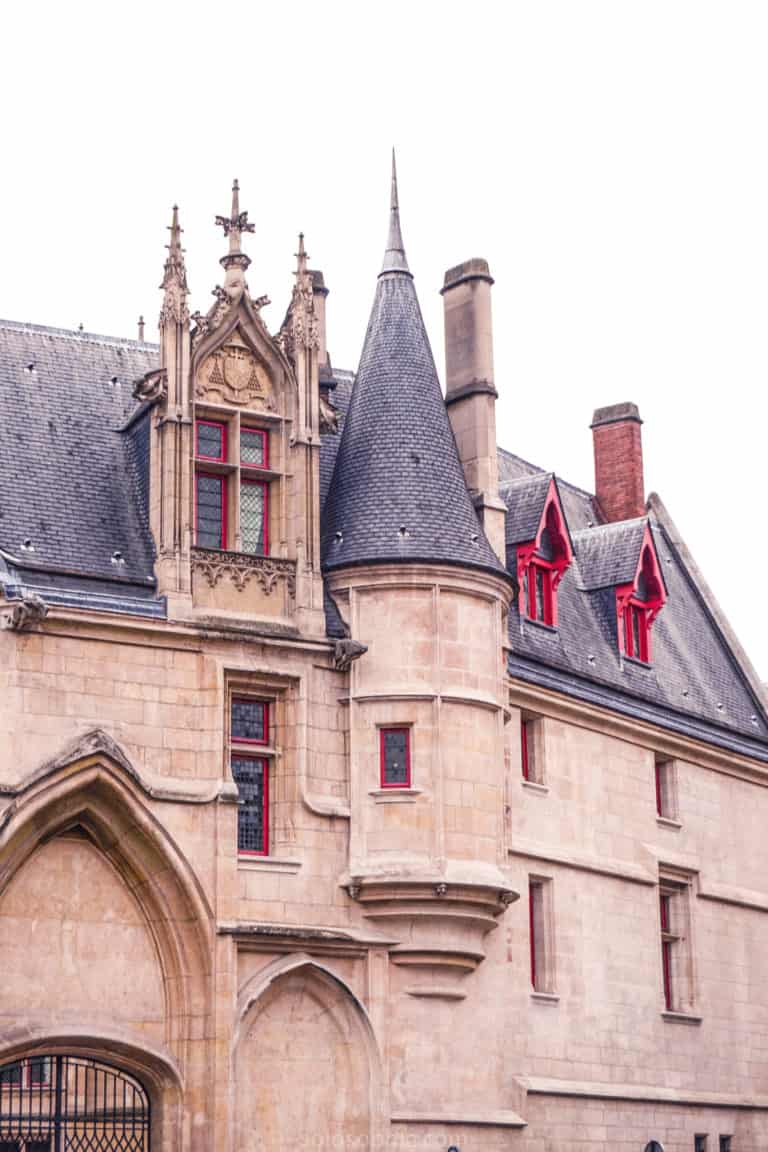
Harry Potter in Paris: Study Abroad, Inspiration, Magic & More!
Leave a reply cancel reply.
Your email address will not be published. Required fields are marked *
Save my name, email, and website in this browser for the next time I comment.
This site uses Akismet to reduce spam. Learn how your comment data is processed .
One Comment
A helpfully informative post! Great read!!
The best 7-day France itinerary
Book your individual trip , stress-free with local travel experts
Select Month
- roughguides.com
- 7-days-in-france-itinerary
Plan your tailor-made trip with a local expert
Book securely with money-back guarantee
Travel stress-free with local assistance and 24/7 support

written by Dre Roelandt
updated 27.08.2024
Looking for a quick but exciting tour of France ? This 7-day itinerary is packed with highlights, starting in the City of Light and covering everything from alpine lakes to sun-drenched Provence, and the glitzy Riviera. You’ll get a taste of French culture, cuisine, and scenery, with visits to top museums, beautiful lavender fields, and more. Here’s our best 7-day France itinerary, crafted by our Rough Guides local travel experts.
Planning a week-long trip to France? Here’s a quick overview:
- Day 1: Arrive in Paris, explore Le Marais, visit local markets, and end with a Seine River cruise.
- Day 2: Tour Paris highlights including the Louvre, Musée d'Orsay, and the Eiffel Tower.
- Day 3: Choose a day trip to either the Palace of Versailles, Mont St Michel, or Loire Valley châteaux.
- Day 4: Travel to Annecy, known as the "Venice of the Alps," and explore its charming old town and lake.
- Day 5: Journey to Aix-en-Provence, wandering its elegant streets and experiencing Provençal culture.
- Day 6: Visit the lavender fields of the Valensole Plateau in Provence.
- Day 7: Take a day trip to historic Fréjus on the French Riviera, exploring Roman ruins and Mediterranean beaches.

Notre Dame de Paris Cathedral interior © Shutterstock
Day 1: Arrive in Paris
Once you arrive in Paris, take it easy and ease into the city's charm. Start with a relaxed stroll through Le Marais, one of the most delightful neighborhoods in Paris. As you explore, be sure to stop by a local boulangerie—like Du Pain et des Idées or Boulangerie Murciano—for a fresh croissant or pain au chocolat. Or grab a pastry at La Maison Stohrer, the oldest pastry shop in Paris.
When lunchtime rolls around, head over to the Marché des Enfants Rouges , the oldest covered market in Paris. It's the perfect spot to sample a range of French and international cuisines. For a quick bite, queue up at Chez Alain Miam Miam for a galette with local cheese and ham.
As the evening approaches, head to Rue Montorgueil, a lively pedestrian street packed with restaurants, cafés, and food shops. Treat yourself to a classic French dinner at a traditional bistro like Au Rocher de Cancale.
Wrap up your first night with a relaxing Seine river cruise to catch views of Paris' most famous landmarks all lit up. Then spend the night in your Paris accommodation .

Louvre museum, Paris © Tijl De Meulemeester/Shutterstock
Day 2: Explore Paris' highlights
On the second day, you’ll rise early and beat the crowds to the Louvre (Rue de Rivoli), home to some of the world’s most famous masterpieces, including the Mona Lisa. To beat the crowds, book your tickets ahead of time and use the Porte des Lions entrance, which tends to be quieter. Plan to spend about 2-3 hours here, focusing on the main highlights if you’re short on time.
Next, cross the Seine and head to the Musée d'Orsay. This former railway station is now a stunning museum filled with an impressive collection of Impressionist art. Make sure to check out works by Monet, Van Gogh, and Renoir.
In the afternoon, head to the Eiffel Tower. If you’re up for it, take the stairs to the second floor for a more unique experience and shorter lines. Consider timing your visit with the sunset for an unforgettable view.
Finish the day with dinner in the nearby 7th arrondissement. Bistrot Chez France is a cozy spot, or if you're a fan of duck, Au Petit Sud Ouest is a must-visit for its duck specialties.

France itinerary 7 days: Versailles Palace in Ile de France © Shutterstock
Day 3: Day trips from Paris
For your third day, choose one or two of these fantastic day trips from Paris. Keep in mind that attempting all three in one day is not feasible due to travel times.
Palace of Versailles
Just a 45-minute hop on the RER C train lands you at the doorstep of Louis XIV's ego-made manifest . The Palace of Versailles, a UNESCO World Heritage site, was the political heart of France from 1682 to 1789. Be prepared to be awed by the lavish State Apartments, the breathtaking Hall of Mirrors where the Treaty of Versailles was signed, and the sprawling gardens with their elaborate fountains and sculptures. You could easily spend half a day here soaking in the splendor of French royal history.
Mont St Michel
If you’re up for a longer adventure, Mont St Michel is an awe-inspiring island commune topped by a medieval abbey, situated off France’s northwestern coast. Although it’s a 4-hour journey each way, the otherworldly beauty of this UNESCO World Heritage site makes it worth the trek.
To get there, take an early TGV train from Paris Montparnasse to Rennes, followed by a shuttle bus to Mont St Michel. The abbey rising dramatically from the sea is a sight you’ll never forget. Spend your time wandering the narrow, cobblestone streets of the village, exploring the abbey, and enjoying the local shops and restaurants.

Chateau de Saumur, Loire Valley, France © Alexander Demyanenko/Shutterstock
Loire Valley
The Loire Valley, often called the "Garden of France," is famous for its breathtaking Renaissance châteaux, lush vineyards , and charming villages. From Paris, take a TGV train from Montparnasse to Tours (about 1 hour). Once there, you can either join a guided tour or rent a car to explore the region at your own pace. Must-see spots include the majestic Château de Chambord, the elegant Château de Chenonceau, and the historic Château d'Amboise. The Loire Valley is also known for its wine, so you might want to indulge in a tasting at one of the local vineyards.

France itinerary 7 days: Paris train station © Shutterstock
Day 4: Take the train to Annecy
Say goodbye to Paris and hop on a high-speed TGV train from Paris Gare de Lyon to the charming town of Annecy. The trip takes around 3 hours and 40 minutes, so be sure to book your tickets in advance through SNCF to snag the best deals.
Once you arrive, check into your hotel and get ready to explore Annecy’s enchanting old town. Often called the “Venice of the Alps,” Annecy is famous for its canals and breathtaking alpine scenery. Take a relaxing stroll through the medieval Vieille Ville (Old Town), where you’ll be greeted by pastel-colored houses and balconies overflowing with flowers.
Be sure to visit the Palais de l’Ile, a 12th-century building that was once a prison and now serves as a museum, perfectly perched in the middle of the Thiou Canal. As the evening sets in, head down to the shores of Lake Annecy—one of the cleanest lakes in Europe—for a peaceful walk. For dinner, treat yourself to a Michelin-starred experience at L’Esquisse, or enjoy some classic Savoyard cuisine with a modern flair at La Ciboulette.
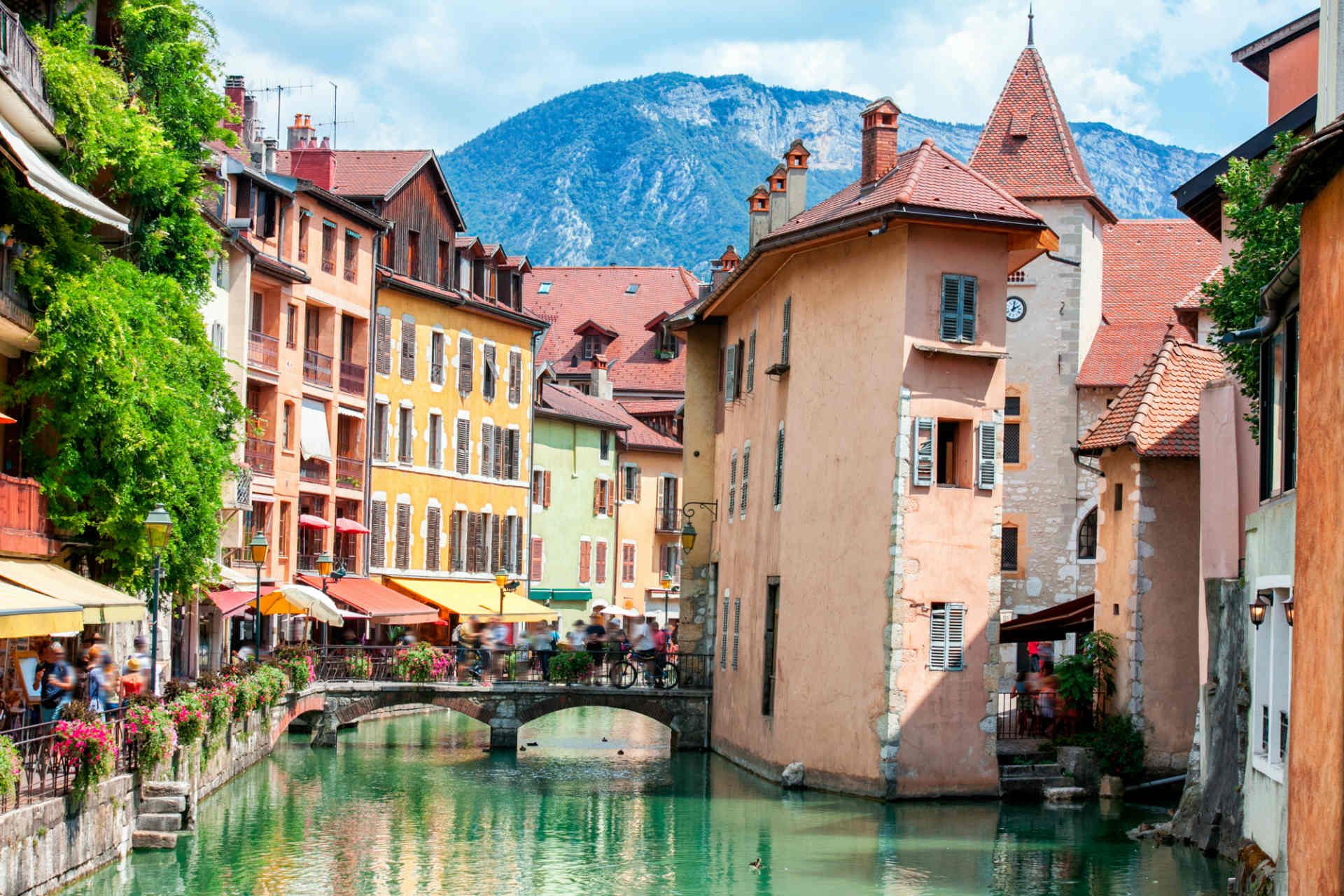
France itinerary 7 days: Annecy © Shutterstock
Day 5: Travel to Provence & the French Riviera
Start your morning with a walk or bike ride around Lake Annecy before making your way to Provence. To get to Aix-en-Provence, you’ll take a TGV train that takes about 3 hours and 30 minutes, with a transfer in Lyon.
Upon arrival in Aix-en-Provence, often called simply "Aix," immerse yourself in the charm of this elegant city. Begin your exploration at Cours Mirabeau, a wide thoroughfare lined with plane trees and grand mansions. Stop at the famous Deux Garçons brasserie, once frequented by Paul Cézanne and Émile Zola.
Next, dive into the old town's maze-like streets. Keep your eyes peeled for the city's famed fountains – there are over 40 dotted about. The best of which is the Fontaine de la Rotonde on Cours Mirabeau.
Visit the Atelier Cézanne, the studio where the famous post-impressionist painter created some of his masterpieces.
In the evening, settle in for a laid-back dinner at a terrace café. Try some Provençal specialties like bouillabaisse or ratatouille, and don’t forget to pair it with a glass of local Côtes de Provence rosé wine.

Lavender in Plateau de Valensole, Provence, France © Shutterstock
Day 6: Visit the best lavender fields in the Provence
Provence is renowned for its stunning lavender fields , and on day six you'll explore some of the best. The Valensole Plateau, about an hour's drive from Aix-en-Provence, offers some of the most picturesque lavender landscapes in the region. If you don't want to rent a car, consider joining a guided tour from Aix.
Head out early to catch the morning light over the fields. Lavender usually blooms from mid-June to mid-July, so this is the prime time to visit, though it is beautiful all year round. As you drive through the countryside, you'll see vast expanses of purple stretching out, along with charming old stone farmhouses and the occasional sunflower field.
Make sure to stop by the quaint village of Valensole, where you can buy lavender products directly from local vendors. Don’t miss trying lavender-infused honey or ice cream while you’re there.
After exploring the lavender fields, head back to Aix for dinner.

Week long France itinerary: Tulip field in Provence © Shutterstock
Day 7: Make a day trip to Fréjus
For your final day, you’ll take a trip to the historic town of Fréjus on the French Riviera.You can reach Fréjus by train from Aix-en-Provence in about 2 hours. The journey offers lovely coastal views as you approach the Côte d'Azur.
réjus, founded by Julius Caesar in 49 BC, is rich in Roman history. Here you’ll find the Roman amphitheater, which once held up to 10,000 spectators. Next, visit Archaeological Museum to see artifacts from the town's Roman past.
The afternoon is spent wantering through the medieval old town, stopping at the 5th-century Baptistery and the 11th-century Cathedral. If you want a break from history, head to Fréjus-Plage or Saint-Aygulf for a swim in the Mediterranean
Before heading back to Aix, enjoy a farewell dinner at one of Fréjus' seaside restaurants. Try fresh seafood and Provençal specialties as you watch the sunset over the Mediterranean, wrapping up your week-long French adventure.
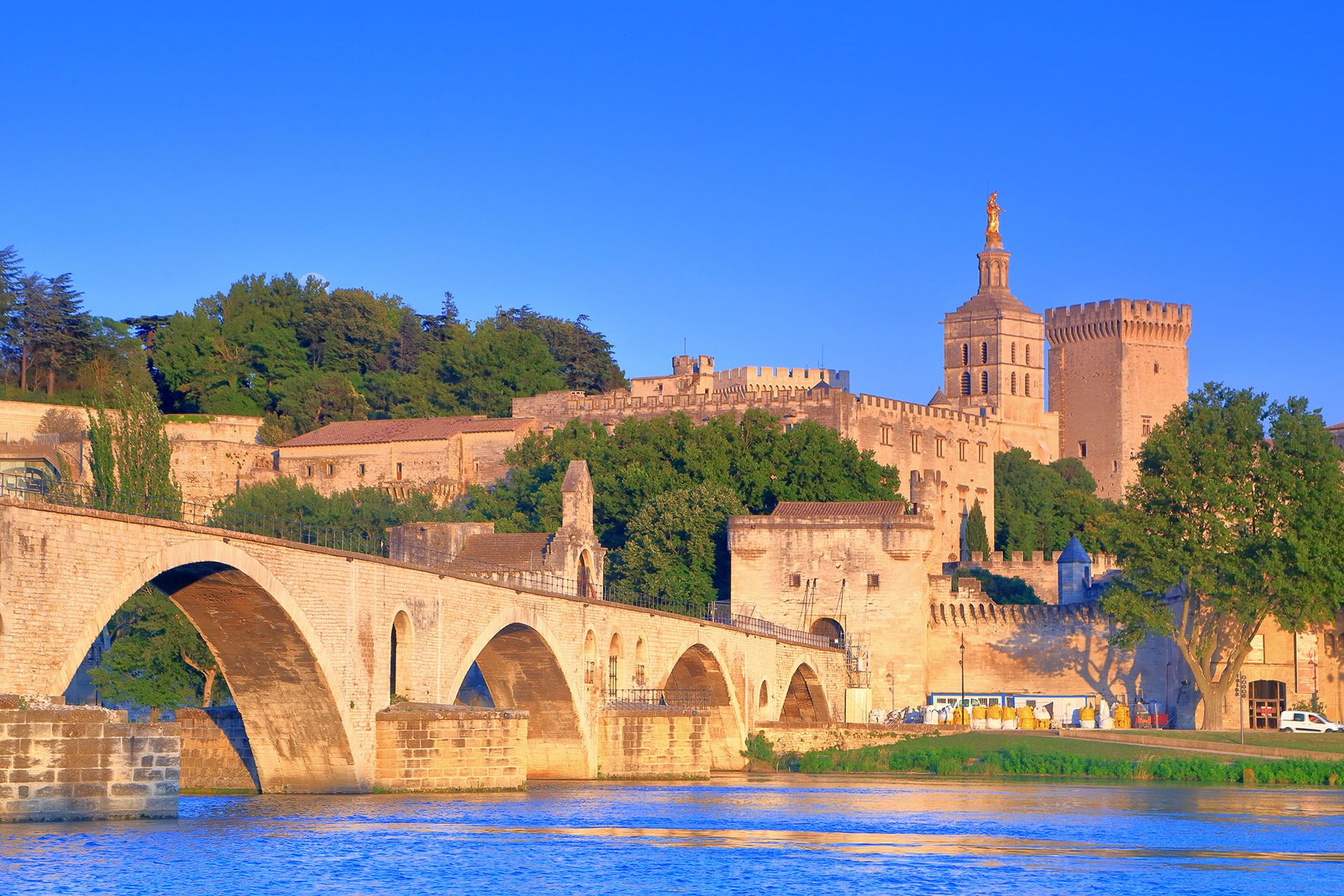
Cathedral and Papal Palace (Palais des Papes) in Avignon, Provence, France © Shutterstock
How many days do you need in France?
France is a country best savored slowly, but even if you’re pressed for time, you can still soak up its highlights. With 10-14 days, you can explore iconic spots like Paris, the South of France, and perhaps even venture to the Loire Valley or Normandy, all without feeling overly rushed.
A week allows you to experience the highlights of Paris and perhaps one or two other regions, as outlined in the itinerary above. This gives you time to see major attractions, and get a feel for the country.
For a hassle-free journey through France, leave the logistics to us. Our tailor-made trips , designed by local travel experts, are fully customizable to suit your travel style.
Looking for more ideas for a 7-day vacation in France? You might like our 7-day itinerary in Southern France .
When is the best time to visit France?
Generally, late spring ( April to mid- June ) and early fall ( September to October ) are the best times to visit. During these months, you’ll enjoy mild weather, fewer crowds compared to the summer peak, and a variety of cultural events and festivals. You'll also avoid the busiest tourist season and elevated prices, while experiencing France at its finest—either blooming in spring or adorned in vibrant autumn colors.
Summer (mid-June to August ) is the high tourist season. If you're seeking beach holidays or lively outdoor festivals, summer is perfect, but be prepared for larger crowds and steeper prices. On the upside, it's the prime time to witness Provence’s Lavender fields in full bloom, from late June to mid-July.

Beach of Cap Blanc Nez in northern France © Shutterstock
How to get around in France?
If your trip spans several regions, a mix of train travel and car rental is your best approach. Use trains for long-distance travel between cities, and rent a car to explore the countryside, such as the Dordogne or Provence, at your own pace. Be sure to book high-speed trains ahead of time to secure the best rates.
- Train: France boasts an extensive and efficient rail network, operated by SNCF. High-speed TGV trains offer quick connections between major cities, while regional TER trains and budget-friendly Ouigo services provide more economical options.
- Car: Renting a car allows for flexibility, especially when exploring rural areas and small villages. The highways are in excellent condition, though tolls are common on major routes. Be aware of city driving restrictions and parking challenges, especially in Paris.
- Buses: Long-distance buses like Flixbus and Blablabus offer another budget-friendly option for travel between cities, though they tend to be slower than trains.
- Ridesharing: BlaBlaCar and similar apps are also popular for intercity travel and can be an affordable alternative to other modes of transportation.
Dre Roelandt is originally from the United States but lives and works in Berlin, Germany. Dre is a freelance writer and artist with a passion for travelling. They are an in-house Senior Content Editor at Rough Guides.
- Inspiration
- See & Do
Planning your own trip? Prepare for your trip
Use Rough Guides' trusted partners for great rates
Ready to discover tailor-made travel?
Get support from our local experts for stress-free planning & worry-free travels.
France Travel Information
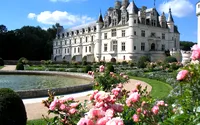
Bonjour and welcome, fellow adventurers! Let’s embark on a whirlwind tour of France, a country teeming with history, cultural splendor, and architectural marvels that leave us sighing, "oh là là!"
France is steeped in a rich, vibrant history that seeps from every cobblestone. From early Celtic and Roman occupations, through fanatical monarchs and the colorful melee of the French Revolution, to the more recent world wars, France seems to have seen it all. The result is an undeniable aura of gravitas and bygone glory scattering crumbs of history for us to follow.
The culture in France could best be described as a crumbly Croissant: delectably layered, subtly complex, and when paired with a steaming café au lait (that’s coffee to you and me) it's simply irresistible. French literature, cinema, fashion, and, oh heavens, the cuisine would each require tomes on their own. Suffice to say, France has been the breeding ground for some of the world's greatest artistic, gastronomic, and intellectual trendsetters. And yes, the rumors are true - they make a mean baguette.
Architecturally, France is no less than a chameleon, showcasing a spectrum of styles ranging from the Romanesque glories of Mont-Saint-Michel, to the florid flamboyance of Versailles, and the ultra-modern flair of the Centre Pompidou. But the piece de resistance is quite literally the Gothic Notre-Dame de Paris, a testament to the country’s love for grandeur.
Geographically, France dances between rugged mountain peaks, sun-kissed beaches, rolling vineyards, and sleepy pastoral landscapes. From the icy Aiguille du Midi in the Alps, to the romantic lavender fields of Provence, or the windswept, craggy cliffs of Normandy, there's a slice of terrain to suit every intrepid wanderer. The climate sways between temperate northern regions and Mediterranean warmth in the south.
One whiff of a freshly baked pain au chocolat, one glance at the fluttering tricolor flag, or the joyous clamor of France's Bastille Day will quickly underline why this country leaves an indelible imprint on its visitors. But beyond these, what truly sets France apart is its embodiment of "la joie de vivre," a zest for life that permeates every facet of French living.
So, my dear explorers, wrap yourself in the allure of France. Delve into its remarkable history, embrace its rich culture, marvel at its architectural wonders, navigate its varied landscapes, and get enchanted by it. Along the way, don’t forget to pull up a quaint café chair, order a frothy cappuccino, and watch life unfold - à la française!
See more on that topic
🇵🇹 portugal, 🇦🇪 united arab emirates, 🇱🇹 lithuania, 🇲🇰 north macedonia, 🇵🇭 philippines.
Nomadic Notes
Travel blog and weekly travel newsletter
Paris Travel Notes
October 11, 2022 By James Clark
Travel Notes > France > Paris Travel Notes

Nomadic Notes Blog Posts
A day in Paris is better than no day in Paris – My report on a day in Paris.
Aussie-style cafes in Paris – Australian coffee shops have become a thing in Paris, so of course I had to pay a visit.
Eiffel Tower Tickets
Book Eiffel Tower tickets and enjoy skip-the-line access, guided tours, summit access, and combo tours.
Accommodation
Paris hotels – Search for discount hotels in Paris with lowest rates guaranteed.
Apartment Review: Paris apartment rental by Only-apartments
Books About Paris
A Year in the Merde by Stephen Clarke.
Paul West, a young Englishman, arrives in Paris to start a new job – and finds out what the French are really like. Based on Stephen Clarke’s own experiences and with names changed to “avoid embarrassment, possible legal action, and to prevent the author’s legs being broken by someone in a Yves Saint Laurent suit.”
Paris Letters by Janice MacLeod.
Exhausted and on the verge of burnout, Janice saves up for an extended trip to Europe. A few days into her stop in Paris, she meets Christophe, a cute butcher who doesn’t speak English. Via sign language and franglais, they embark on a whirlwind romance. She soon realizes that she can never return to the world of twelve-hour workdays, but her dwindling savings force her to find a way to fund her dreams again.
The Most Beautiful Walk in the World: A Pedestrian in Paris by John Baxter.
Baxter highlights the most beautiful walks through the City of Light, including the favorite walking routes of the many of the acclaimed artists and writers who have called Paris their home. Baxter’s chronicle reveals how walking is the best way to experience romance, history, and pleasures off the beaten path.
Guide Books
Lonely Planet Paris (City Guide)
Travel Guides
Paris Tourist Office – The official website of the Paris Convention and Visitors Bureau.
BonjourParis.com – BonjourParis.com website and free weekly eNewsletter for travel, hotels, food and wine, reviews and more for Paris and France.
Colleen’s Paris – Paris travel and personal tips for Parisians at heart.
I Prefer Paris – An ex-New Yorker’s insider’s guide to Paris.
My Paris Trips – Ex-Parisian utilizes frequent return trips to guide Paris visitors from a traveler’s point of view, but with local experience.
Paris Escapes – travel tips including unique sights, restaurants, and shops that the guidebooks miss.
Paris Insiders Guide – A guide to Paris travel guides. This site reads all the guide books and tells you what not to buy.
Paris Voice – Webzine for English-speaking Parisians.
Paris Must See – Restaurants, shops, museums and hotels.
A Paris Guide – Matt Barrett’s guide to Paris.
The Hip Paris Blog – Insider tips and insights on dining, shopping, culture, renting, and living in Paris.
Paris Attitude – Travel guide featuring culture, accommodation, and things to do.
Paris For Kids – By David Robert Hogg from My Little Nomads .
Paris Blogs
The Paris Blog – Life in Paris from an expat perspective.
Paris Breakfasts – Blog by Carol Gillott who paints Paris by watercolour.
God I Love Paris – From Amy Thomas, author of Paris, My Sweet: A Year in the City of Light (and Dark Chocolate). .
Articles About Paris
Admiring the trees of Paris “From the dramatic weeping willows along the Seine to the London plane trees that line the Champs-Élysées, trees play a supporting role in the city’s inimitable elegance and grandeur.”
A three-day expedition to walk across Paris entirely underground – Journalist Will Hunt, who made the crossing with a group of urban explorers, recounts being menaced by rainwater and rats — and meeting fellow subterranean wanderers along the way.
Paris Syndrome: A first-class problem for a first-class vacation – “At least 20 people this summer – most of them Japanese – have suffered from the disorder after realizing Paris isn’t what they expected.”
3 days in Paris: All the tricks you need to avoid madness – A guide to get the most out of a short visit, by ntripping.com.
DIY: The best places to visit in Paris – A handy list of the biggest highlights in Paris for first timers, by abrokenbackpack.com.
Getting the best out of Paris – By travelettes.net.
The 7 wonders of the 7th arrondissement of Paris – By aluxurytravelblog.com.
Shortcut City Guide to Paris – By savoredjourneys.com.
14 do’s and don’ts in Paris – By contentedtraveller.com.
Which Paris tourist attractions should you visit? – By losethemap.com.
Envelope yourself in Paris culture – By worldwideadventurers.com.
A cheat sheet for Paris first-timers – By theglobetrottingteacher.com.
The Arc de Triomphe up close in Paris – By nelmitravel.com.
How to spend 3 days in Paris: Itinerary and travel tips – By thetradingtravelers.com.
Paris by night – a walking tour with a local guide – By contentedtraveller.com.
Four days in Paris and giving modern art another try at the Pompidou Center in Paris – By skabrat.com.
Paris By Mouth – A guide to food and wine in Paris. Includes reviews of restaurants, bistros, wine bars, bakeries and shops selling cheese, wine, pastry, chocolate.
David Lebovitz – An American food writer living in Paris.
Find and book Paris tours and activities on Viator.com

Paris Photo Gallery – Photo gallery of my visits to Paris.
About James Clark
James Clark is the founder of Nomadic Notes. He has been a digital nomad since 2003, and Nomadic Notes features trip reports, train travel articles , and where to stay guides . He writes about transport and urban development at Future Southeast Asia . Subscribe to the weekly travel newsletter .

About Nomadic Notes
Search nomadic notes, where to stay in…, travel newsletter.

10 Day France Itinerary: See the Best of France
France is a country that offers visitors incredible diversity. It is loved by so many and is one of the most visited countries in the world. But the majority of those people only visit Paris. This 10 day France itinerary aims to get you outside of Paris and exploring other equally incredible parts of the country.
My France 10 day itinerary covers just some of the highlights that France has to offer. It brings together the what to see in France in 10 days so you can get a taste for this beautiful country and make the most of your precious vacation time.
If you follow this trip to a tee you’ll be driving close to 2,000 km so you’ll want a vehicle that is comfortable for both driver and passengers, plus on that has plenty of space for your luggage.
For all my car hire bookings I use and recommend Hertz . I’ve found they offer the most comparable prices, let you search and compare multiple vehicle types and they have a great customer service team who can help if you come into any unexpected troubles.
10 Day France Itinerary
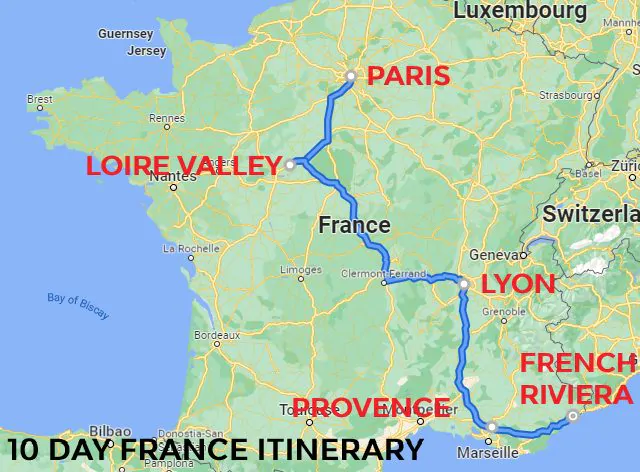
Days 1 to 3 – Paris
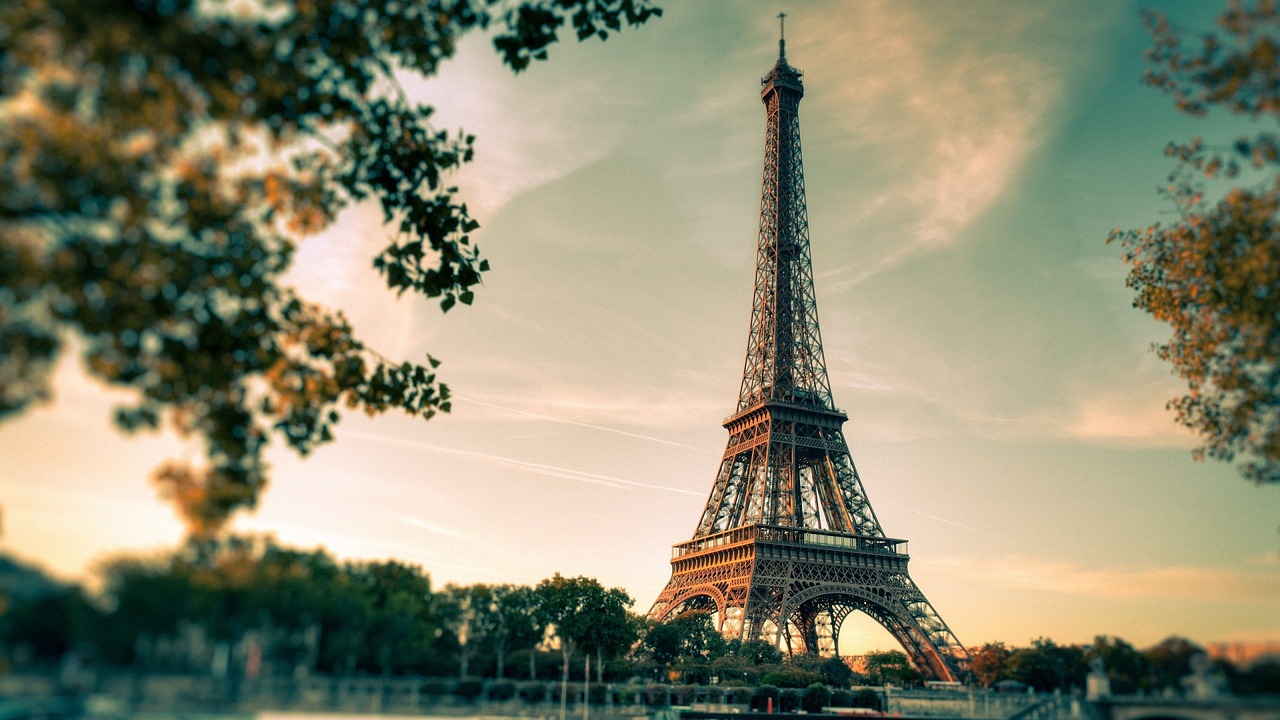
Day 1 – Begin your 10 days in France by arriving in Paris. This itinerary assumes that you arrive in the morning giving you three quarters of a day to start seeing the sights.
The City of Lights, Paris, is one of the most visited cities in the world and rightly so. It is dripping with amazing architecture, world class art and culture and mouth-watering food. Paris is a city for everyone and its highlights can easily be explored in just a few days.
What to See & Do in Paris
Eiffel Tower – The icon of Paris is the perfect place to start your visit. Admire the architecture of what was once the world’s tallest tower before being whisked to the top in an elevator to enjoy the most spectacular uninterrupted views of the city. Skip the queues and pre-booked your visit to the top of the Eiffel Tower here .
Arc Du Triomphe – Take a walk up the famous Champ Elysees to enjoy the approaching view of this imposing arch. Built to honour those who fought and died for France, check out the inner and outer surfaces of the Arc for the names of French war victories and generals inscribed in the stone. You can climb the steps to the top for nice views over Paris and down the avenues that run off the centre of the Arc. Avoid long queues with this pre-booked ticket to the top.
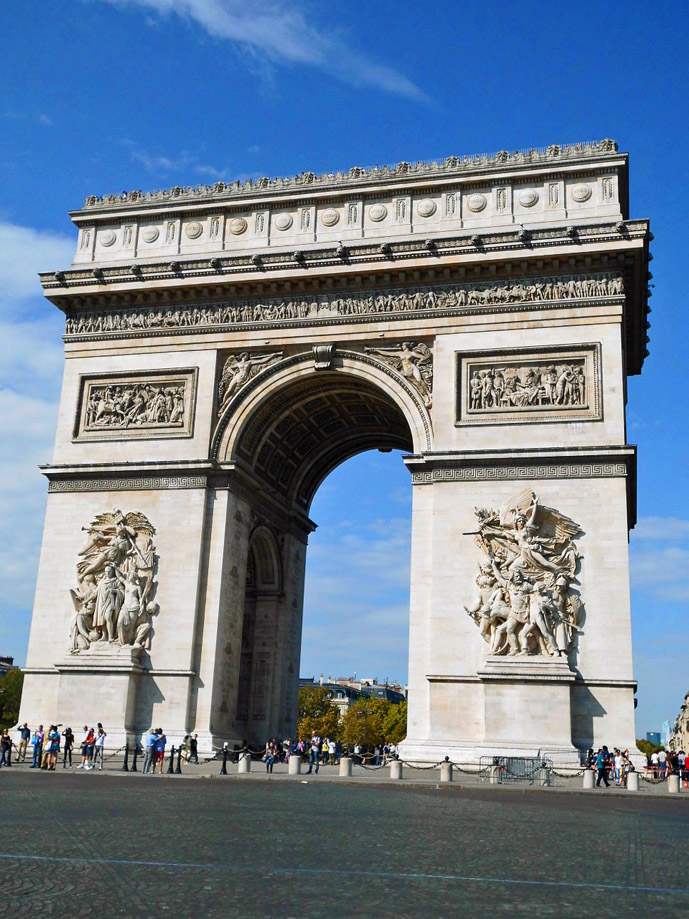
Notre Dame Cathedral – One of the finest examples of French Gothic architecture in the world, Notre Dame is famous for its incredible stained glass windows and for the gargoyles that guard the cathedral from above. Inside it is simply breathtaking and the view from the top allows you to get a closer look at those gargoyles, the cathedral’s roof and spires and over the city.
The Louvre – Home of the famous Mona Lisa, the world’s largest and most visited museum is spread across three wings with eight different departments and around 35,000 works of art and artifacts on display. One visit is most certainly not enough to take it all in so a little forward planning about what you want to see is a must. You might also want to nab yourself a timed entry ticket here to avoid the really long queues.
Montmartre & Sacre Coeur – For many hundreds of years the area of Montmartre has attracted artists from around the world. Today the area has a very bohemian vibe with tons of character and notorious nightlife. The most notable structure in the area is the lovely Sacre Coeur Basilica which holds services daily for locals and visitors. Make sure you enjoy the view from the area in front of the Basilica looking out over Paris. With so much interesting history in this area, a short tour with a local guide is a must!

Cruise the Seine – Some of Paris’s best architecture and landmarks line the Seine River making a sightseeing cruise a must do (especially this evening illuminations cruise where you will see Paris sparkle!). My top tip is to hop aboard the Bateaux Mouches for a one hour cruise at night on an open top boat that will take you under all of the city’s famous bridges and past its famous sites.
Palace of Versailles – This grand chateau was once home to Louis XVI and Marie Antoinette and is simply spectacular inside and out. Grand rooms filled with priceless works of art, furniture and antiquities on the inside and sprawling perfectly manicured gardens on the outside make this a worthy half to full day trip from the centre of Paris. As with most popular Paris attractions, having a skip the line entry ticket is a must.
Enjoy the Gardens – Paris has some really stunning gardens that are a haven from the busy streets of the city. Stroll the length of the Jardin des Tuileries from the Louvre to the Place de la Concorde or enjoy the spectacular flower displays of the Jardin du Luxembourg, just to name two of the city’s best green spaces.

Where to Stay in Paris
Here are three accommodation options to suit all budgets that I recommend you check out. All are centrally located, highly rated and come with excellent facilities. You can also check out my whole post dedicated to places to stay in Paris here .
Budget – Hotel Marignan
Mid-Range – Hotel Le Relais des Halles
Luxury – Four Seasons Hotel George V Paris
Read More About Paris
30 Things to Do in Paris
The Best Tours in Paris for Sightseeing
The Best Day Trips from Paris
Days 4 to 5 – Loire Valley

Drive: The next stop on your 10 day trip to France is the Loire Valley. From Paris to Tours it is approximately 2.5 hours drive. Leave Paris early to make the most of the day in The Loire Valley.
Famous for its abundance of chateau, The Loire Valley has to be one of the most beautiful regions of France. Explore the chateau, wander the sprawling gardens and orchids, taste the local produce and wine and just simply soak up the beauty of the landscape.
What to See & Do in the Loire Valley
Chateau Chambord – The biggest and most famous of the chateau in The Loire Valley, Chateau Chambord was built by King Francis I as a hunting lodge. Of course it has been upgraded and expanded considerably since then. It is one of the best examples of renaissance architecture in the world. A small number of the 440 odd rooms in the chateau are open to the public to explore. See this incredible building without the queues by booking here in advance.
Ainy-le-Vieil Chateau & Gardens – One of the many chateau in the region, what sets Ainy-le-Vieil apart from the rest is the incredible gardens which are split into a series of rooms each with a different theme. The chateau itself has been in the same family since 1467 and you can explore the interiors to check out some of the personal mementos left behind by past family members.
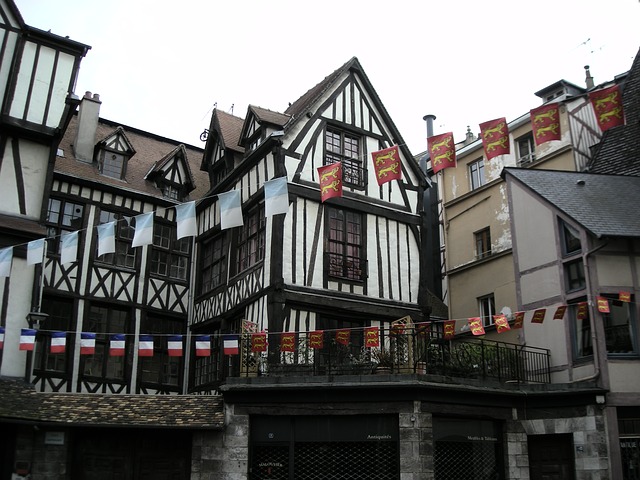
Cycle along the Loire River – The Loire Valley is relatively flat making it the perfect place to hire a bike or take a bike tour ( like this one !). There are bike hire places in most villages along the river and the path is well sign posted. Whether its just a short ride or a full day, you’ll see plenty of beautiful chateau and have the opportunity to stop by plenty of quaint little villages on your ride.
Bourges Cathedral – One of the most remarkable Gothic cathedrals in France, the Bourges is located in the town of the same name and dates back to the 12th century. Modelled on Notre-Dame in Paris, the cathedrals biggest draw card is its spectacular stained glass windows intricately depicting biblical stories.
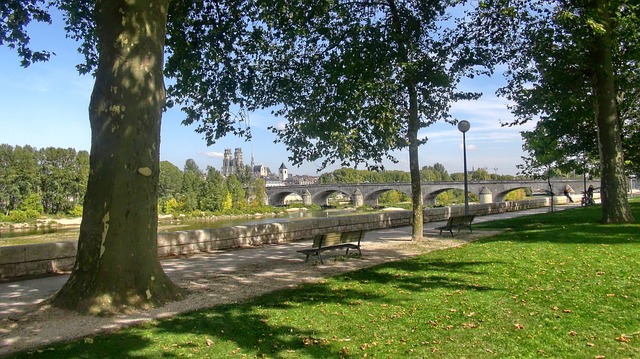
Explore the Vineyards – The Loire Valley has some of the best wine-making soil in France and some of France’s most well-known wine is produced in the region. You can explore the vineyards on your own in the car, hire a bike or take a tour like this one . Maps are available from local tourist offices making it easy to navigate between the vineyards.
Where to Stay in the Loire Valley
Here are three accommodation options to suit all budgets that I recommend you check out. All are centrally located in the town of Tours, highly rated and come with excellent facilities.
Budget – Hotel Italia
Mid-Range – Best Western Plus l’Artist Hotel
Luxury – Chateau Belmont Tours
Days 6 to 7 – Lyon
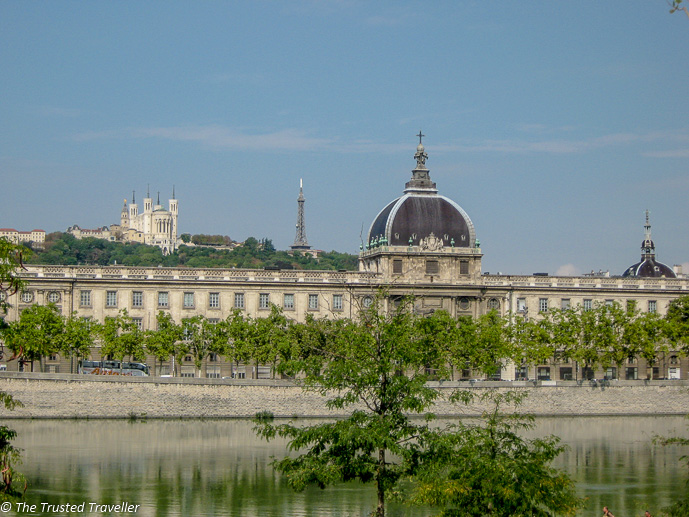
Drive: Your Frnace 10 day itinerary continues in Lyon which is approximately 4.5 hours drive from Tours. Leave Tours early to make the most of the day and allow time for plenty of scenic stops along the way.
If the main reasons you’re visiting France are for the culture and the food then you can’t miss visiting Lyon on your travel travel itinerary. France’s third largest city is home to interesting museums, cultural events year round and food offerings for those with an adventurous palate.
What to See & Do in Lyon
Explore the Vieux – Lyon’s Vieux (old town) is a great place to start your visit. Take a wander around the cobblestone streets through narrow passageways past delicatessens, artisan stores and sidewalk cafes. Keep your eye out for an old traboule which are passageways used in medieval times by the silk industry, some of which have been recently renovated. A guided tour, like this one , will help you find all those hidden spots.
Dine in a bouchon – These small restaurants serve the most traditional of Lyonnaise cuisine and are best suited to those looking to try something a little different. Dishes on the menu might include ingredients such as tripe, bone marrow or pork offal.

Basilique Notre-Dame de Fourviere – Perched high above the old town, this impressive white church dominates Lyon’s skyline and offers great views over Lyon from the promenade out the front. You can walk up the steep steps to get there or take the funicular for a few euros to save your legs. Nicknamed “the upside down elephant” because of its outside shape, inside its interior is quite pretty with lots of ornate features.
Roman Amphitheatre – Right next to Notre Dame is one of the best preserved Roman amphitheatres outside of Rome. The theatre holds up to 10,000 people and is used by the city to host many festivals and events throughout the year. When there’s nothing going on, visitors are free to wander around the theatre and picture themselves enjoying a concert in roman times.

Museum of Fine Arts – This museum has one of the broadest collections of fine art pieces of any museum in the world with their collection ranging from ancient Egyptian antiquities to modern art pieces from the last few decades. The Museum of Fine Arts also holds pieces that are among the finest in all of Europe. For art lovers, this place is heaven and not to be missed.
Hire a bike – Lyon is laid out on relatively flat ground and running right through the city are two rivers. This makes Lyon a great place to hire a bike and explore. There are Velo bike stations all over the city where you can pick up a bike any time of day for a few hours or a full day and explore along the rivers or around the city. It’s a great way to cover a lot of ground in less time.
Take a River Cruise – A great way to see most cities in Europe is on a river cruise and Lyon is no different. This one hour Saone River cruise will give you a new perspective of the most famous landmarks of Lyon and its interesting and unique architecture.
Where to Stay in Lyon
Here are three accommodation options to suit all budgets that I recommend you check out. All are centrally located, highly rated and come with excellent facilities.
Budget – Hotel Saint Vincent
Mid-Range – Hotel ParkSaone
Luxury – Villa Maia
Days 8 – Aix-en-Provence
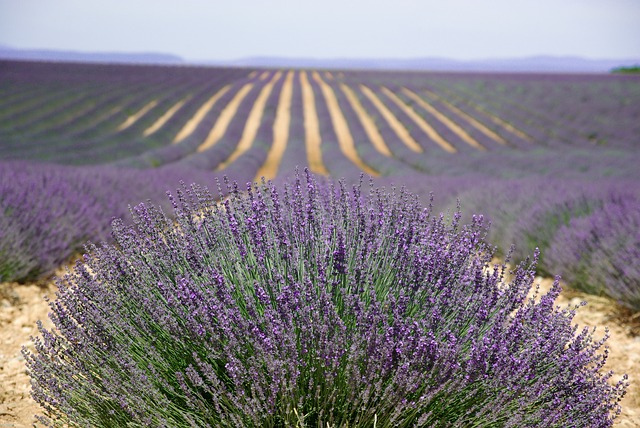
Drive: The next stop on your France vacation itinerary is Aix-en-Provence, located approximately 3.5 hours drive south of Lyon. Leave Lyon early to allow time for plenty of stops along the way.
Suggested Stop
Allow plenty of time to stop at two French gems. First make stop at the Pont du Gard for a stroll out to this ancient roman aqueduct. Then head into Avignon to check out the Palais des Papes, walk over the Pont Saint-Benezet, wander the cobblestone streets browsing the boutiques and relax in one of the sidewalk cafes.

Food to the people of Provence is everything, so foodies will love exploring this region on this France Itinerary. From the markets to the cafes and rolling fields of produce, Provence is a region for the senses. Its naturally beautiful landscapes and pretty little towns have been attracting artists for hundreds of years who come for the light and create masterpieces that can now be found in some of the best galleries all over the world.
What to See & Do in Provence
Aix-en-Provence – Basing yourself in Aix-en-Provence will give you plenty of time to explore this picture perfect town. Dine in one of the many fantastic restaurants that use only the best local produce. Wander the cobblestone lanes to see exactly why artists like Cezanne were so inspired by this town. And browse through the chic boutiques scattered through the town.
Arles Amphitheater – During the summer months this ancient roman amphitheater comes alive with plays and concerts. For the rest of the year it is open to visitors. Take a walk around and picture yourself back in the roman days watching sporting events, wild-animal hunts, executions of prisoners, and gladiatorial contests.
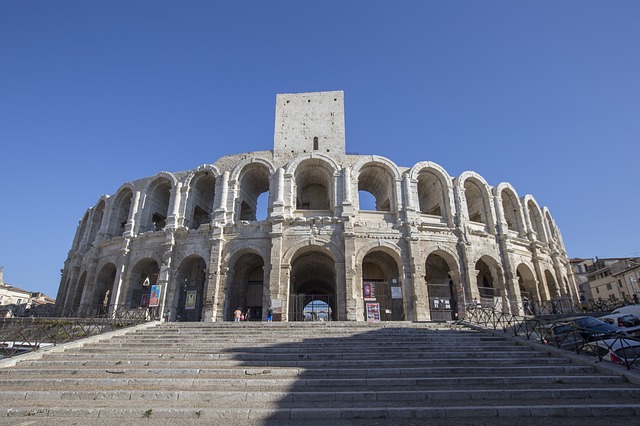
Marseille’s Vieux Port – The Old Port of Marseille is the beating heart of the city and the Provence region. It is the place where locals and visitors go to relax, eat, drink, shop and just generally enjoy life. Wander through the shops and markets, have a drink or a bite to eat in one of the restaurants, bars and cafes or just stroll along the harbour people watching.
Saint-Remy-de-Provence – This quaint, traditional Provençal village is rather sleepy these days but back in Roman times it was a thriving Roman settlement, the ruins of which can still be seen today. However, this isn’t the town’s only claim to fame. It was also where Van Gogh was housed while being treated for his many psychiatric problems. It’s a lovely town to explore on foot and enjoy a break at one of the many cafes.
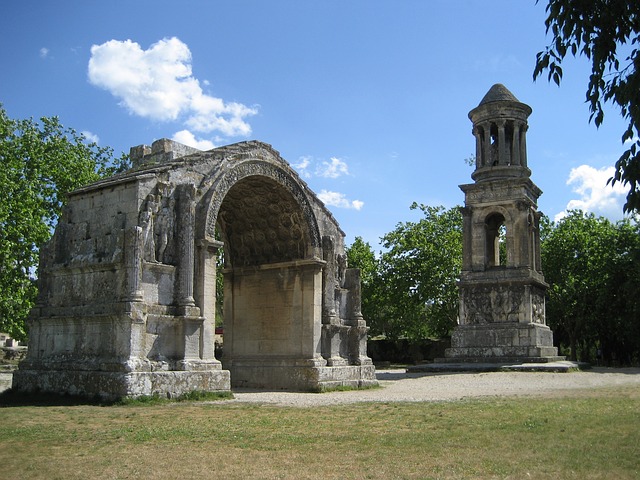
Moustiers Sainte-Marie – Hiding up the Gorges du Verdon is the town of Moustiers Sainte-Marie. The drive to this beautiful medieval town is on a long and winding road up the gorge with some spectacular scenery. The village itself is charming and well worth the effort to get there as it seems like time has stood still of hundreds of years.
Digne les Bains Lavender Fields – Take a drive through the rolling hills of Digne les Bains to see field after field of lavender mass planted. Stop by one of the road-side stalls or country shops to buy all sorts of lavender products from soaps and fragrance sprays to honey and other food products. The lavender blooms from June to August and the locals celebrate with a festival over a few days in August at harvest time.
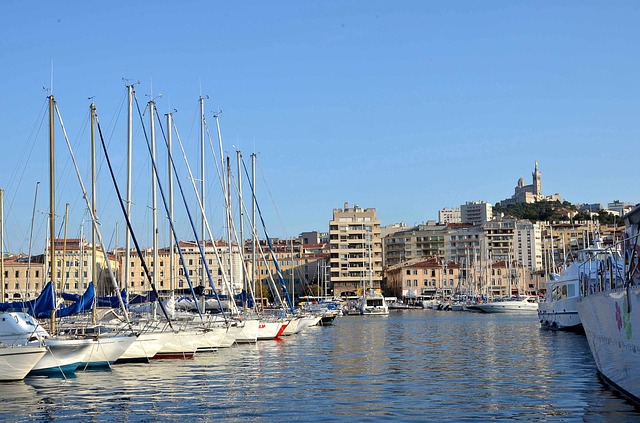
Where to Stay in Provence
Budget – Hotel Le Mozart
Mid-Range – Hotel du Globe
Luxury – Villa Gallici Hotel & Spa
Days 9 to 10 – French Riviera
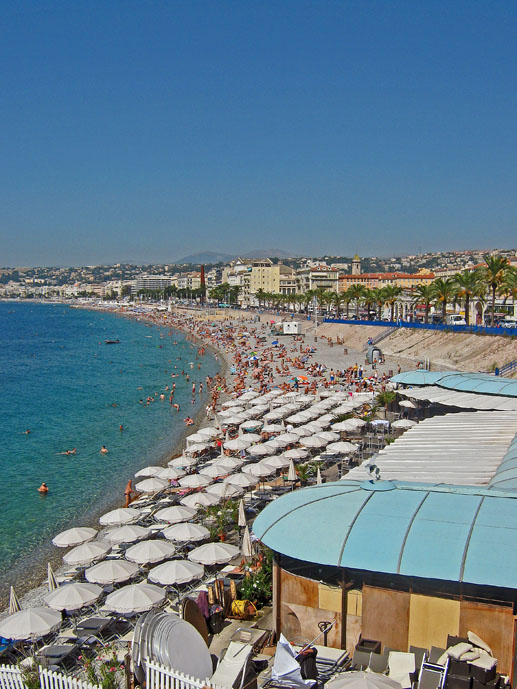
Drive: The last stop on this 10 day France Itinerary is the French Riviera, with Nice, the main city along this stretch of coast approximately 5 hours drive from Aux-en-Provence if you take the slower coast road the whole way or 3 hours if you take the inland faster route. Leave Nimes early to make the most of the day and allow time for plenty of scenic stops along the way.
Optional Detour
To get to Nice you can take the quick route shown in the map above. Or if you have a bit more time you can detour the French Riviera coast stopping in Saint Topez, Cannes and Antibes .
The heart of the French Riviera, Nice is everything you have heard it is and so much more. Nice is a mixture of grit and opulence drenched with lots of sunshine. While the beaches and corso are the places to be and be seen, it’s the winding cobblestone lanes of the old town you’ll want to get lost in and find your own little piece of Nice.
What to See & Do in the French Riviera
Soak up with sun on the beach – While the beaches of Nice aren’t like the white sandy beaches most will be used to, the warm Mediterranean seas are more than enough to get most people over having to walk on pebbles. Whether you hire a sun lounger and umbrella for a day or brave it on the pebbles, a day by the water in Nice is an absolutely must!
Stroll the Promenade des Anglais – This palm fringed promenade runs for five miles along the beach at Nice and is the place to be and be seen when the sun is shining. You could easily spend a few hours strolling up and down the promenade watching the people enjoy life and this beautiful part of the world.
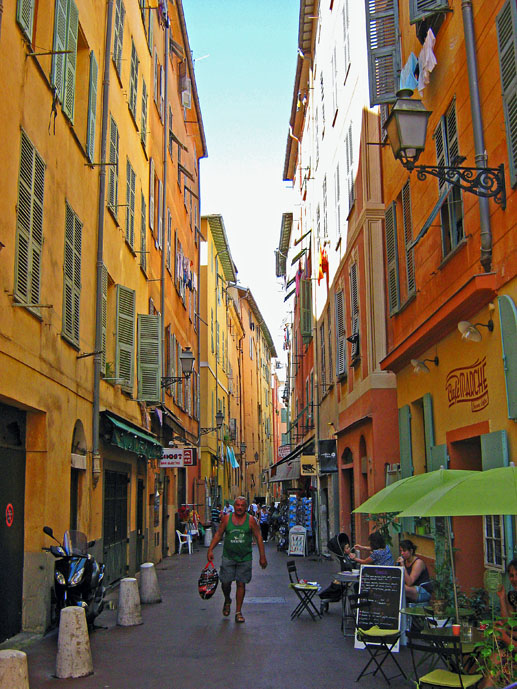
Nice Old Town – Once you’ve had your time in the sun, head to the old town to wander around the colourful winding cobblestone lanes. It’s a labyrinth you could easily get lost in passing but tiny local cafes, green grocers and artisan stores. There’s usually a market going on too which gives you a great glimpse into the lives of the locals.
Monaco – The nicest time of day to enjoy Monaco is just before the sun sets. You can take a bus or train from Nice (20-30 minutes) in the late afternoon to explore Le Palais des Princes de Monaco then watch the sun set over the billions of dollar’s worth of yachts in the marina. Finishing off the night in the Monte Carlo Casino or just outside in one of the sidewalk cafes checking out some of the world’s most expensive cars and the wealthy people who own them. This evening tour is also a great way to experience the very best of Monaco on short trip from Nice.

Museum of Modern and Contemporary Art – Get your final art fix of the trip at this museum famous for its Pop Art collection. The Museum of Modern and Contemporary Art has a large collection of permanent exhibitions which are free to visit as well as ever-changing temporary exhibitions for a small fee. The building itself is also a work of art and worth a look, as is the view from the roof.
Where to Stay in Nice
Budget – Hotel des Dames
Mid-Range – Ibis Styles Nice Centre Gare
Luxury – Hotel Negresco
Read More About Nice
Things to Do in Nice
Got More Time?
If you have more than 10 days in France you have a few options to extend you’re time there.
Check out my Two Week France Itinerary which covers a little more time in some of the places mentioned above, plus a few nights in the historic Normandy region.
You can choose to add some additional days at the places mentioned above. This will give you more quality time to spend in each place and will allow you to see more and spend a bit more time relaxing.
Alternatively you can add another destination or two to your journey. Just a few of these options include the Bordeaux wine region, the French Alps (I love the mountain town of Annecy), Dijon for the cuisine or Strasbourg on the German border to see how the cultures mix together to form a truly unique city.
Your can read more about some of these additional places to visit in France here .
Over to you!
What is your favourite part of this France vacation itinerary or where are you most keen to visit?
Let me know using the comments section below or join me on social media to start a conversation.
Thanks for reading and I hope you enjoyed this post.
Join my email list and get a FREE copy of my TRAVEL PLANNING TEMPLATE
My Travel Planning Template will make your travel planning simple & stress-free!
4 thoughts on “10 Day France Itinerary: See the Best of France”
Hello and thank you for all the info. We want to start in Marsielle and hoping to see Provence, St. Tropez, Nice and Paris. From Paris we are going to Amsterdam. Do you think we can do that in 7 days prior to going to Amsterdam? Thank you
HI Cindy, Yes it is doable however it will be tight. I tend to choose quality time in each destination rather than lots of destinations. You could easily spend the whole 7 days in Paris and not get bored.
Hello, thank you for this information. I lived and traveled in France many years ago and still speak it pretty well. I am planning to take my 2 adult nieces on a 10 day trip- this itinerary looks great but a bit tight; I am in my late 50’s so I’m wondering if I can keep up. (:-)) Do you have an approximate suggestion of cost for this trip- just housing and food (not including air fare)? I’m also thinking of substituting Mont St. Michel for something else (maybe Lyon), but that may not be practical. Everything else you mentioned sounds perfect. We’re planning to go in late March 2023. Thank you!
We’re renting a car any suggestion we want to travel out of PARIS starting at CDG AND BACK TO CDG ( 10 days road trip_
Any nice route we want to see small town, architecture ,like the dordogne
Leave a Comment Cancel reply
This site uses Akismet to reduce spam. Learn how your comment data is processed .

Visiting France - planning a trip
Visiting france - 1 the essentials.
- Explore France ►
- France in brief
- Plan your visit
- France on a budget
- Tourist map of France
- Staying in France
- Eating in France
- Climate & weather
- Camping in France
- Accueil en français
- Search About-France
- Paris for free
- Other main cities
- Choose a region
- Best of France
- The south of France
- The Dordogne
- The French seaside
- The Loire valley
- The Massif central
- Top attractions
- Heritage cities
- Best small towns
- Best of rural France
- Wild France
- Skiing & wintersports
- Find a hotel
- Driving in France
- Motorway services
- Routes from Calais
- Rules of the road
- Driving checklist
- Ferries to France
- Flying to France
- Rail travel in France
- Bus and coach travel
- Life in France
- French institutions
- The French language
- Vital words & phrases
- French grammar
- A-Z of French life
- Study in France
France's busy summer schedule - 2024... dates to remember.
First things first: preparing your journey.

- Passport or ID card? Citizens of the European Union can travel to France on a national identity card, if they have one. EU citizens who do not have an ID card, and citizens of other countries, must be in possession of a valid passport. Visitors from non-EU countries may need a visa, depending on the length of stay and their country of origin. Visas are not required for citizens holding residence status in any other "Schengen" country, whatever their nationality. For the purposes of a short trip (less than 90 days), visas are not required for visitors from the United States, Argentina, Australia, Brazil, Chile, Japan, Mexico, United Kingdom, New Zealand , Venezuela and several other countries. For a full list of visa requirements for short or longer stays, visit the official French visa info website in English.
- Travelling to France by car : (Click here for ► Driving in France ). Travellers coming from the UK: it is usually sufficient to just turn up at a ferry port or the channel Tunnel, and buy a ticket for the next crossing. However, this is not advisable in the peak holiday season, or at busy weekends. Besides, it is often possible to shop around and get a cheaper price, if you book in advance. Click here to compare ferry price offers and book online. Driving to France from most other neighbouring countries (Belgium, Luxembourg, Germany, Italy, Spain) is no problem at all, as customs and border controls have been abolished within the Schengen area, and traffic flows seamlessly across these borders. Customs and passport controls may slow down traffic across borders from Switzerland, though this is not usually the case. The border crossing from Andorra can be very slow, if customs decide to check cars for contraband, notably duty-free cigarettes, as they often do. Driving license. Drivers from the UK, EU and EEA countries can use their national license in France for up to a year. Drivers with licenses from the USA can also do so, but are recommended to have an IDP too. Drivers from other countries must have a valid national license PLUS either an official translation into French or an IDP ( International Drivers Permit) ), which can be obtained ► here .
- Reaching France by air : From the UK and Europe . There are more than twenty regional airports in France, with flights from the UK and other countries. For further information, check out the flights to France page.
- Flights from North America . The airline with most direct flights from North America to France is Air France which has direct flights from a dozen or more cities in North America . For transatlantic passengers, or passengers from other continents, the general point of arrival in France will be Paris Charles de Gaulle (CDG) airport. Nice airport is served by Delta from JFK. Geneva airport, which has flights from the US and Asia, lies on the French-Swiss border, and has a direct exit to France. Brussels, Zurich and Luxembourg airports are also within easy striking distance of France. Check out options and best value flights on Expedia. For visitors from Canada or NE United States , Air Transat has direct and relatively good value flights from Montreal to Basel-Mulhouse, Bordeaux, Lyon , Marseille , Nantes and Toulouse , as well as Paris . For flights to France from Australia, Asia-Pacific area and all other long-haul flights to France, consult your travel agency or online ticketing websites for options and prices.
- Currency : France uses the Euro . The easiest way to get holiday money (and often the cheapest) is to withdraw euros from an ATM (hole in the wall, cash dispenser) on arrival in France, or even from a Euro dispenser in the departure area at a major UK airport. Most French ATMs accept foreign cards (Visa, Mastercard, Maestro, etc). (See page on Banks and paying for things in France ). Note: If your bank / credit card account is not in Euros, you will pay a commission on each transaction – withdrawal or payment. Commissions are proportionally greater the smaller the transaction, so it is not advisable to use your card regularly for a lot of small transactions. You will pay less (maybe quite a bit less) by withdrawing enough cash for a day or two from an ATM, then paying in cash.
- Health : visitors are strongly advised to make sure that they have health insurance cover before travelling to France or any other foreign country. For France, UK visitors should obtain the Global Health Insurance Card (GHIC), which has replaced the old EHIC form but provides just the same cover; further details on the About-France.com health cover in France page.
Other points

- Accommodation and hotels : There are hundreds of internet sites offering direct booking for hotels, but beware of sites supposedly offering the "cheapest deals". Check out a few sites before you book. Visit the hotels page for information on French hotels, else our information on Paris hotels, or the interactive holiday rentals maps on Gitelink.com for information on renting a cottage, or bed and breakfast.
- Paying in advance; gites, small hotels, campsites. If you need to make a deposit for accommodation, some premises will accept credit cards or Paypal; but for those that do not, it is usually possible to make an "IBAN" transfer (also known as an electronic funds transfer), which is quite simple and not expensive. Ask your bank for details.
- Driving in France : Technically, if you are driving a car registered in another European Union country, you do not need a green card (international insurance card) to travel to Europe, just your national car insurance certificate. However, it may well be that your standard national insurance only provides you with third-party cover once abroad; check with your insurer. Extra comprehensive cover can be obtained from your normal insurer, or from an outside source such as the AA. Click here for more information about driving and motorways in France or on driving south from Calais
- Mobile phones / cellphones : if you want to continue using your national mobile phone while abroad, you may need to enable international use by contacting your operator. Since Brexit, many UK phone operators have reintroduced roaming charges; consult your operator for details. See more details for using US cellphones in France .
- When to visit France : The best times of year are, of course, between April and October: July and August tend to be very busy in most tourist areas. The Spring and the Early Autumn are a great time to visit France, if you are not bound by the requirements of school term dates or work. Climate change: with summer heatwaves increasingly common in the south of France, there is an upsurge in spring and autumn tourism among those who are not bound by school holiday calendars. The tourist industry is fast adapting to cater for them, with sites and restaurants extending their summer season until the end of September, or even later.
- For day trips to France from the UK compare the options available.
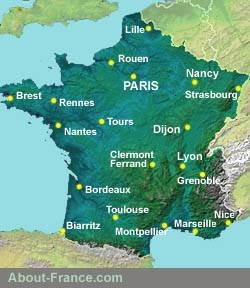
- Holiday week planner
- Public holidays in France
- French school holiday calendars 2024
- Climate and weather
- Preparing your trip (this page)
- Choosing a type of holiday
- A weekend in France - 10 ideas
- The most interesting cities
- France on a limited budget
- Cheap travel offers
- Travel to France and getting round France
- Is France safe ?
- Living in France
- Finding a job & working in France
- French bread
- French cheese
- French wine
- Moving to France
- Shopping in France
- Opening and closing
- Doctors and emergencies
- Primary and secondary schools
- Universities in France
- French perfume

► More accommodation

11 Articles about traveling in France you need to read Along The Waterways

As the world’s most visited country, France provides inspiration for volumes of travel articles every year. The best travel and tourism publications and websites turn to the country time and time again so choosing the best articles about traveling in France is an exciting and ever blossoming challenge! Arguably, it’s one of our more enviable tasks.
Our final list of 11 travel articles about France combines the best of France with great journalism, in words and in pictures. It includes an eclectic range of travel journalism that ranges from pure destination to educational via topical pieces and listicles.
After reading all the pieces, it leaves us with the urge to experience, visit or taste something new or different here. We hope it has a similarly inspirational impact for you too…
The new tourist

Tourism has taken a bit of backlash recently with several of the world’s most popular destinations – think Amsterdam, Barcelona, Venice… – shouting out against too many visitors. If you’ve suffered the phenomena of mass tourism (crowds, queues, inflated prices, noise, pollution and selfie sticks) this year, Hidden Gems in France: Escape Europe’s Tourist Crowds is for you. Written by Emilie and Guillaume at France Just For You, the article offers great French substitutes for some of Europe’s busiest cities.
The highlights : Emile and Guillaume’s alternatives work well and offer similar experiences to the ‘real’ thing. For example, instead of braving the hordes at the Coliseum in Rome, you could savour the Roman Amphitheatre of Orange in Provence, almost to yourself out of season.
Why we like it : You really do discover some hidden gems in France and you get a lot of insider information too. We’ll definitely be swapping Cinque Terre for Cassis next time.
> Done Amsterdam? Fuel canalside character cravings in Colmar
Behind the scenes in Paris

A list of ultimate France travel writing examples just has to include one on Paris. There are obviously plenty of competitors for the best article about the City of Light, but we’ve gone with French Moments and their Secrets about the Moulin Rouge. This is just one of many treasure trove posts on the site about Paris and Savoie – and gives you real insight into the iconic Parisian monument.
The highlights : The many pictures included in the post. Author Pierre has included his own photos, plus several from the archives as well as paintings of the windmill and vintage posters advertising the show.
Why we like it : French Moments offers a wealth of information and plenty of detail. We also love the fun facts at the end – did you know that 240,000 bottles of champagne are served every year at the Moulin Rouge? Salut!
> Done Paris? Sip champagne in Epernay
That culinary place explained

Lyon regularly makes its way into travel articles, especially those with a foodie theme. In How to eat your way round France’s tastiest city for the Telegraph, Anthony Peregrine shows he really does know more than a thing or two about France. His article is also right on trend too as it takes a look at the recently opened Cité Internationale de la Gastronomie (CIG) in Lyon.
As Peregrine points out, the CIG is in the right place since Lyon has been a place recognised for cuisine for 2,000 years. He guides the reader around the new centre and explains its raison d’être.
The highlights : The description of what to expect at the CIG (not necessarily apparent to anyone not directly involved in the project) and the ‘lightbulb’ realisation that gastronomy forms part and parcel of France’s self-image.
Why we like it : While Peregrine obviously enjoys his tour of CIG, he manages to laugh at both the French and British approach to eating and cooking. And let’s be honest, another round-up of great places to eat in Lyon is always welcome.
> Peckish ? Take a long lunch in Lyon
Off the beaten trail in Dijon

This UNESCO heritage city has plenty of well-known things to do and see – think stunning monuments and that delicious moutarde – but what if you want to explore something different? That’s where Sophie Nadeau’s 10 Hidden Gems and Secret Spots in Dijon come in. Her article takes you right off the beaten trail and opens your eyes to a very different city than the one you’ll find in conventional guidebooks.
The highlights : All ten of Nadeau’s suggestions are worth seeking out and she includes a great selection of secret spots. If you fancy discovering a lucky owl, a sinister roofless house and the very place where Gustave Eiffel was born, this is the list for you.
Why we like it : Nadeau really does take you to unusual places, not an easy feat in a place as well-known as Dijon. We’ll be looking at the city with fresh eyes next time we’re there!
> Dijon is also on the Route des Grands Crus, an essential trip for Burgundy wine fans
Tips from those who know

Insider information, either from those who live in a destination or travellers to it, has taken the tourist industry by storm in recent years so it’s only fitting that this list of France travel writing examples includes one such publication. And we’ve gone with one that sits very close to our hearts – readers’ travel tips for canal and river boat trips in Europe from the Guardian. France (naturellemente!) dominates for the newspaper’s tipsters with four out of the seven focused on French waterways.
The highlights : The different stance on very popular places – for example, on the Canal du Midi it was the écluse (lock) shops that stood out for the traveller.
Why we like it : The sense of peace and serenity that comes out in all the tips. As we well know, “waking to dawn sunlight on the water” is one of the real pleasures found in exploring France via its rivers and canals.
> Choose where you’ll cruise
The best of Normandy

The northwesterly region of France ranked as one of the world’s top value destinations in lonely planet’s Best in Travel 2024 listings. According to the travel guide guru, Normandy made the cut because its “the hedgerow-cut meadows, cheese-fueled farmsteads and fragrant apple orchards promise an affordable antidote to the crowds of 2024 Olympics visitors in Paris”. And this article shows you how to enjoy Normandy while keeping your wallet in check.
The highlights : The guide takes you to the main spots in Normandy, but also suggests a detour from each, allowing you to get a full helping of all this lovely region has to offer. From monuments and museums to cliff-top walks and cider farms, this is Normandy in a nutshell.
Why we like it : Author Cyrena Lee gives you a fresh look at the region and we love the helpful insider tips that smatter the article.
> See the best of Normandy on a Seine River cruise
Unsung heroes

Almost every city in every country competes with its capital and in France, Paris takes some beating. But Two French Cities, Neither of Them Paris. Which One to Love? by Sebastian Modak for the New York Times, makes a very compelling case for Lyon and Marseille. Both cities feature in the American publication’s 52 Places to Go in 2019 and Modak discovers that both turn up trumps big time.
The highlights : The article covers both cities in depth, going on and off the beaten tourist trail. Modak masterfully conveys the elegance of Lyon and the grittiness of Marseille and somehow makes you fall in love with both.
Why we like it : Modak’s writing is truly evocative and transports you to both cities. We also love his turn of phrase – he describes Lyon as “a thoroughbred crowd-favorite racehorse” and Marseille as “the scrappy long shot who sneaks into the track and steals the race”.
> Take it all in on a Saone-Rhone river cruise
All on a plate in Camargue

Unsurprisingly, food takes centre stage in many travel resources about France. One of our favourites goes off the gastronomic radar, usually laser-beamed on Paris, Lyon and Burgundy, to the Camargue. In A Taste of the Camargue for National Geographic Traveller Food, Ben Olsen celebrates this region’s huge variety of food and drink, visiting local markets, producers and restaurants. The result is a very vivid picture of what you’d find on the table in this part of Provence.
The highlights : The tour of fresh local food, farmed from the land and sea. Olsen brings the Arles market stalls alive, offering the reader a feast for all the senses. He also tours producers and tells their story well too.
Why we like it : This is a voyage of culinary discovery – we didn’t quite appreciate how well the Camargue produces red rice and zesty salty wine and that despite forming part of Provence, “it has a character that makes it stand apart”. We’re also slightly relieved to discover that the saucisson d’Arles is now made with pork and beef rather than donkey.
> Fall for the Camargue
Louis XV’s fortresses

160 of them to be exact, dotted all over France and the brainchild of Sébastian Le Prestre de Vauban. You may not have heard of this military engineer and his architectural talents, but His Aesthetic Fortresses by Tom Mullen makes compelling reading. The author brings Vauban’s works to life and Mullen also describes some of the best fortresses.
The highlights : The historical background to Vauban and his work, plus a snapshot of each of the fortresses featured in the article.
Why we like it : While we do love a chateau, these fortresses make a nice change from Renaissance grandeur. (And Mullen has brought us up to speed on wartime during Louis XV’s reign!)
> Like Vauban’s fortresses, our holidays on French waterways cover the whole country
Best road trip

The sheer size of France and excellent network of roads lend themselves very well to a road trip. This one takes the reader north-south from Brittany to Biarritz. Photographer Tommy Clarke packs his surfboard, jumps into a Mercedes eco-Sprinter at St Malo and records his journey on camera all the way down the west coast to the Grande Plage.
The highlights : This article is essentially a photo-essay so comes packed with pictures of what Clarke’s camera sees on the trip. From waves to beach brollies, he captures the essence of “perhaps the most civilised surf coast on earth”.
Why we like it : The simple beauty of the photos – the image of Europe’s highest sand dune stays with you. We also love Clarke’s off the grid” road trip with its old-school approach of navigating with a proper map, taking Polaroids and not using your phone much. Real travel!
> Start in Brittany and take it from there
Snowy finale

Last on our list of ultimate travel articles about France whisks us to the many ski resorts in France with a round-up of the best. Written by Jenny Cahill-Jones for Rough Guides, the article includes some snow for everyone whether you’re a newbie to the slopes or a veteran skier.
The highlights : The variety of choices for any type of skier from those looking for just snow to those more in search of the après-ski. Cahill-Jones recommends well-known resorts along with lesser known spots in the French mountains with plenty of practical information too.
Why we like it : The something-for-everyone – even die-hard off-piste skiers get their recommendation. Check out the latest updates before you plan your next French skiing trip!
Inspired by France travel writing?
We’re hoping that this round-up of sublime France travel writing has inspired you to visit the country in the New Year.
Arguably, of the best ways to discover the huge variety described in the above 11 articles is from the waterways on board on a hotel barge, riverboat hotel or self-drive boat.
Take a look at our boating holiday options and book your next holiday in France.
Enjoyed reading this ? We’d love you to PIN it and share it with others.

Related Posts
With more than 100 cathedrals dominating its cityscapes, France certainly has plenty to offer fans…
Most of us have an image or stereotype of nationalities other than our own, the…
It’s harvest time, for grapes that is. The grape harvest (vendange) in France can start…
♥ Topics Index
- Alsace – Strasbourg
- Aquitaine – Bordeaux
- Brittany-Anjou-Loire
- Burgundy – Nivernais
- Canal du Midi
- Paris – Champagne
- Provence – Camargue
- Chateaux and Heritage
- Events and Activities
- Food and Cuisine
- French Culture
- Wine, Champagne + Liqueurs
- Hire Boating
- Hotel Barging
- River Cruising
- Canal Navigation Advice
- Canals, Rivers + Ports
- Cruising Tales
- Cycling French Canals
- Sailing Through France
♥ Recent Topics
- A Journey Through French Impressionism: A Guide to the Best Art Museums on a River Cruise
- All the top landmarks and monuments along the Rhône River
- 11 Loire Valley châteaux you simply cannot miss
- 20 iconic French dishes
- 10 must visit Burgundy châteaux
- What to eat in Burgundy
- Tips for choosing the best itinerary for your French river cruise
- Our pick of the best France bloggers
- From Paris to Normandy. A French River Cruise Itinerary through French History
- The Olympics in France – a brief history
french-waterways.com is the most comprehensive and authoritative online source of inspiration and information about enjoying the rivers and canals of France – on the water or by the water.
french-waterways.com (founded 2003) is independent and impartial. It is not connected with VNF Voies Navigables de France, the national waterways management authority.
Cruise Lines International

Inland Waterways Intl – Barge Assocn
The information published here results from more than ten years personal experience cruising the waterways from north to south and east to west.
Terms, Conditions, ©Copyright and Privacy Statement
We use cookies to optimise our website and services.
France Tours & Holidays

There’s a reason France is the most visited country in the world. Actually, there are several.
The Eiffel Tower and the Louvre. The Pyrenees and Chamonix. Escargot and ratatouille. Champagne and croissants and berets and baguettes. Napoleon and Simone de Beauvoir and the Hunchback of Notre Dame. Jazz bars and vineyards and lavender fields as far as the eye can see. ‘Un petit peu’ of this, ‘un petit peu’ of that. A balmy evening on the French Riviera, a morning frost on the fields of the Somme. French flags flying after the FIFA World Cup. Guillotines falling after the French Revolution. Chanel and Chandon and Versailles and Vuitton. Forget the museums; this country is a work of art.
Our France trips
Let's create an exclusive trip for your group.
France tour reviews
Filter by rating
Cycle Provence
Hike the Tour du Mont Blanc
Articles of France
France or Italy? Which European country should you travel to?
Where to celebrate Pride in Europe 2023
5 of the best walks in Europe – The Great Walks of Europe
How to pull off the perfect Paris picnic
How to do the French Riviera on a budget
8 unusual adventures you didn’t know you could have in Paris
Why cycling the French Alps is what bucket lists are made for
Our ultimate guide to island hopping in Italy
France at a glance
Capital city.
Paris (population approximately 2.1 million)
Approximately 67 million
(GMT+01:00) Brussels, Copenhagen, Madrid, Paris
CALLING CODE
Electricity.
Type C (European 2-pin) Type E (French 2-pin, female earth)
Learn more about France
Culture and customs.
What makes the French so, well, French? Is it the food? The wine? How about the art, the philosophy, the history, or the fierce passion often caricatured as arrogance? Whatever it is, it’s seduced Francophiles around the world for countless years and there’s no sign of it slowing down.
The French are lovers of life. They celebrate the ‘joie de vivre’, or joy of living, in every aspect of their day. Conversation should be meaningful; food should be rich and sumptuous; music should move you; art should change you.
Sure, there are the stereotypes of the French being rude, but you could be forgiven for your reluctance to speak English when you’re the most-visited country in the world. There are, after all, only so many times one can give directions to the Eiffel Tower. But sit down for dinner at a French person’s house and you’ll discover the opposite. France is a very liberal country and every topic is up for debate – dinner is just an entree for the conversation.
Much of France’s reputation rests on romanticised images of Paris. Sitting at a cafe on the Ile-St-Louis with a piping-hot croissant and cafe au lait, for example, or watching sunset from the steps of Sacre Coeur. But travel through France and you’ll find an incredibly diverse and multicultural country that changes so much between regions, from Marseille’s cultural melting pot to Biarritz’s surfers to the hardy mountain folk of the Pyrenees and Alps.
Every region and valley, every coastline and ridgeline and three-hour line for the Louvre, will offer up something different. But remember, there’s one thing that doesn’t change no matter where you go: the unwavering belief that there’s nothing better than being French.
History and government
After the conquest of the Gauls and the fall of Rome, the area we know as France was dominated by a tribe known as the Franks. They were headed up by a brutal man named Charlemagne, whose mission was to convert all of Europe to Christianity. After Charlemagne’s death his empire was split into three, with West Francia corresponding to the modern territory of France.
The Hundred Years’ War
West Francia, which was really a patchwork of territories run by the dukes, had institutional power more or less centralised in the 12th century. As time went on the tension between France and England grew until the outbreak of the Hundred Years’ War, which actually lasted 116 years. Though France’s population was decimated during this period, thanks to both war and plague, it was also a formative time for the country’s national identity.
One of the key figures to come out of this long period of fighting was Joan of Arc, who is still a national hero in France. She was born in 1412, just after the Battle of Agincourt, during which the French were dominated by the English. As a young girl she heard the voices and saw visions of multiple saints, all of whom told her to go fight for Charles, the rightful king of France. At the age of 16 she travelled to his court to convince him of her mission and somehow did exactly that. She turned the tide of the war and in doing so was captured by the English and sentenced to death as a witch. Her ashes were scattered in the River Seine, but her story was never forgotten.
The French Revolution
Bad harvests, taxation, abject poverty and an unrestrained aristocracy sowed the seeds of the French Revolution in the 18th century. The Renaissance began in Italy and spread across Europe, ushering in the Age of Enlightenment, which spread the ideas of individual liberty, tolerance and the separation of church and state. In France, King Louis XVI had inherited a country in dire trouble but was still living it up at the Palace of Versailles. The peasants revolted and stormed the Bastille Prison – hence the national celebration of Bastille Day – and King Louis, along with Marie Antoinette, his queen, were captured and executed by guillotine. A decade of chaos ensued.
It was Napoleon, a military general, that took control of France following the revolution and established the Napoleonic Code, which has become the foundation for the development of most modern democracies. He embarked on military campaigns throughout Europe and was eventually defeated and exiled by the combined forces of Russia and Prussia, a northern state that would rise to power as a united Germany during the 19th and 20th centuries.
The World Wars
The 20th century was a horrific time for France with Germany invading the country twice. France suffered huge casualties during both WWI and WW2, and by 1945 it was on its knees. Further conflicts followed in colonial territories across Africa and Asia, which led to an influx of migration to France. In Europe, governments were dealing with the fallout from WWII and making agreements to avoid another conflict, from which the European Union was born.
France is now a leading power both in Europe and globally after a huge post-war effort to rebuild the country. It has the third-largest economy in the EU and is one of the most modern countries in the world, continuing to value liberty, fraternity and equality. Recent years have seen issues arise with the Islamic extremism and the European refugee crisis, but the country continues to grow and remains a thriving destination for tourism.
Eating and drinking
The gastronomic pleasures of France are world-renowned, so travellers won’t be worried about going hungry. There’s something to suit every budget here, from Michelin-star restaurants to market stalls and everything in between, and it’s not just frog legs and snails that are on the menu.
There’s simply no better buy than a fresh, crusty baguette. Buy one for less than a euro from the nearest bakery and take it down to the nearest park or river. Apply butter liberally, fill with whatever you like and bite into France – c’est magnifique!
Pastries, cakes and tarts
French chefs set the global quality benchmark for pastries so there’s no feeling guilty when you sample the croissants, eclairs, crepes, macaroons and whatever else you can get your hands on. Find them at your local patisserie and don’t forget to say merci (or mercy, depending on how many you eat).
If you’re going to indulge in a little wine, there’s no better place than France. It is, after all, home to some of the most famous wine regions in the world: Bordeaux, Burgundy, the Loire, Provence, Champagne. Whether you’re at the cellar door or on the restaurant floor (please, drink responsibly), there’s tasty tipple with your name on it.
When in France, right? From soft cheeses like brie and camembert to a hard, sharp Beaufort, it’s all on offer in France’s bountiful cheese shops and markets.
Beef Bourguignon
This beefy stew originates in Burgundy and is an example of a peasant dish now considered high-end cuisine. It’s prepared with beef braised in red wine and broth, flavoured with garlic, onions and mushrooms, and it’s absolutely perfect on a winter’s evening.
Geography and environment
Bordered by Spain, Andorra , Luxembourg, Monaco, Switzerland, Italy, Germany and Belgium, France’s geography is as varied as its neighbours.
In the south, the Pyrenees form a natural border with a Spain . This mountain range rises over 3400 metres and stretches from the west coast to the east. It’s a hiker’s paradise in summer, with thousands of kilometres of hiking trails, and a haven for snow sports in the winter thanks to a huge number of ski resorts.
To the south-east, France borders the Mediterranean Sea all the way up to the Italian border. A large stretch of this area is what’s known as the French Riviera, which has long been a popular tourist destination thanks to its warm weather, calm water and golden beaches.
Continue north along the Italian border and you’ll reach the French Alps, France’s other predominant mountain range. The Alps are home to Mont Blanc – France’s highest point – and form another natural border, this time with both Italy and Switzerland.
France’s central region is mostly rolling hills and fields, perfect for farming and producing wine. There are two main rivers, the Loire and the Rhone, with the Rhone running south from Switzerland through to the Mediterranean and the Loire running north and west to the Atlantic.
The west coast is bordered by the Atlantic Ocean and sees a cooler climate than the east. The large Atlantic swells have brought surfers to the area for years with several international surfing competitions being held throughout the year.
Northern France, which is bordered by Belgium , Luxembourg and Germany, remains relatively flat with grasslands, fields, forests and, of course, the capital of Paris. These northern areas suffered most during the wars, both because of their proximity to Germany and the landscape itself. This is where trench warfare was first employed, only possible because of the huge swathes of flat land.
Chanel. Louis Vuitton. Dior. Lacroix. Hermes. You want luxury? You got it. Paris has long been considered the fashion capital of the world and if that’s your bag, well, you’ll need some room in your bag after a stroll down the famous Champs-Elysees. France isn’t all high fashion though. Yes, the French are notoriously fashionable, but there’s plenty of shopping to be done for those that aren’t quite ready to step out on the catwalk.
Remember, it's a good idea to check with your local customs officials to ensure that you are able to bring certain items back into your home country. Australia and New Zealand generally have strict quarantine laws.
And you thought Paris was just about fashion? It also happens to be the fragrance capital of the world. There’s no better place to pick up a sensational scent than in one of the city’s many perfumeries, some of which have been trading for more than a century. It’s the perfect gift – or a subtle suggestion – for your friends and family back home.
Flea Markets
Parisian flea markets are a top spot to pick up a vintage bargain. From jewellery and purses to paintings and old-school electronics, you’re bound to find something unique or, at the very least, enjoy trying. Make Porte de Vanves and Porte de Saint-Ouen in Paris your first stops.
Village Markets
Regional French markets just ooze with charm and can be found all over the country. Peruse fresh produce, home-made jams, pickled vegetables, rich cheeses and summer flowers, or just soak up the provincial atmosphere and try your hand at having a chat with one of the locals.
France has been at the forefront of winemaking forever and there are plenty of high quality wines to be found at very decent prices. Just remember that French wines are named for their geographic origin rather than the grape. Take a Burgundy, for example: if it’s red it’s pinot noir, if it’s white it’s chardonnay. Do some research and reap the rewards.
Festivals and events
There are festivals happening all over France throughout the year. Whether you’re in the city or a small town, you can expect a lot of food, some phenomenal wine and plenty of music.
Bastille Day
The French National Day is celebrated on July 14 and commemorates the storming of the Bastille Prison during the French Revolution. It’s celebrated all over the country, but Paris is the place to be, with the city hosting parades, fireworks and the famous Firemen’s Balls, where the main station in each Parisian district throws open its doors for a huge ball lasting until 4 am. It’s a tradition that’s been happening for over 100 years.
Avignon Festival
Performers and art lovers from around the world descend on Avignon for this three-week celebration of performance art. Dance, theatre, comedy and musical performances feature on the bill, with everything from open-air classical concerts and sweeping operatic epics to spoken word poetry.
Tour de France
This is the world’s most iconic cycling competition. It lasts three weeks and was first held in 1903. Things are a little more high-tech now—back then, the cyclists didn’t have support vehicles, and they carried baguettes, wine and cheese for sustenance. They also had some phenomenal moustaches.
Nice Jazz Fest
The Nice Jazz Festival dates back to 1948 and is one of the oldest jazz festivals in Europe . The first headliner was Louis Armstrong, and since then, a glut of phenomenal musicians have performed, including Herbie Hancock, Miles Davis, Ella Fitzgerald and Erykah Badu.
Roland Garros
Also known as the French Open, Roland Garros is one of tennis’s grand slams and the premier clay-court competition in the world. The biggest tennis stars in the world converge on the courts to slug it out, but Rafael Nadal will forever be the king.
Public holidays that may impact travel include:
Victory Day 1945
Ascension Day
Whit Monday
Assumption Day
All Saint's Day
Armistice Day
Please note that the dates of France's public holidays may vary.
Similar destinations
Thinking about a trip to France but still browsing other destinations? Check out tours to neighbouring locations:
- Switzerland
Or maybe you need help comparing countries? Check out our blog:
- France or Italy?
Further reading
For inspiring stories to prepare you for your France adventure, check out these books:
- The Three Musketeers – Alexandre Dumas
- Chocolat – Joanne Harris
- The Hunchback of Notre-Dame – Victor Hugo
- Dangerous Liaisons – Pierre Choderlos de Laclos
- Suite Francaise – Irene Nemirovsky
- A Year in Provence – Peter Mayle
- How to be Parisian Wherever You Are: Love, Style and Bad Habits – Caroline de Maigret, Anne Berest, Sophie Mas, Audrey Diwan
- The House in France: A Memoir – Gully Wells
- Marie Antoinette: The Journey – Antonia Fraser
- Les Miserables – Victor Hugo
- Me Talk Pretty One Day – David Sedaris
France travel FAQs
When is the best time to visit france.
The best time to visit France depends on where you are planning to travel to.
The best time to visit Paris, in terms of sunshine and weather, is early summer and early autumn as the late summer can get quite hot. That said, the winter months are a dark albeit beautiful time to visit, like many European cities. The same applies for most of inland France.
If you’re heading to the east coast and the Mediterranean Sea, the best months are July and August as the sea breeze tends to keep the coast a little cooler than inland. There will, however, be more tourists than in the early summer or spring and autumn.
The mountains are best for skiing in February and March as the days are longer than in December and January, while the late spring, summer and early autumn are perfect for hiking.
The Atlantic areas of Brittany and Normandy are best experienced from June through August as they can get quite wet and cold outside of summer.
Is it safe to visit France?
Yes, it is still safe to visit France, though parts of the country have been affected by various issues of late.
Over the past 5–10 years France has been targeted by extremist groups. These attacks have received widespread global coverage and while they are shocking and saddening, they are also very infrequent. France is at no more risk of extremist violence than any other Western country, but travellers should exercise caution nevertheless and keep up-to-date with local news sources.
Much has also been made of the Yellow Vests Movement, which has spread around the country. These protests began in 2018 after an increase in fuel taxes and have morphed into a movement demanding economic reform and the resignation of President Emmanuel Macron. Though the protests have turned violent on several occasions, particularly in Paris, they are also easily avoided. The protests occur on Saturdays and the streets are shut down by police – travellers should check local news sources and avoid any trouble areas on Saturdays.
Do I need a visa to travel to France?
France is a member of the Schengen Convention, which means that if you travel to an EU member country or countries, like France, for a total of less than 90 days, a visa is not required. Citizens of Australia, New Zealand, Canada, the US, the UK and other member countries of the EU and Schengen area are included under this arrangement.
Visas are the responsibility of the individual traveller. Entry requirements can change at any time, so it's important that you check for the latest information. Please visit the relevant consular website of the country or countries you’re visiting for detailed and up-to-date visa information specific to your country of origin. Check the Essential Trip Information section of your tour itinerary for more information.
Is tipping customary in France?
Most restaurants in France will include a service fee within the bill; however, tipping extra (while not absolutely necessary) is customary and will be appreciated by wait staff. Usually rounding up the bill or leaving spare change is sufficient. Feel free to tip more if the service has been exemplary or if you’re feeling generous.
What is the internet access like in France?
The internet access is great in France. All cities and major towns should have internet cafes and wi-fi hotspots, while most of the country aside from very remote areas will have phone reception should you wish to use your mobile/cell phone.
Can I use my mobile phone while in France?
Travellers can use their phones throughout France, though remote and isolated areas in the Pyrenees or Alps may have limited service.
You’re able to purchase a local SIM on arriving in France, which will generally be cheaper than using international roaming. If you do wish to use international roaming, ensure it’s activated before leaving your home country and ask your provider what charges apply. Data use can be particularly expensive while overseas.
What are the toilets like in France?
Flushable, Western-style toilets are the standard across France.
Can I drink the water in France?
Drinking water from taps is considered safe in France unless otherwise marked. For environmental reasons, try to avoid buying bottle water and fill a reusable water bottle or canteen with filtered water instead.
Are credit cards widely accepted in France?
Major credit cards are widely accepted across France. Some smaller cafes and shops may not accept credit cards, especially in more rural areas, so be sure to carry enough cash to cover small purchases.
What is ATM access like in France?
ATMs are common across France in both cities and towns so there shouldn't be a problem finding one.
What is the weather like in France?
France’s weather varies depending where you are.
Paris tends to be quite cool with temperatures averaging 15–25°C (59–77°F) even in the height of summer. The winter average is 2–7°C (36–45°F), though it’s worth keeping in mind that the city can experience more extreme heat in the summer or snow in the winter.
The French Riviera, including Nice, has a sunnier climate and averages 20–27°C (68–81°F) in the summer and 5–13°C (41–55°F) in winter. This area is quite sheltered compared to the rest of the south-east coast, which will much hotter and dryer in the summer.
The mountainous regions, like Chamonix in the Alps, will vary depending on altitude. Chamonix experiences an average temperature of 9–24°C (48–75°F) in the summertime and -7–3°C (19–37°F) in the winter. The summer also sees afternoon thunderstorms and more precipitation than other times of year.
The climate on the Atlantic coast tends to be quite cool and wet, with rain and wind all year round, particularly around the English Channel. Bordeaux, which is much further south, enjoys a warmer climate though it’s prone to both the cold Atlantic fronts as well as cold winds from the north-east. Its average temperature in summer is 16–27°C (61–81°F), while winter averages 3–10°C (37–50°F).
Is France safe for LGBTQIA+ travellers?
France is a safe destination for LGBTQIA+ travellers and has always been celebrated for its liberal attitudes towards sexuality. Paris was the first European capital to vote in an openly gay mayor in 2001 and France was the first country in the world, back in 1791, to decriminalise same-sex sexual acts between consenting adults. Same-sex marriage has been legal since 2013 and attitudes towards LGBTQIA+ identifying people are generally positive across the country.
Paris has had a thriving queer scene for years which revolves around Le Marais, a district just north of Notre-Dame, though the city is so open that it can be difficult to pin down its epicentre. Active queer scenes can be found in most major cities across the country including Bordeaux and Lyon.
For more detailed and up-to-date advice, we recommend visiting Equaldex or ILGA before you travel.
If you are travelling solo on an Intrepid group tour, you will share accommodation with a passenger of the same gender as per your passport information. If you don’t identify with the gender assigned on your passport, please let us know at time of booking and we’ll arrange the rooming configuration accordingly. A single supplement is available on some tours for travellers who do not wish to share a room.
Is France accessible for travellers with disabilities?
Intrepid is committed to making travel widely accessible, regardless of ability or disability. That’s why we do our best to help as many people see the world as possible, regardless of any physical or mental limitations they might have. We’re always happy to talk to travellers with disabilities and see if we can help guide them towards the most suitable itinerary for their needs and, where possible, make reasonable adjustments to our itineraries.
France is a relatively accessible destination for travellers with disabilities, particularly for those visiting Paris. All buses and trams in the Paris metro area are equipped for wheelchairs and most, though not all, metro stations have been equipped to make travelling with a disability as hassle-free as possible. The city’s official visitor website has a section dedicated to visiting Paris with a disability in both French and English.
Elsewhere, as in much of Europe, travellers may find that the older city buildings and infrastructure in smaller towns may present them with some difficulty, depending on their disability. If you do live with a visual, hearing or other impairment, let your booking agent or group leader know early on so they’re aware and suitable arrangements can be made.
As a general rule, knowing some common words in the local language, carrying a written itinerary with you and taking to the streets in a group, rather than solo, can help make your travel experience the best it can be.
What to wear in France
France is a very liberal country and travellers should not feel compelled to dress particularly conservatively unless visiting a religious site. After all, Paris is the fashion capital of the world – go hard or go home. That being said, Intrepid encourages all travellers to respect the locals in the places we visit. If they wouldn’t wear something, we don’t suggest that you do.
Remember that the weather in the mountains can change extremely quickly, even in summer, so your best bet is dress in layers. If you do plan on visiting the Alps or Pyrenees, be sure to take a raincoat, sturdy walking shoes and a wind breaker or warm jacket.
Do I need to purchase travel insurance before travelling?
Absolutely. All passengers travelling with Intrepid are required to purchase travel insurance before the start of their trip. Your travel insurance details will be recorded by your leader on the first day of the trip. Due to the varying nature, availability and cost of health care around the world, travel insurance is very much an essential and necessary part of every journey.
For more information on insurance, please go to: Travel Insurance
How do I stay safe and healthy while travelling?
Intrepid takes the health and safety of its travellers seriously and takes every measure to ensure that trips are safe, fun and enjoyable for everyone. We recommend that all travellers check with their government or national travel advisory organisation for the latest information before departure:
From Australia?
Go to: Smart Traveller
From Canada?
Go to: Canada Travel Information
From the UK?
Go to: UK Foreign Travel Advice
From New Zealand?
Go to: Safe Travel
From the US?
Go to: US Department of State
The World Health Organisation also provides useful health information.
Does my trip support The Intrepid Foundation?
Yes, all Intrepid trips support the Intrepid Foundation. Trips to this country directly support our global Intrepid Foundation partners Eden Reforestation Projects and World Bicycle Relief. Intrepid will double the impact by dollar-matching all post-trip donations made to The Intrepid Foundation.
Eden Reforestation Projects
Eden Reforestation Projects are helping to mitigate climate change by restoring forests worldwide; they also hire locally and create job opportunities within vulnerable communities. Donations from our trips support restoration across planting sites in 10 countries around the globe. Find out more or make a donation World Bicycle Relief
World Bicycle Relief provides people in low-income communities with bicycles to mobilise school kids, health workers, and farmers in far-out areas – giving them access to vital education, healthcare, and income. Donations help provide Buffalo Bicycles – specifically designed to withstand the rugged terrain and harsh environment of rural regions – to those who need them most. Find out more or make a donation
Travel Letter
Travel Letters Home from Abroad

Travel Notes, France

See “Travel Notes, Paris,” and “Travel Notes, Normandy,” below. Or jump to… Travel Notes, Burgundy Travel Notes, Lyon
Travel Notes – Paris
Getting from Charles de Gaulle Airport, (CDG), to “Centre Ville” As noted in the Paris “Arrival” post, if you have any interest at all in saving a euro or two, the Les Cars bus option is worth checking out. There’s always taxi option, of course. The difference in price is probably on the order of fifty euros. Just be aware of the more luxurious rides into town, lined up as if at a taxi stand, that will run quite a bit more. I’ve never tried the train option. I enjoy train travel in France, but with baggage, not so much.
Pick a Neighborhood and Make it Your Own Our favorite way to visit Paris is to pick a neighborhood, then make that neighborhood the focus of our visit. Each neighborhood has its own character, special restaurants, markets, and fun things to discover. There are well-known neighborhoods such as the Latin Quarter, the Marais, and the Opera District, but lesser-known Parisian neighborhoods, (at least to outsiders), also have a lot to offer.
Renting an Apartment in Paris We wanted to stay in an apartment this trip, so I researched numerous options on-line. I narrowed it down to two companies and contacted each. The one we went with, “Special Apartments,” seemed to be the most professional. They proved to be an excellent choice. http://www.specialapartments.com/47_st_sauveur.html
Montmartre We had been to Montmartre before, so on this trip we just went to get reacquainted and to have lunch in Place du Turtre, but there’s much more to Montmartre than that. One could easily make a day of it. But if you take the Metro to get there, be sure to have a map and a plan to get from the Metro to the top of the hill. In other words, be sure you can find the funicular.
Our go-to restaurant in Montmartre is Au Cadet de Gascon. It’s as touristy as it can be, but we’ve never had a bad meal there, and something about it keeps pulling us back. We like eating outside under the “tents.” Always fun.
Eating Out in Paris
If you enjoy eating in “local” Parisian restaurants, plan ahead. Do some research on-line, and make a list of places you’d like to try. At least this way you’re not starting from scratch when you arrive. Be prepared to make reservations to ensure getting in. If you’re french phone shy, wander by during the lunch hour and make a reservation for dinner in person.
Our favorite restaurant-related resources for this trip were: David Lebovitz’s wonderful website, http://www.davidlebovitz.com/ . Hungry for Paris: The Ultimate Guide to the City’s 102 Best Restaurants , by Alexander Lobrano.
Le Troumilou We had lunch at Le Trumelou after our boat ride on the Seine. It’s a casual place specializing in southern French cuisine. They have all the classic dishes there. Our lunch was great. We especially liked the down-homey feel of the place. Totally non-touristy. Not much english spoken.
Wine Tasting — O Chateau We had a thoroughly enjoyable — and educational — evening at a wine bar called O Chateau . It’s a wine bar, but much more. They have a number of options for wine and food-related experiences. We opted for a wine tasting session with an added cheese plate. We’d do it exactly the same way again.
For another opinion, take a look at Mom Mom’s Apron . This is a foodie blog more than a travel blog, so be forewarned if you have foodie tendencies. There’s a lot to see there!
Foodie Tour We went on a foodie tour provided by Paris by Mouth . We opted for their tour that takes place in the Marais neighborhood. Our guide was Deniz. It was a great tour. Just enough, but not too much food and information. Deniz did an excellent job. There are quite a few of these types of tours in Paris. We were glad we chose this one.
Spoiler Alert – The End of “The Hunchback of Notre Dame”
In the post about The Hunchback of Notre Dame , I didn’t want to spoil the ending for anyone who didn’t want to know, so I’m putting it here. So, continuing where we left off, we have a situation. Esmeralda is imprisoned in Notre Dame for her own protection. Quasimodo is taking care of her and protecting her.
But then the Parisian authorities decide that her sentence to be hanged must be carried out to its end. They muster troops to come and get her. Esmeralda’s rag-tag friends get wind of it, and decide to rescue her first. They show up as a mob with torches and battering rams. Then the troops show up. The battle is on!
Meanwhile, Gringoire, (of all people), with some assistance, manages to sneak Esmeralda out to safety. But it was too good to be true. She was soon discovered and put on the gallows again. This time she wasn’t saved.
The gallows were right in front of Notre Dame, so Quasimodo had to watch the whole thing from his perch high up in the bell tower. Oh boy, that was a pretty sad part of the story. After that day, Quasimodo was never seen nor heard from again. Phew. Kind of a tough ending, eh?
Travel Notes – Normandy

D-Day Beaches Our guide told us more way than I can remember about the events on and after D-Day, and she inspired me to find out more on my own. Three books about D-Day that I can recommend are the following: D-Day, The Battle for Normandy , by Antony Beevor D-Day , by Stephen Ambrose Voices from D-Day , by Jonathan Bastable
Lunch in Rouen When we were in Rouen, we had one of those wonderful meals that seem only possible in France. The restaurant was Les Maraîchers , located at La Place du Vieux-Marché. It’s easily recognizable by it’s red awning. We sat in the covered patio in front of the restaurant. It’s just two doors down from the the famous “La Couronne,” but next time I’m in Rouen, I’m going to Les Maraîchers first.
Photo Credit: Paris Houses, Freeimages.com/Alan Voorhees

Travel to France : France tourist information with details about travel to and around the country. Where to stay and what to see is made easier with insider tips and hand-selected France links, by dedicated editors and visitors to TravelNotes.org - The Online Guide to Travel.
Map of France
The capital of France is Paris .
Buy a Map of France .
France Flag
The flag of France is three equal vertical bands of blue (hoist side), white, and red.
Known as the 'Le drapeau tricolore' (French Tricolor), the origin of the flag dates to 1790 and the French Revolution.
The design and/or colors are similar to a number of other flags, including those of Belgium, Chad, Ireland, Cote d'Ivoire, Luxembourg, and Netherlands.
The flag of France is also the official flag for all French dependent areas.
France - Background Information
Although ultimately a victor in World Wars I and II, France suffered extensive losses in its empire, wealth, manpower, and rank as a dominant nation-state.
Nevertheless, France today is one of the most modern countries in the world and is a leader among European nations. Since 1958, it has constructed a presidential democracy resistant to the instabilities experienced in earlier parliamentary democracies.
In recent years, its reconciliation and cooperation with Germany have proved central to the economic integration of Europe, including the introduction of a common exchange currency, the euro, in January 1999.
At present, France is at the forefront of efforts to develop the EU's military capabilities to supplement progress toward an EU foreign policy.
Geographically
Metropolitan France :
Western Europe - bordering the Bay of Biscay and English Channel; between Belgium and Spain , southeast of the United Kingdom - also bordering the Mediterranean Sea; between Italy and Spain .
French Guiana :
Northern South America - bordering the North Atlantic Ocean; between Brazil and Suriname .
Guadeloupe :
Caribbean - islands between the Caribbean Sea and the North Atlantic Ocean; southeast of Puerto Rico .
Martinique :
Caribbean - island between the Caribbean Sea and North Atlantic Ocean; north of Trinidad and Tobago .
Southern Africa - island in the Indian Ocean; east of Madagascar .
Administrative Divisions
Metropolitan France is divided into 22 regions (including the ' territorial collectivity ' of Corse or Corsica) and is subdivided into 96 departments .
Alsace ; Aquitaine ; Auvergne ; Basse-Normandie ; Bourgogne ; Bretagne ; Centre ; Champagne-Ardenne ; Corse ; Franche-Comte ; Haute-Normandie ; Ile-de-France ; Languedoc-Roussillon ; Limousin ; Lorraine ; Midi-Pyrenees ; Nord-Pas-de-Calais ; Pays de la Loire ; Picardie ; Poitou-Charentes ; Provence-Alpes-Cote d'Azur ; Rhone-Alpes .
See also: Overseas Departments (French Guiana, Guadeloupe, Martinique, Reunion) and the overseas territorial collectivities (Mayotte, Saint Pierre, Miquelon).
Dependent Areas
Bassas da India; Clipperton Island; Europa Island; French Polynesia ; French Southern and Antarctic Lands; Glorioso Islands; Juan de Nova Island; New Caledonia ; Tromelin Island; Wallis and Futuna .
Independence
486 (unified by Clovis).
National Holiday
Fete de la Federation: 14th July (1790).
Although often incorrectly referred to as Bastille Day, the celebration actually commemorates the holiday held on the first anniversary of the storming of the Bastille (on 14th July, 1789) and the establishment of a constitutional monarchy.
Other names for the holiday are Fete Nationale (National Holiday) and quatorze juillet (14th of July).
Add a Business Listing - Add a Destination Guide - Add a Place to Stay .
Budget Accommodation
Compare Hotel Prices
Currency Converter

IMAGES
VIDEO
COMMENTS
Totally polite flamingos in the Camargue. On that note… 3. Learn some basic French before your trip. Unlike in many other European tourist hubs where English is welcomed and spoken widely, France is a country where learning the local language can go a long, long way.. If there ever was a cheat code to unlocking French 'friendliness', it'd be speaking the language.
Explore local culture with a France tour guide through these unique excursions: French Baking Class: Baguettes and Croissants in a Parisian Bakery (Paris, France) Off the Beaten Track: Guided Bike Tour of Paris Local Districts and Stories (Paris, France) Paris in One Day: Eiffel Tower with Summit, Louvre Museum and Seine River Cruise (Paris ...
6. Say your hellos and goodbyes. La bise (kiss) was threatened during Covid-19, but it's firmly back. How many kisses to give depends on the area of the country. In most of France, two kisses are the norm, but in parts of the south and south west it's three, and in certain departments, like the Yonne and Aube, four.
Check out this guide to train travel in France. Speed Between Paris and London in 2 hrs, 15 mins - The trip from London to Paris, and to Lille and Brussels on Eurostar is a great way to travel. Take the TGV - French TGV (Trains de grande vitesse or express trains) are the wonder of Europe.
France has it all: vibrant, exciting cities; picturesque countryside; storybook villages; wide, sandy beaches; and a rich history. Work through this guide to plan your trip and learn some basics about the culture, major regions and attractions, local cuisine, currency, and more. Also find tips below on when to go, getting around, and budgeting ...
Day 6: Lyon. Grab an early breakfast, then hop on the high-speed TGV train from Aix-en-Provence to Lyon. The journey takes about an hour and 10 minutes. Lyon, nestled in the Rhone Valley and surrounded by spectacular vineyards, is one of France's most-important cities in terms of both population and cultural history.
Travel time: to travel from Paris to Bordeaux, take the high-speed SNCF TGV train, which is the most economical and fastest option that takes just over 2 hours. standard class tickets start at about €16 one-way. Known as the heart of the wine region of France, Bordeaux is known for its gothic architecture and idyllic French countryside.
Tipping Isn't Mandatory. Here in the United States, we're major tippers, but that's generally not the case across Europe, including France. For good service, you'll often leave 10% to 15% at most restaurants, whereas you'll leave a few coins and call it a day for something smaller like a coffee or sandwich.
Au Revoir (Goodbye). Thus, a little bit of french is one of the main things to know before traveling to France. Pont du Gard, South of France. # 8 But being 100% honest, the French are not the friendliest people in the world (though Israelis are much worse ), especially in the tourist areas and Paris in particular.
Geographically interesting. As I touched on above, France is one of the most geographically diverse countries I've ever visited. From the stunning Calanques bordering the Mediterranean to the mighty ochre canyons of Roussillon and Rustrel, to the pine-fringed plains of the Landes, the volcano-studded Auvergne, and the mountainous wilderness of the Pyrenees.
While winter is often pretty cold and summer means that France is packed with tourists, the best time to visit France is either just before or just after peak season, i.e. during the European shoulder seasons. What this typically means is the best of the weather with the fewest crowds and best prices for flights and accommodation.
The best 7-day France itinerary. Planning a week-long trip to France? Here's a quick overview: Day 1: Arrive in Paris, explore Le Marais, visit local markets, and end with a Seine River cruise. Day 2: Tour Paris highlights including the Louvre, Musée d'Orsay, and the Eiffel Tower. Day 3: Choose a day trip to either the Palace of Versailles, Mont St Michel, or Loire Valley châteaux.
France is steeped in a rich, vibrant history that seeps from every cobblestone. From early Celtic and Roman occupations, through fanatical monarchs and the colorful melee of the French Revolution, to the more recent world wars, France seems to have seen it all. The result is an undeniable aura of gravitas and bygone glory scattering crumbs of ...
This France Travel Guide aims to provide you with useful travel planning information and inspiration for planning a trip to France. ... 10c, 20c, 50c, €1 and €2 denominations and notes in €5, €10, €20, €50, €100, €200 and €500 denominations. Electricity: 230 volts AC, 50Hz. Plugs with two round pins are standard. Outlets for ...
Travel Notes > France > Paris Travel Notes [A classic view of the Eiffel Tower from Pont Alexandre III.] Nomadic Notes Blog Posts. A day in Paris is better than no day in Paris - My report on a day in Paris. Aussie-style cafes in Paris - Australian coffee shops have become a thing in Paris, so of course I had to pay a visit. Eiffel Tower ...
Days 4 to 5 - Loire Valley. Drive: The next stop on your 10 day trip to France is the Loire Valley. From Paris to Tours it is approximately 2.5 hours drive. Leave Paris early to make the most of the day in The Loire Valley. Famous for its abundance of chateau, The Loire Valley has to be one of the most beautiful regions of France.
Saturday June 29th - Start of the Tour de France in Italy. Sunday June 30th - French general election, first round. Tuesday 2nd July - Sunday 21st July - Tour de France in France. Sunday 8th July - French general election, second round. Sunday 21st July - Tour de France, finish in Nice. Wed. 24th July - Olympic games - Start of group stage soccer / football. ...
Our final list of 11 travel articles about France combines the best of France with great journalism, in words and in pictures. It includes an eclectic range of travel journalism that ranges from pure destination to educational via topical pieces and listicles. After reading all the pieces, it leaves us with the urge to experience, visit or ...
France Tours & Holidays. There's a reason France is the most visited country in the world. Actually, there are several. The Eiffel Tower and the Louvre. The Pyrenees and Chamonix. Escargot and ratatouille. Champagne and croissants and berets and baguettes. Napoleon and Simone de Beauvoir and the Hunchback of Notre Dame.
The Travel Notes Online Guide to Travel helps visitors plan their trip with country and city travel guides, local tourist information, reviewed web sites, and regular travel articles. Travel Notes; Travel and Tourism; France; Country Index; Travel and Tourism Guides on Travel Notes. Travel Professionals Based in France. Add Your France Listing ...
Comprehensive planning resources: useful addresses, France road trip packing list, our list of the best tours, tickets, activity, and transport bundles. Our recommendations on customizing your driving holiday - shorten or extend your trip with our quick and easy tips! Get the e-book for US$29. Get the e-book for US$18.
Travel Notes - Paris. Getting from Charles de Gaulle Airport, (CDG), to "Centre Ville". As noted in the Paris "Arrival" post, if you have any interest at all in saving a euro or two, the Les Cars bus option is worth checking out. There's always taxi option, of course. The difference in price is probably on the order of fifty euros.
Travel Notes: France: Regions of France: Groups of departments only became known as regions in 1982. Some regions reused the names of the traditional provinces but their geographical borders may have differed from those of the former provinces. Regions of France - 1982 to 2016 ...
Travel to France: France tourist information with details about travel to and around the country. Where to stay and what to see is made easier with insider tips and hand-selected France links, by dedicated editors and visitors to TravelNotes.org - The Online Guide to Travel. Map of France. The capital of France is Paris.